Blade Runner 2049
Tapped to create screen graphics for the sequel to Ridley Scott’s iconic film, Territory joined the art department in the very early stages of production. With an open brief to reconsider technology interfaces and interaction systems, we worked closely with Director Denis Villeneuve and Supervising Art Director Paul Inglis to support storybeats, performance and context. Adopting an experimental approach, the team set out to create highly original screens. Working across 15 sets, we delivered over 100 assets for on set playback, also driving the design direction for those concepts delivered to post.
Asked to explore physical and organic alternatives to digital, LED and devices, the team sought to develop concepts that felt seamless with the bleak world of 2049. Setting aside CG tools and sketchbooks, we turned to the physical textures of old school technology.
The first weeks of the project were spent experimenting with the different visual effects that optical lenses, cine projectors, microfiche, card systems, etc. could produce. Even grapes and grapefruits, eyeballs and bone were dissected, magnified, photographed and scanned to create organic abstraction.
Marrying narrative content and textural layers in CG, the team designed and animated each specific storybeat, creating original interface and interaction systems that felt authentic and credible within the context of each specific scene.
It’s not often you get the chance to work with a true visionary and Denis Villeneuve most certainly is that. The weight of expectation and legacy with this project simply added to the excitement of the challenge. Denis asked us to imagine a world where digital technology no longer exists and therefore conceive a new kind of tech. One that is more physical, organic and grounded in this dystopian world whilst also reflecting the characters and their divide within society.
Andrew Popplestone, Creative Director at Territory Studio
LAPD: K's Spinner
K’s spinner reflects the world at the heart of Blade Runner 2049. A dilapidated and glitchy vehicle, it’s an extension of K’s low status as replicant and blade runner. To convey age and disrepair we designed interfaces with warping, ghosting and colour degradation, adding glitches and surface textures to suggest an out of date technology that has seen a long and rough life.
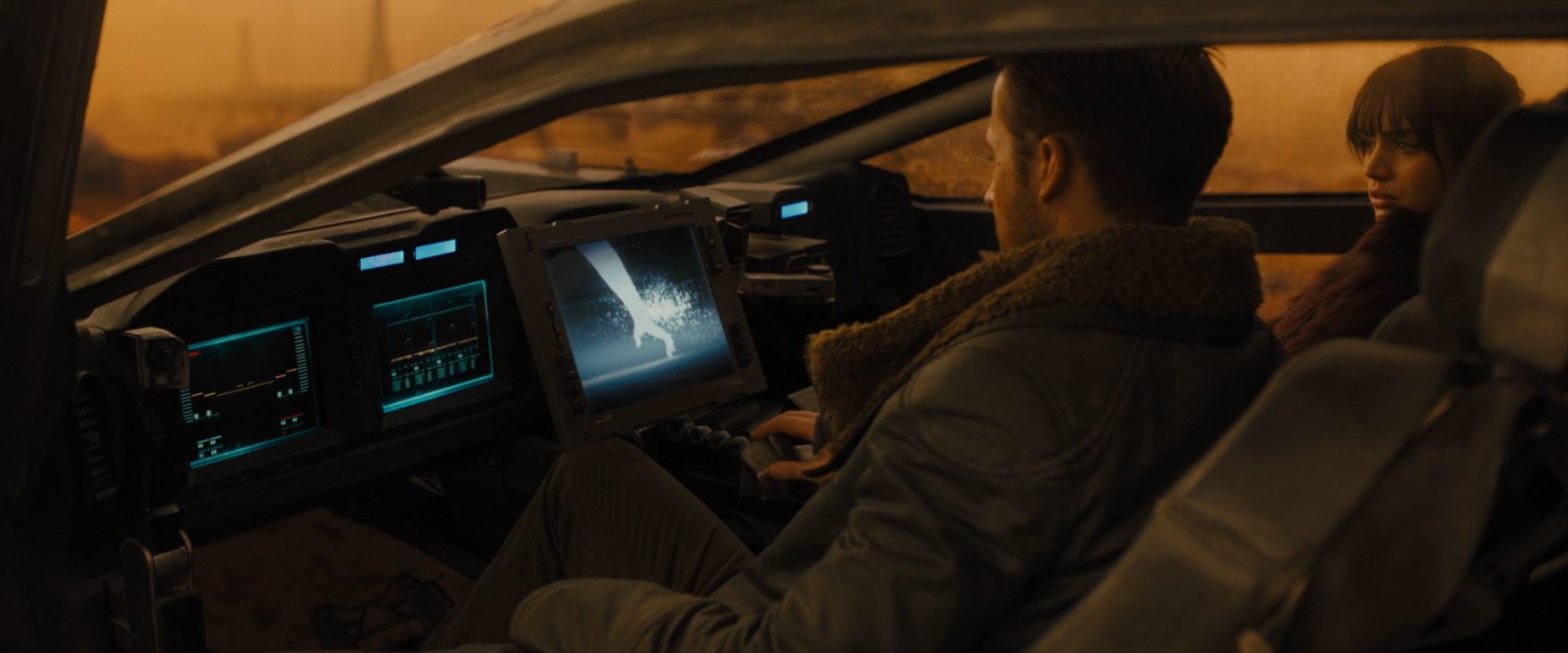
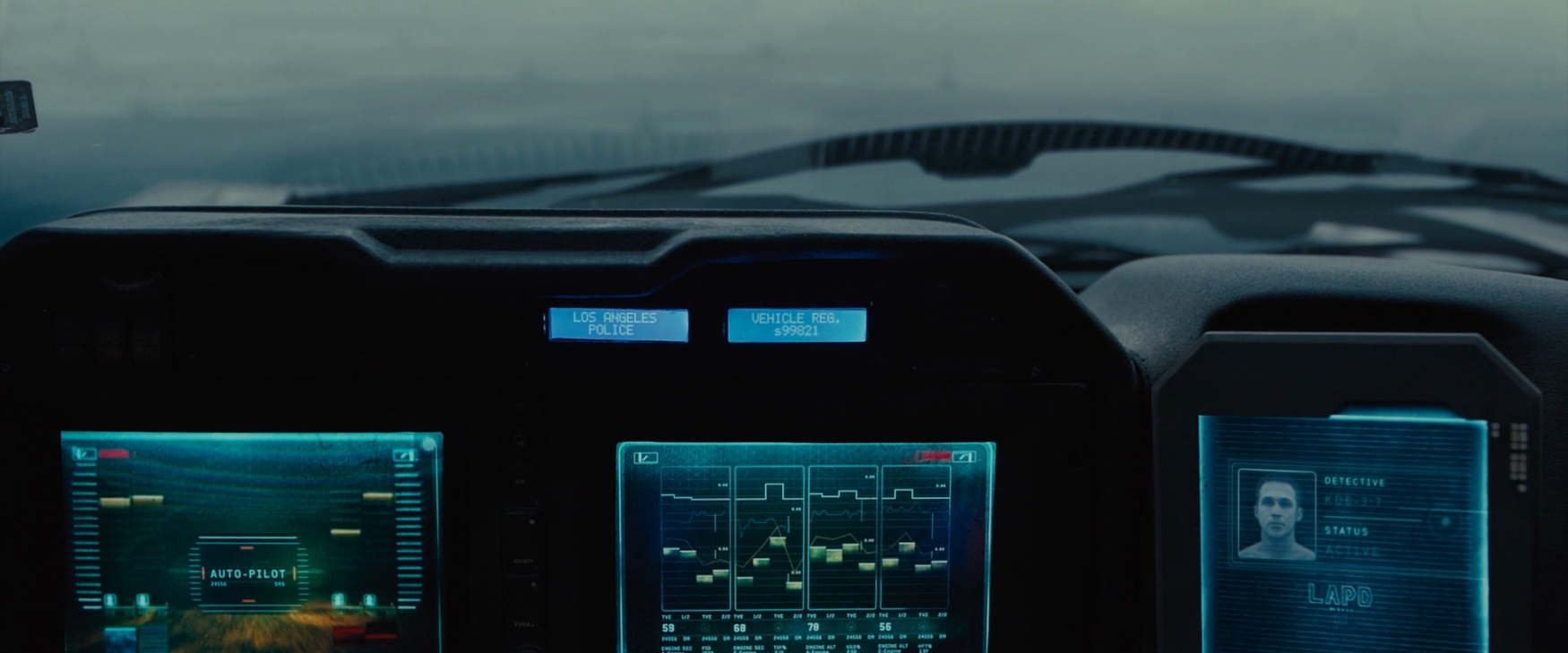
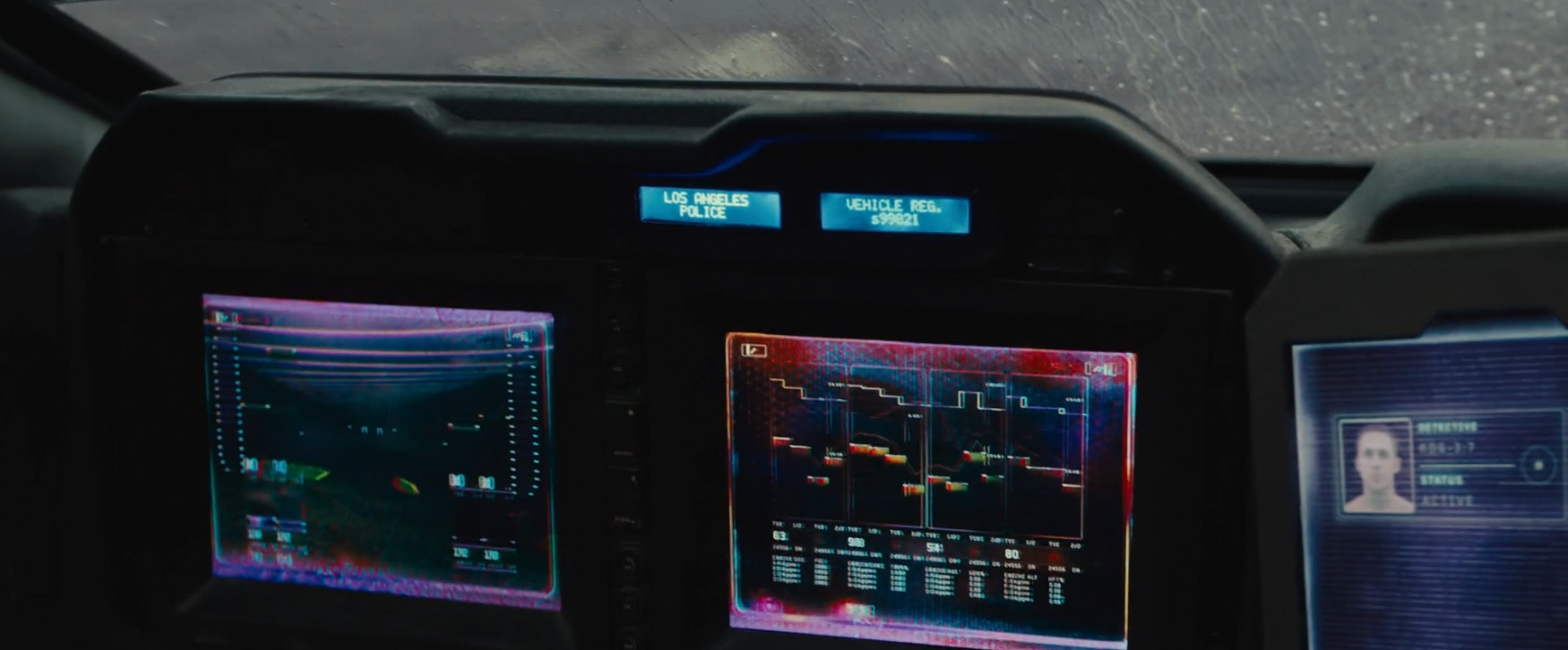
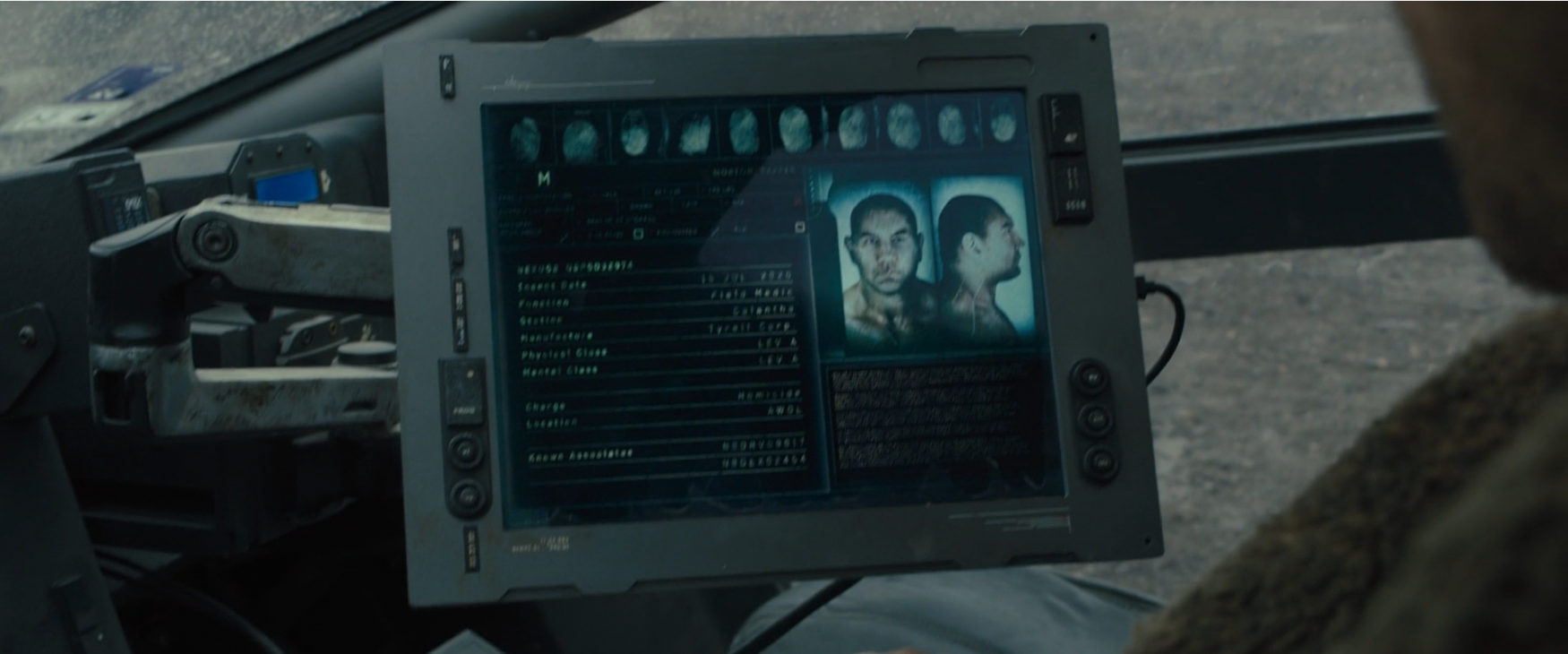
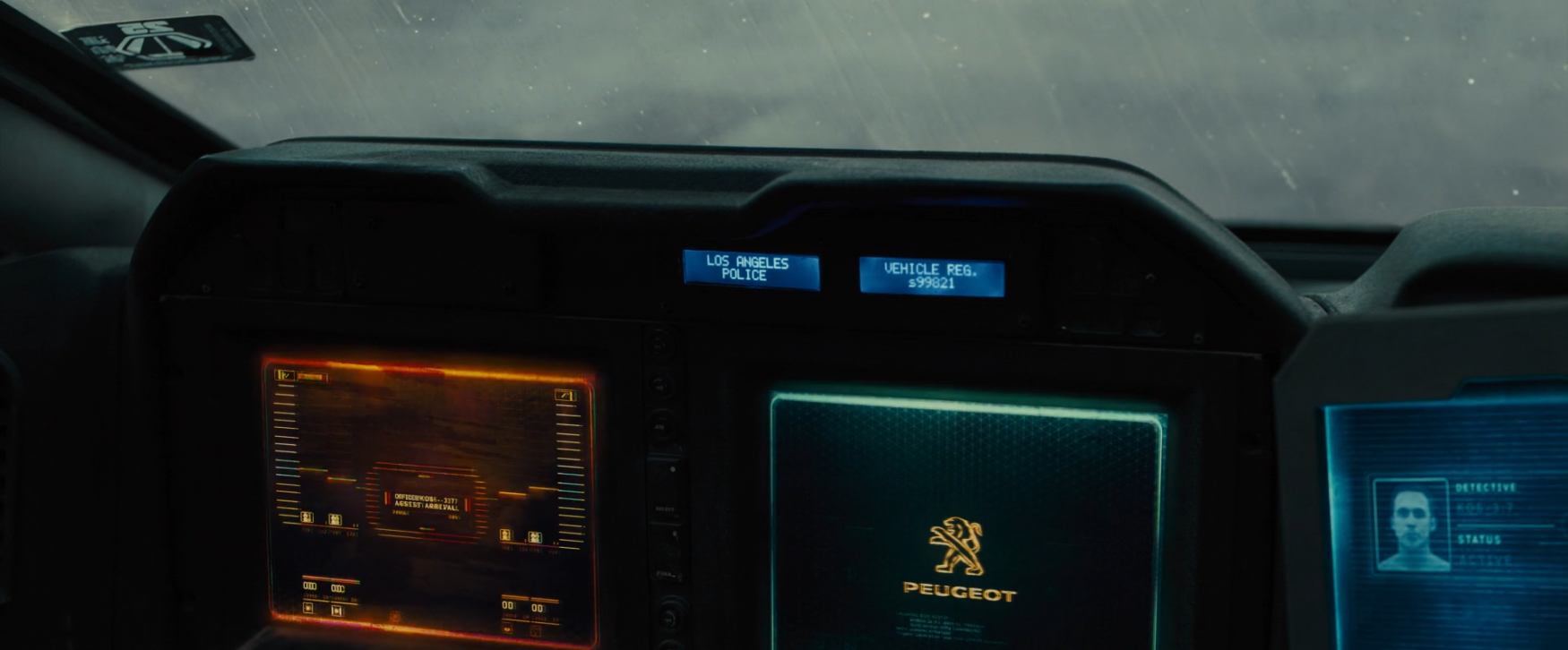
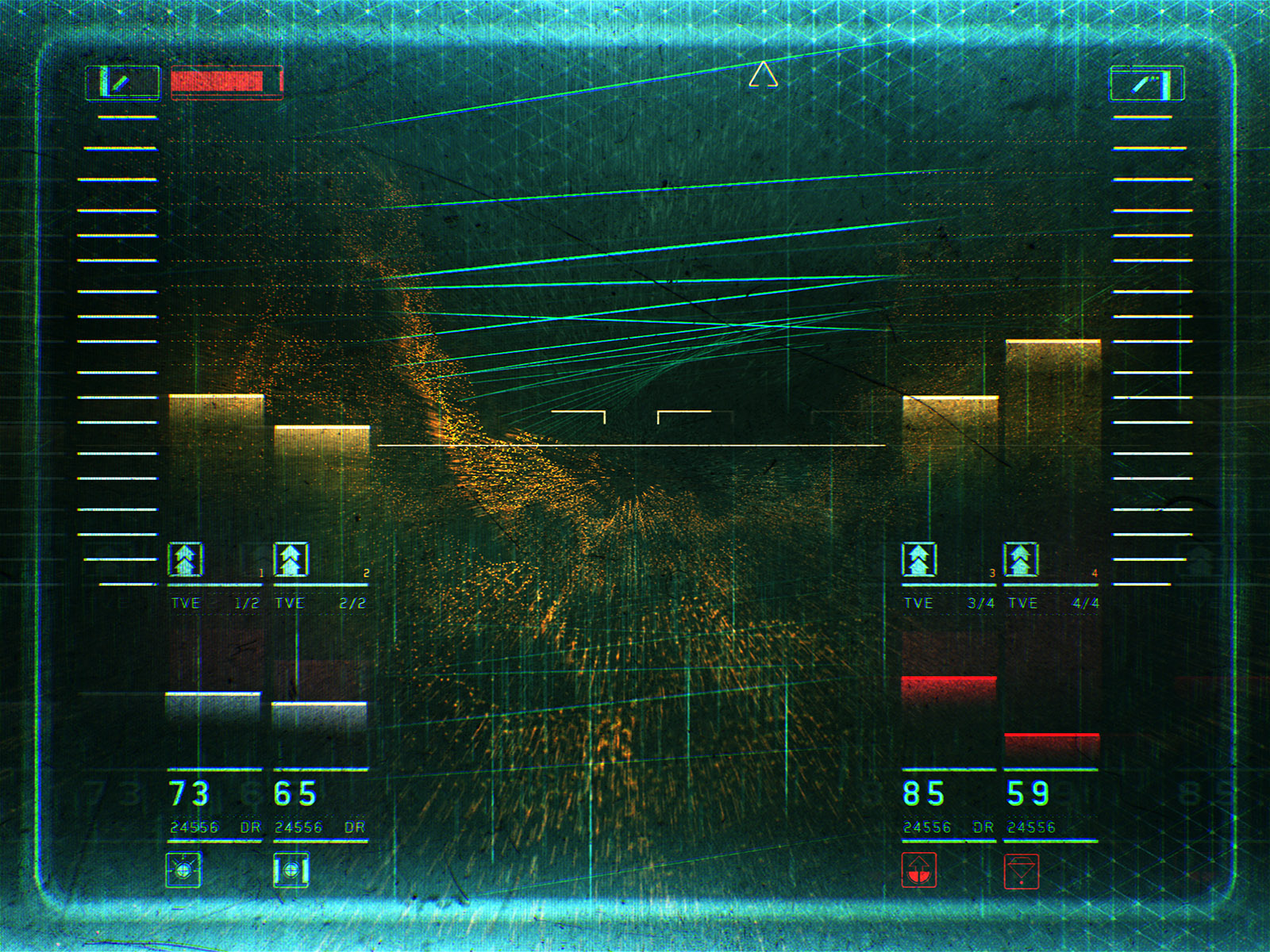
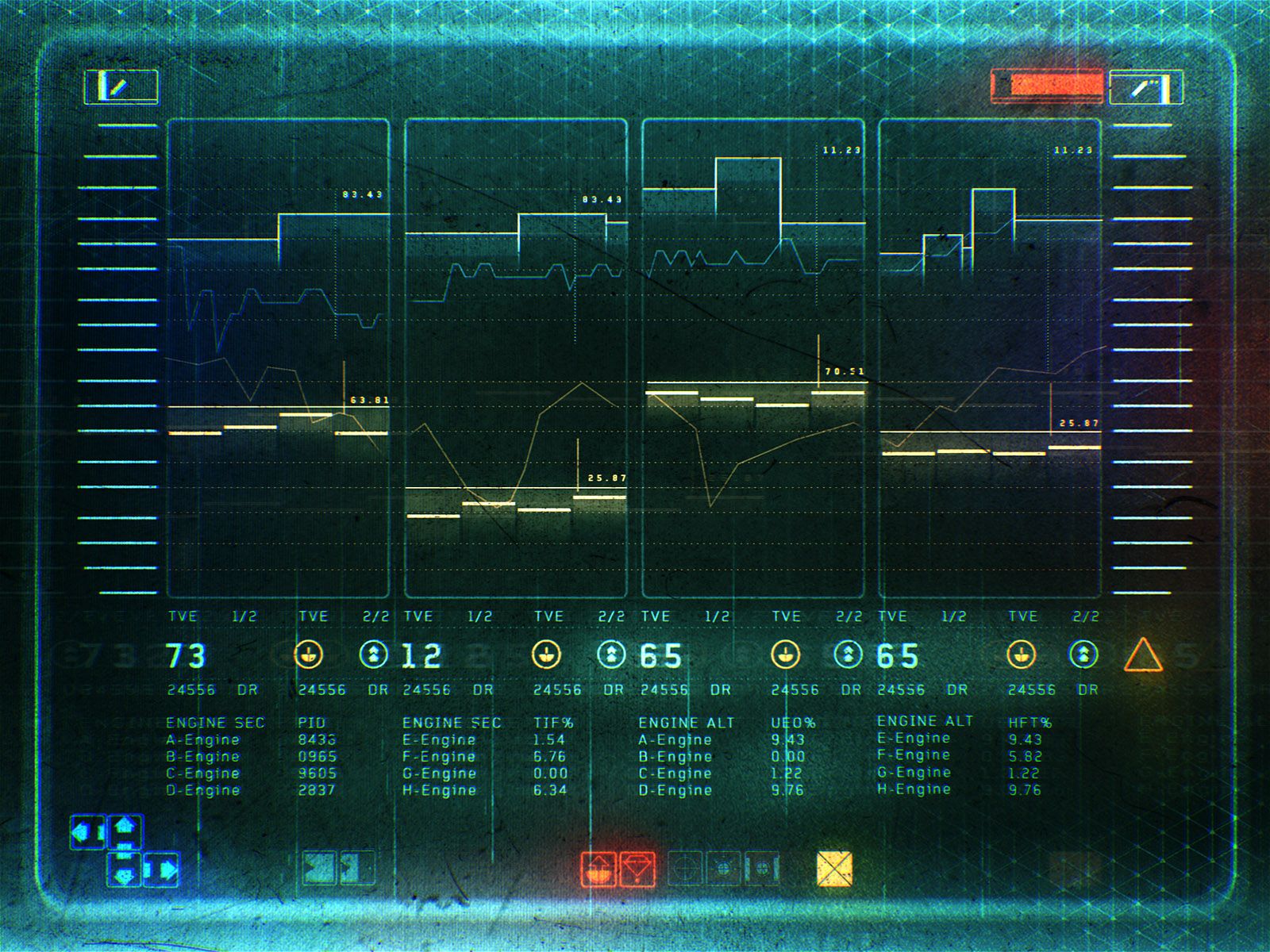
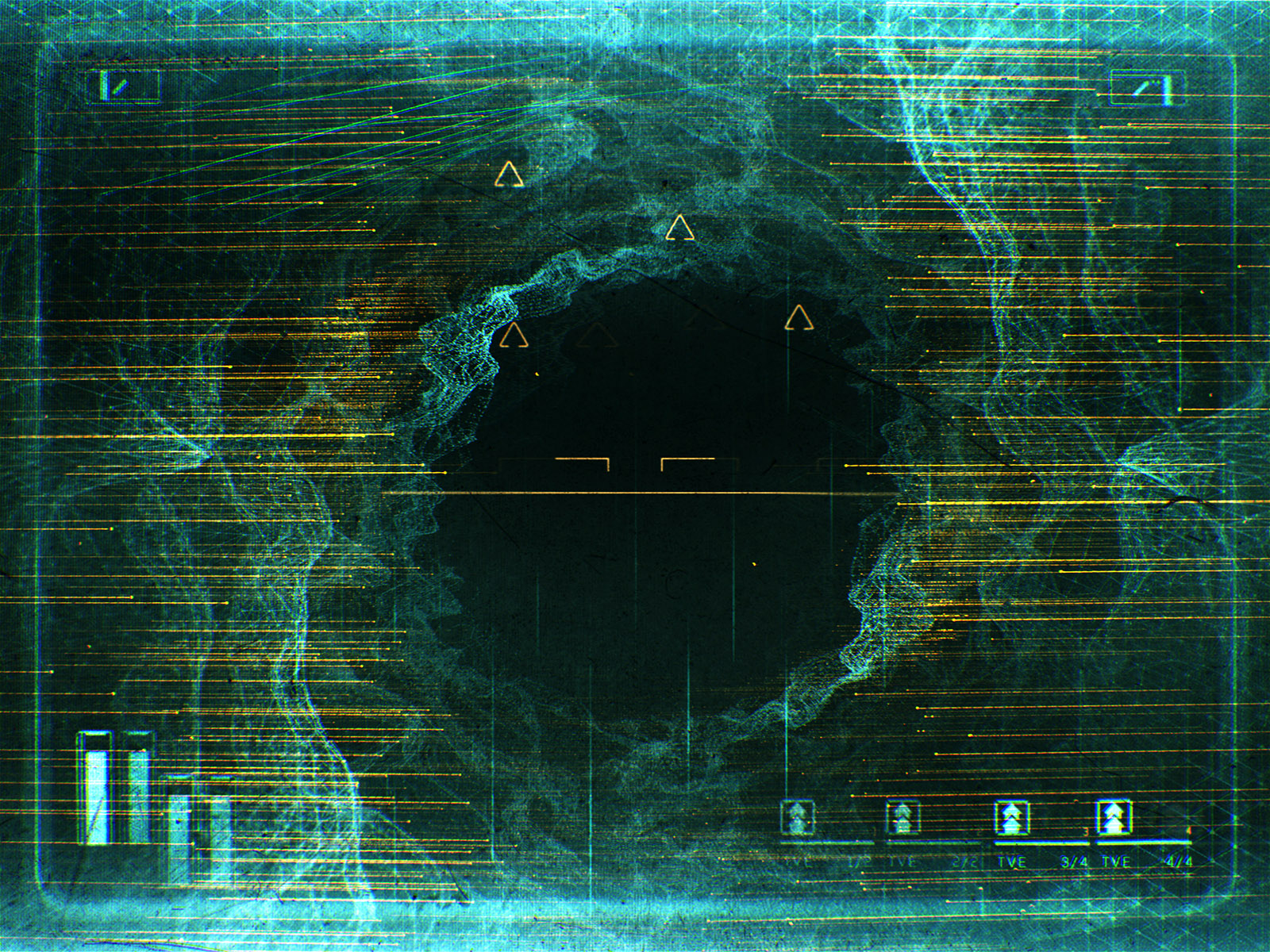
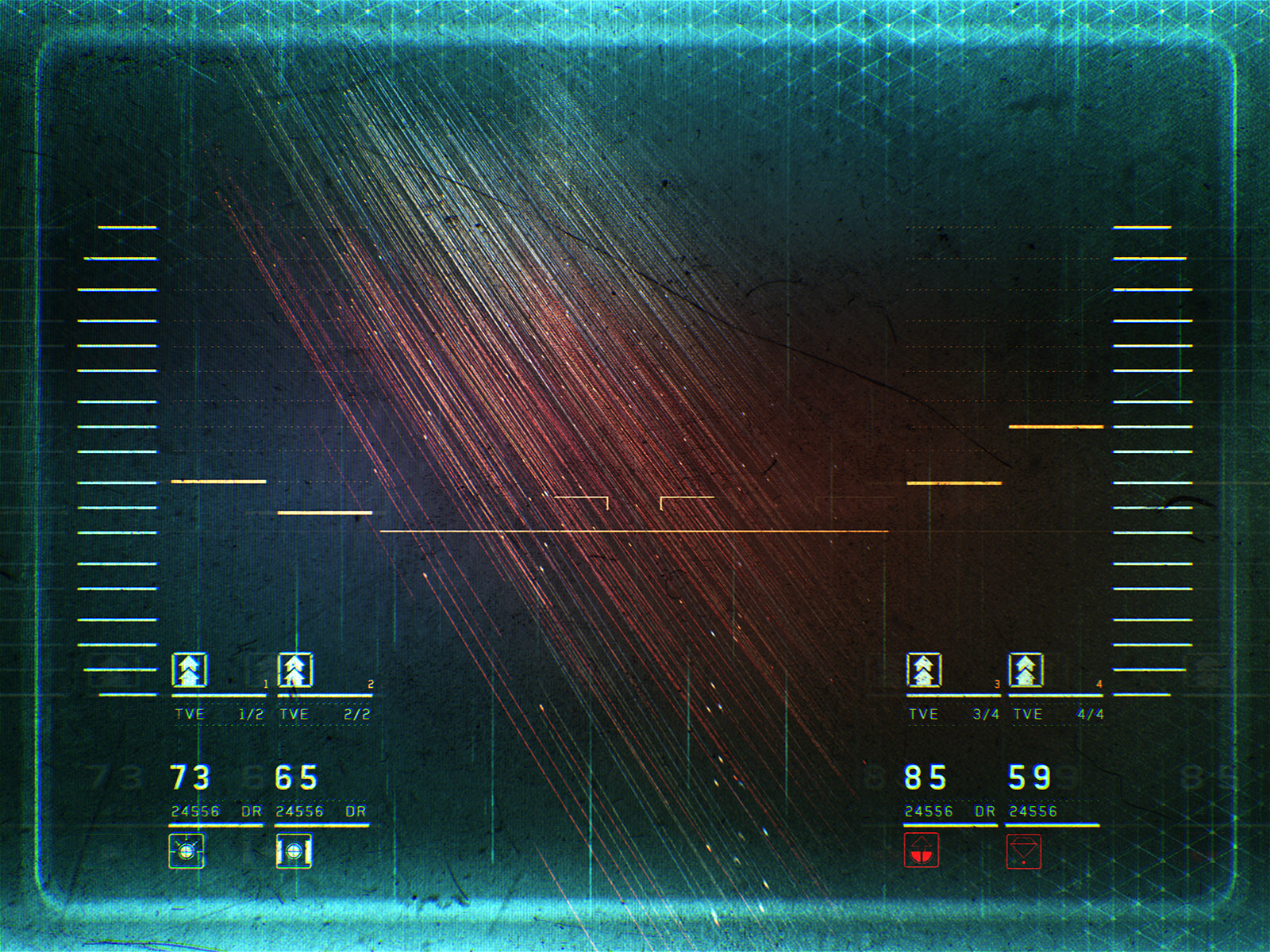
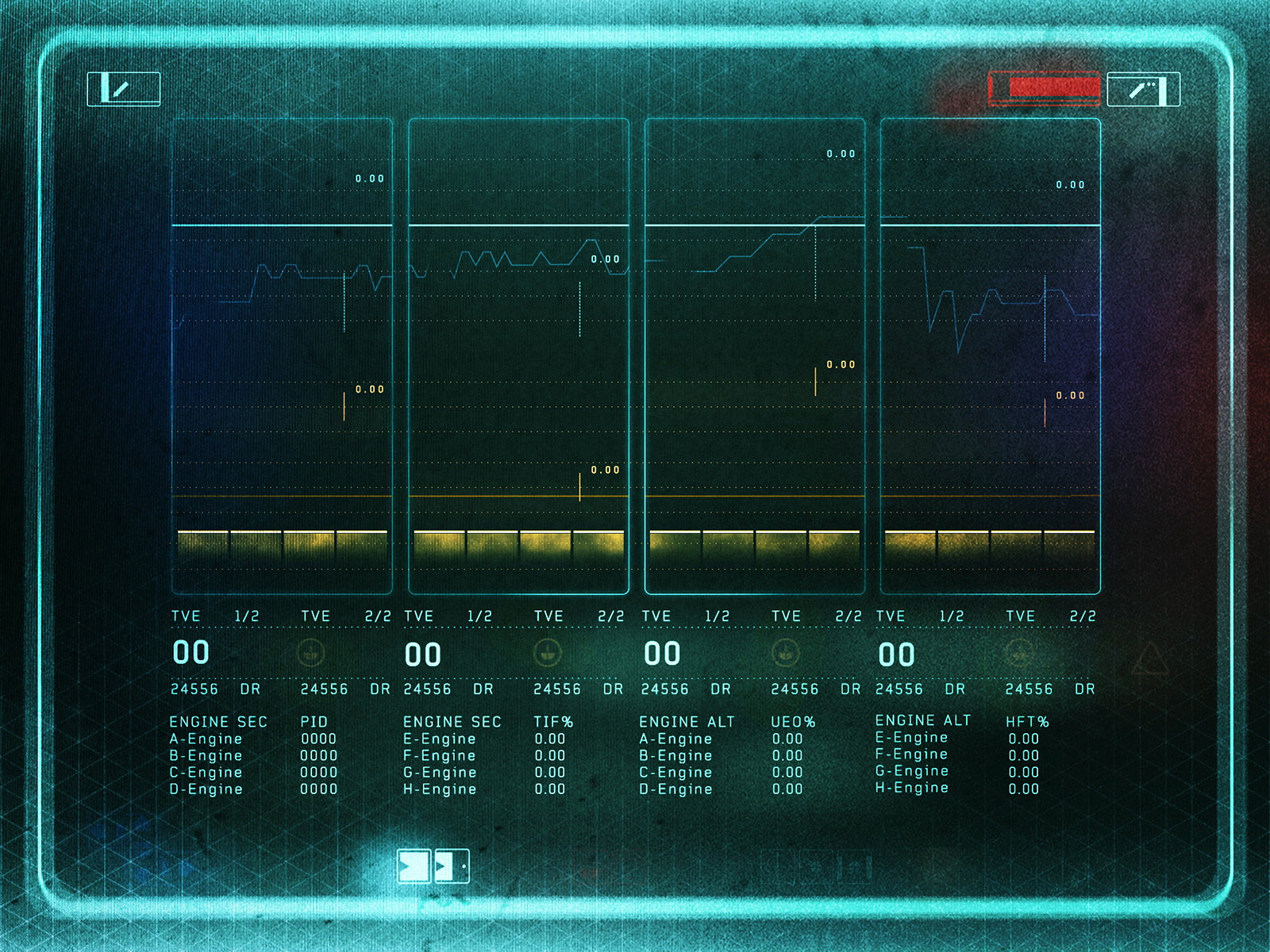
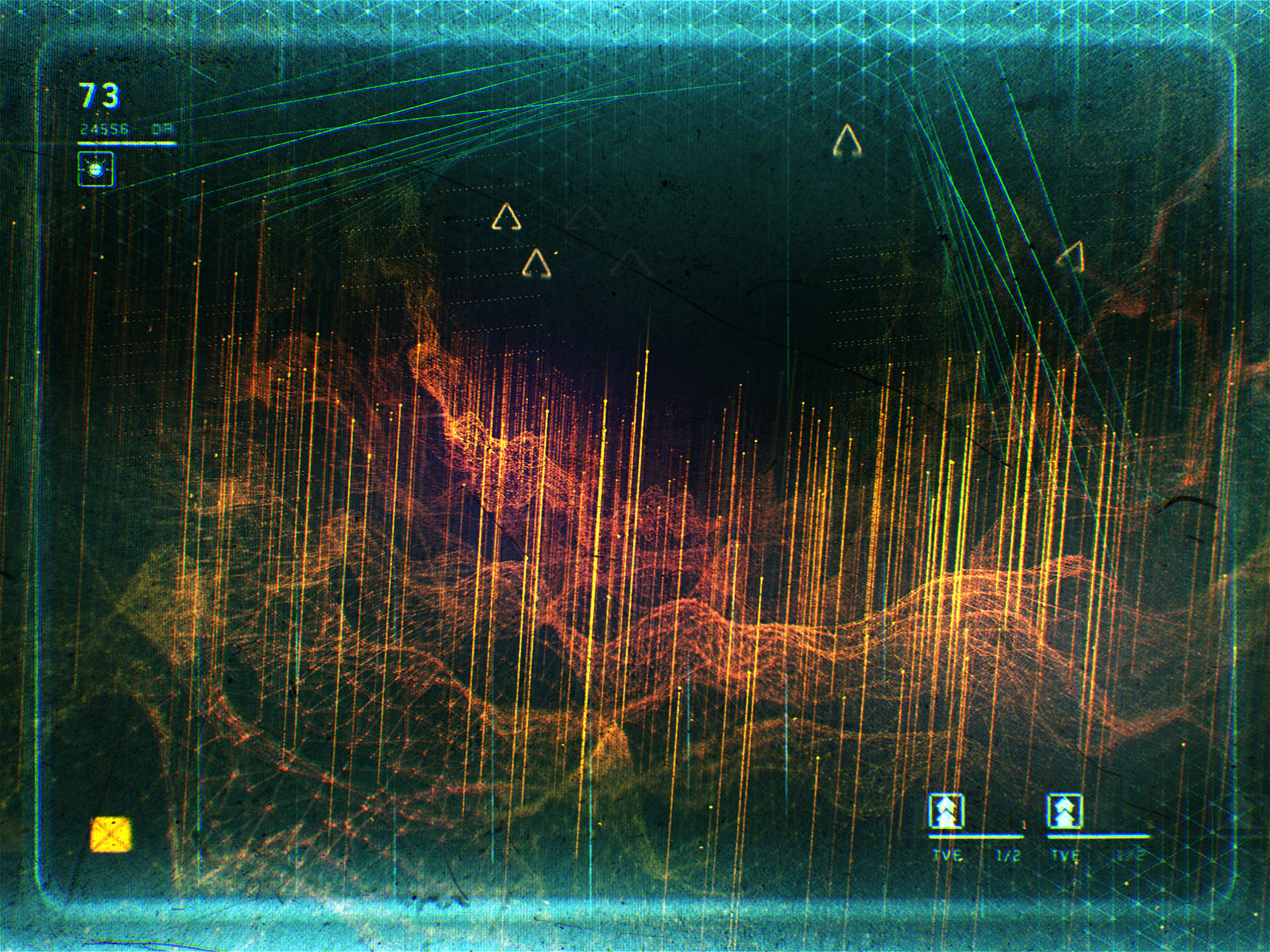
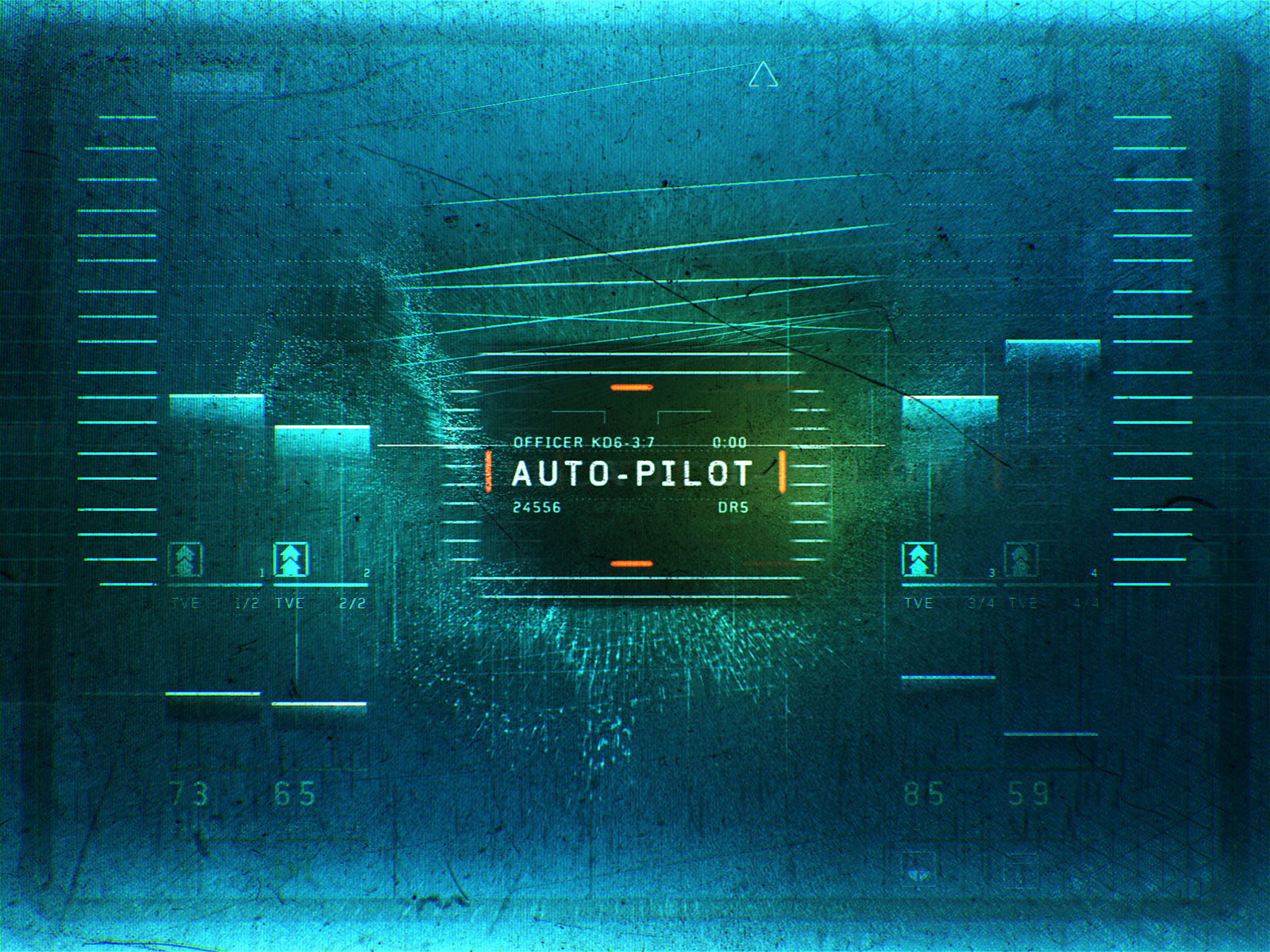
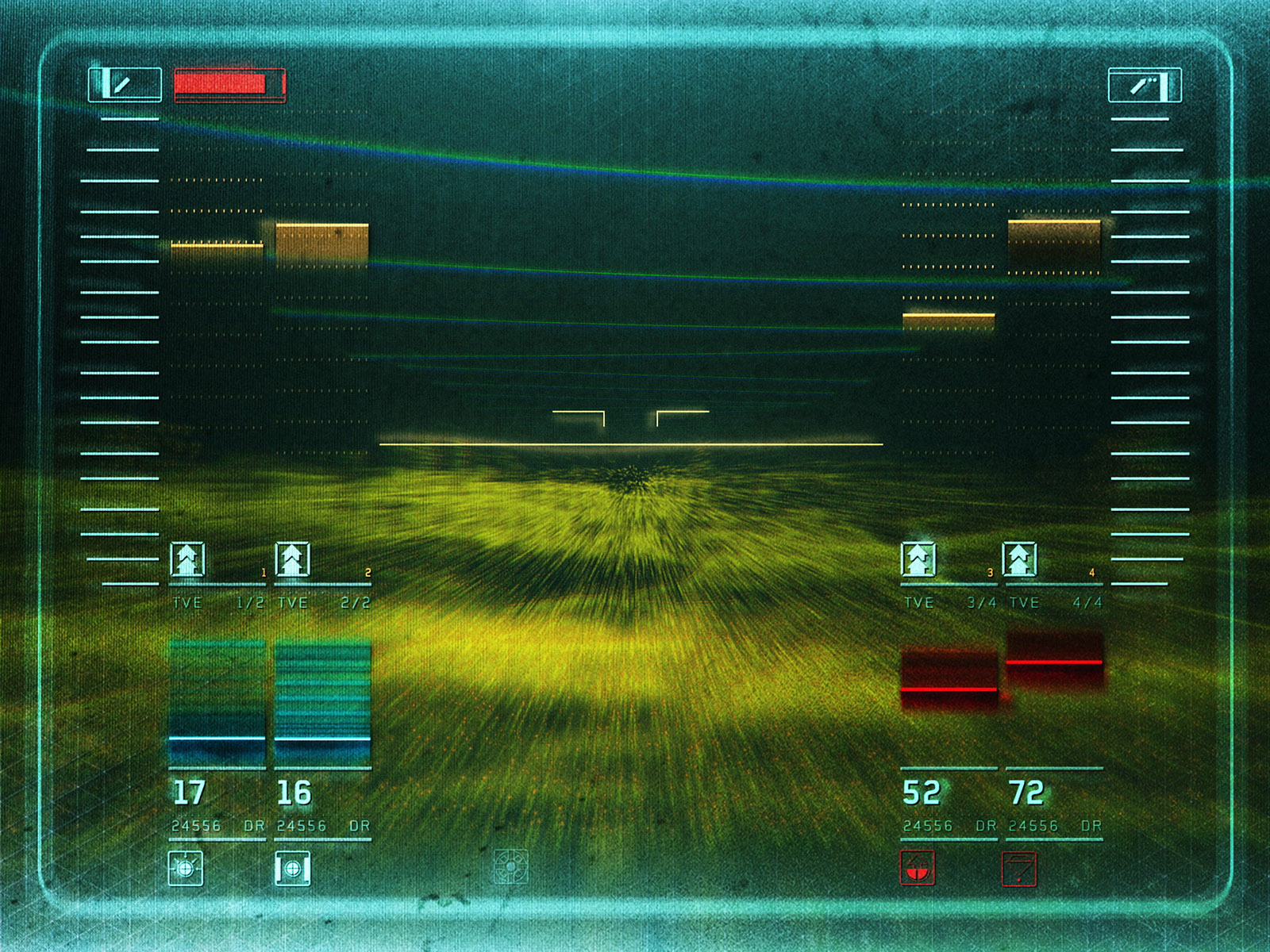
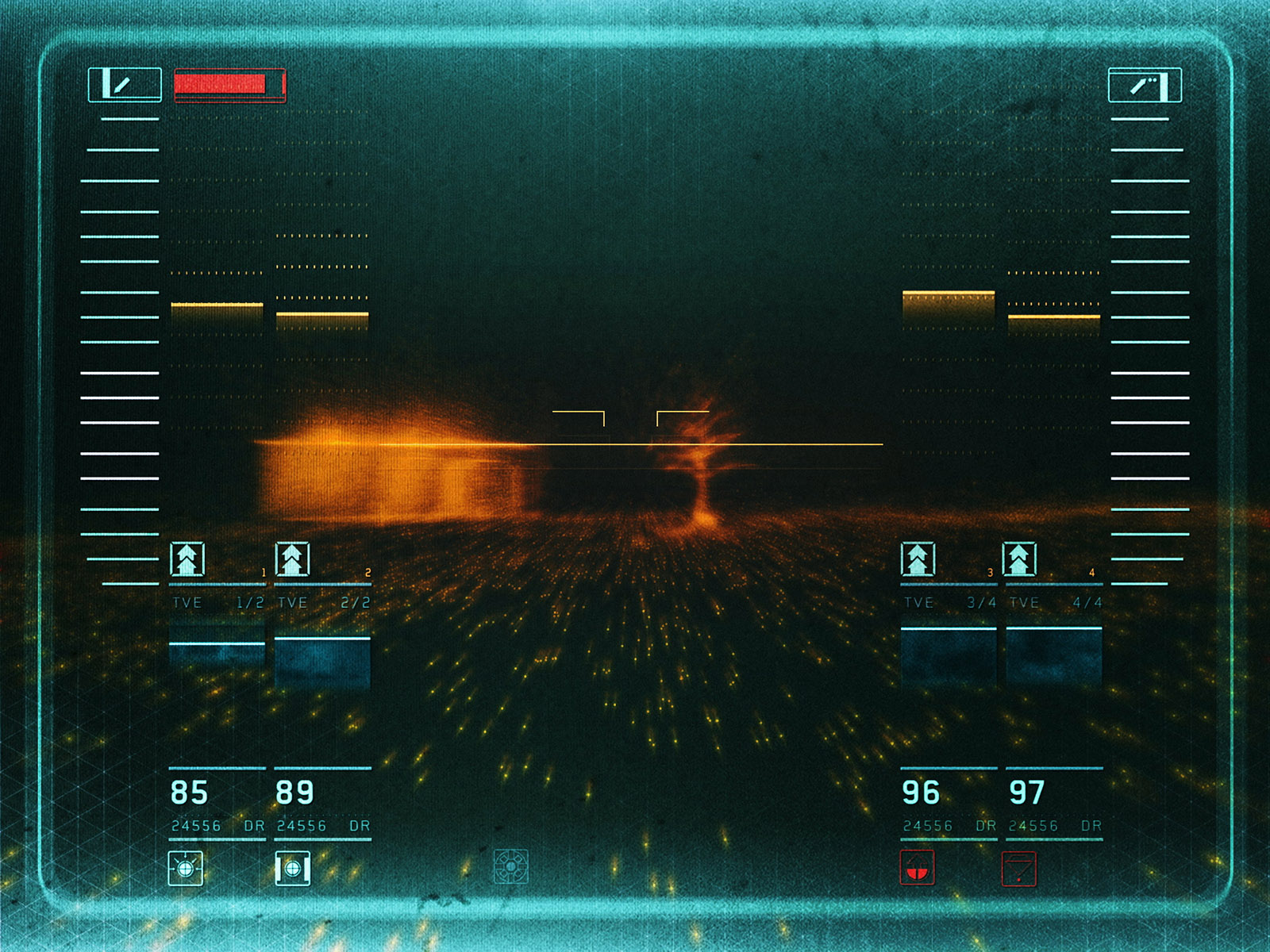
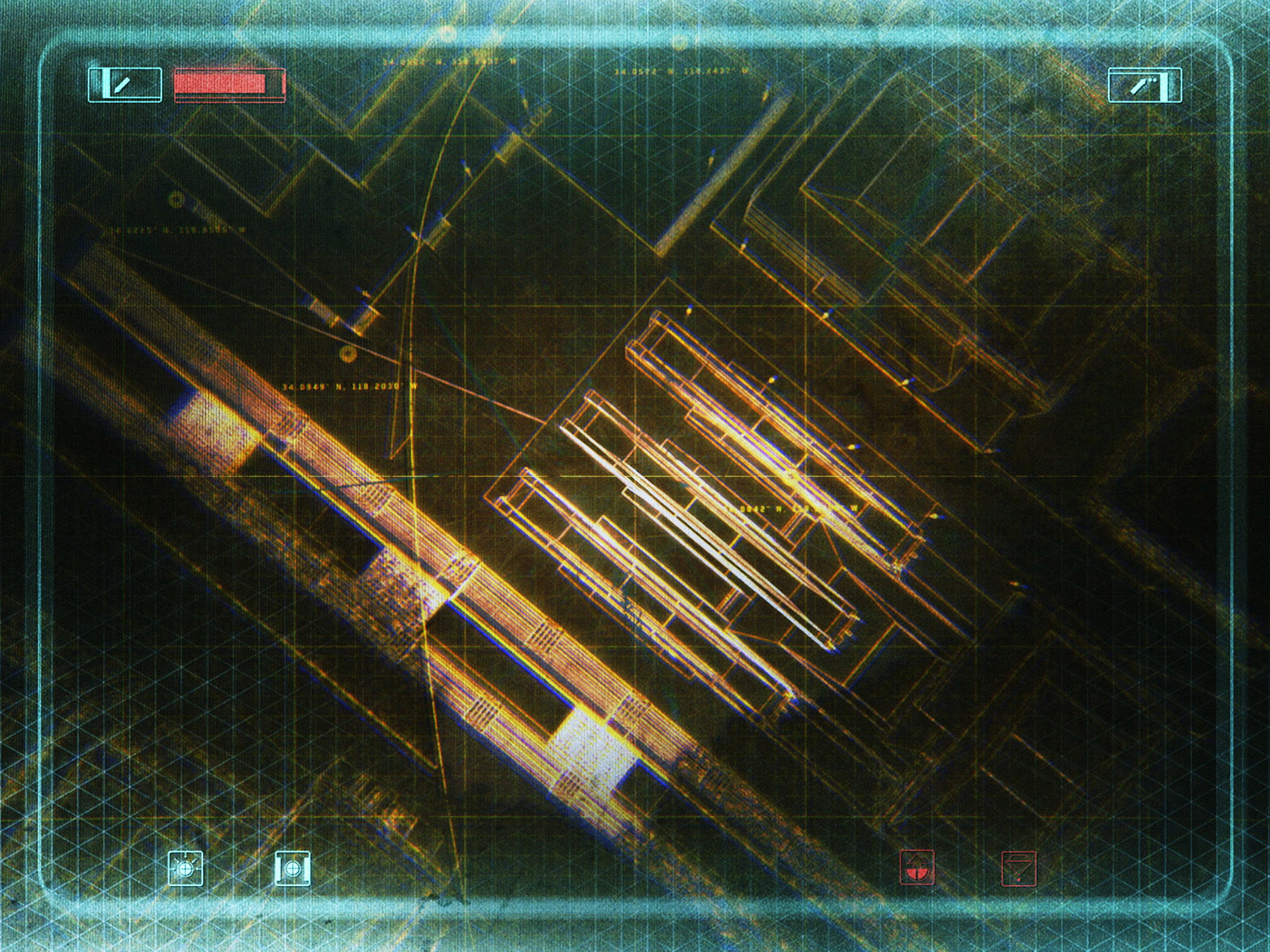
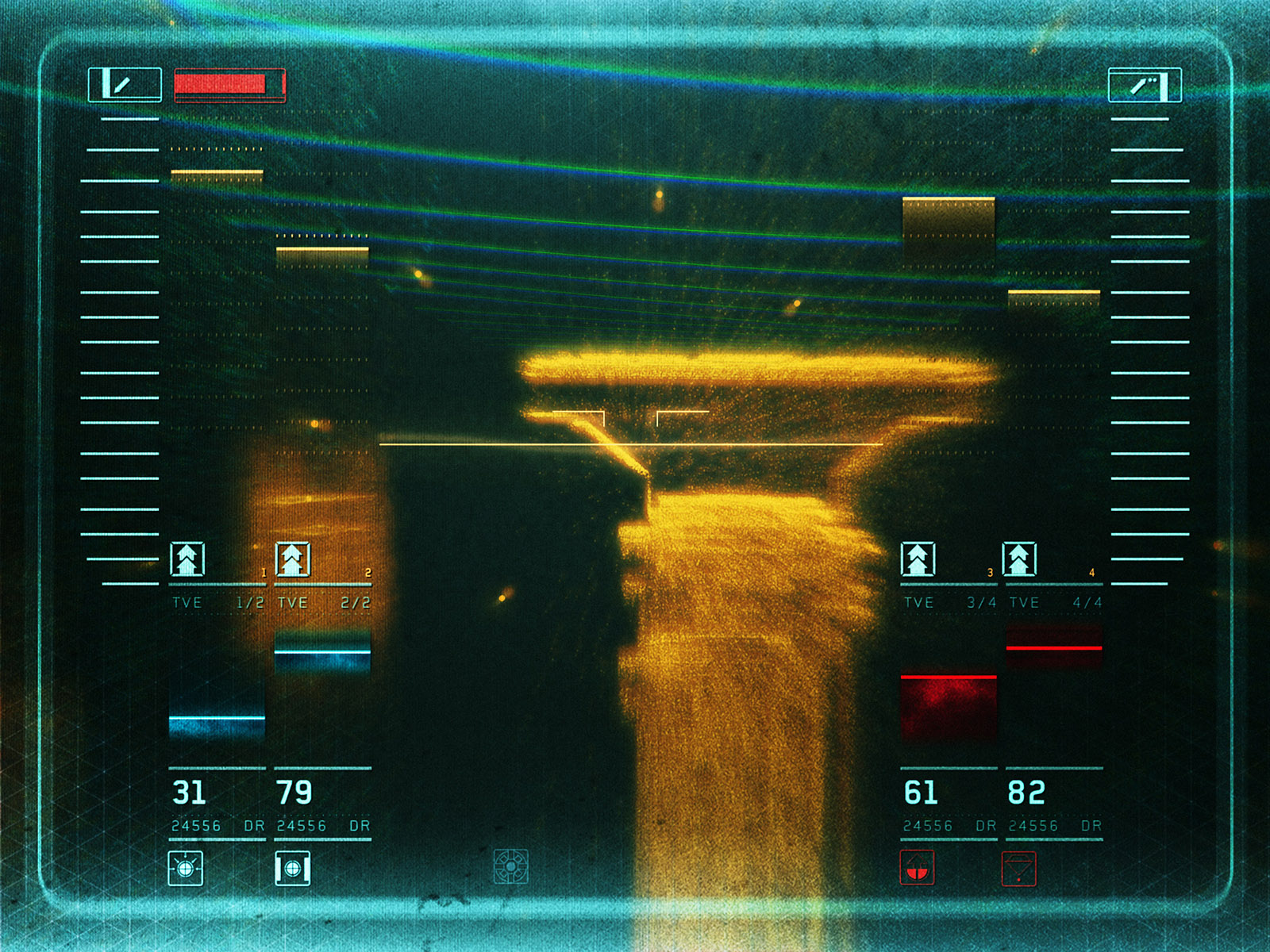
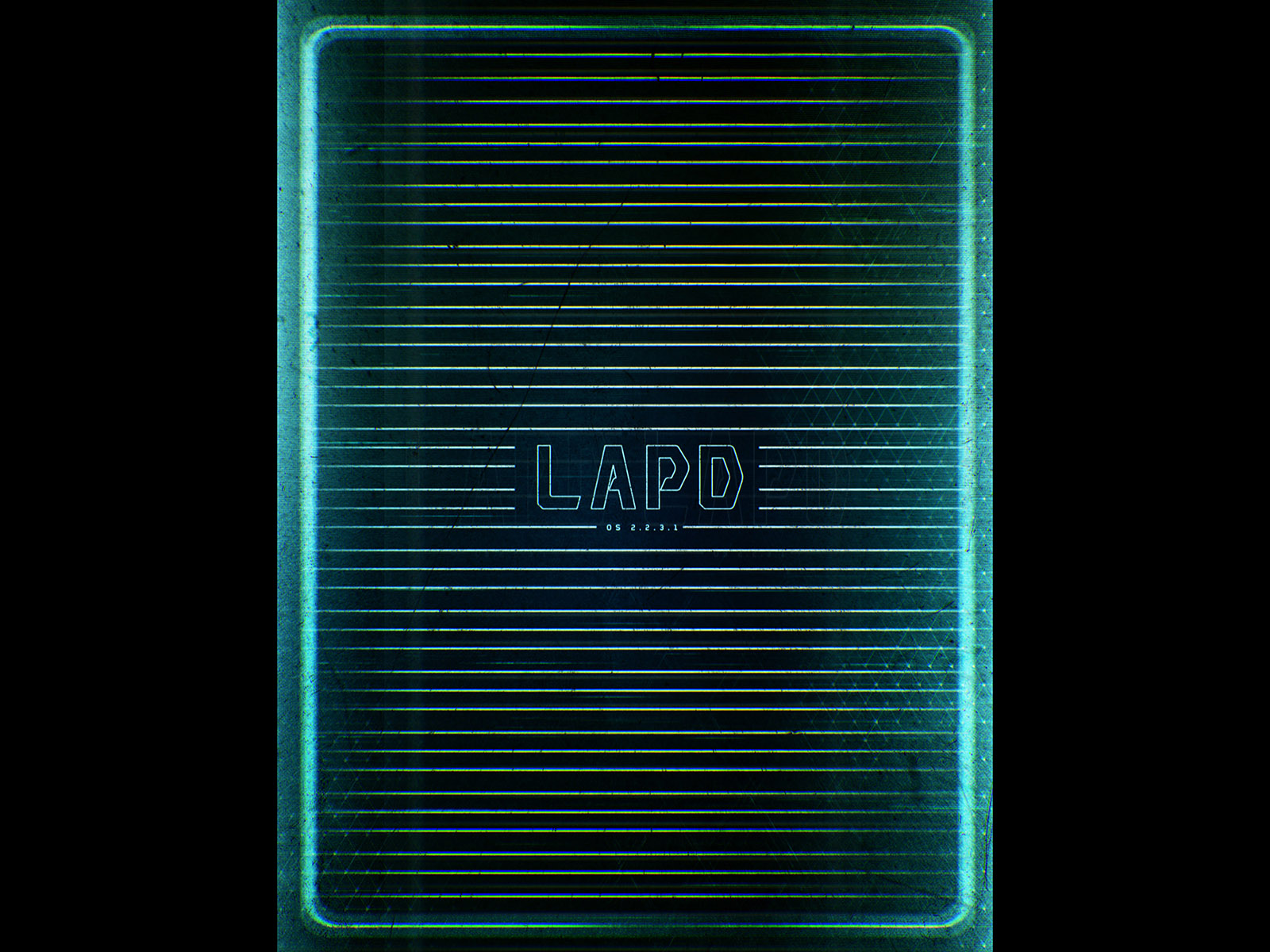
LAPD: K's Spinner Navigation and Pilotfish
The LAPD’s technology in 2049 is functional, with clear military references. Navigation screens blend geographic details with minimalistic iconography. The geometric detail of the black and white scans sent from the pilotfish drone contrast sharply with cockpit displays, reminding the audience of advanced capability in surveillance and reconnaissance.
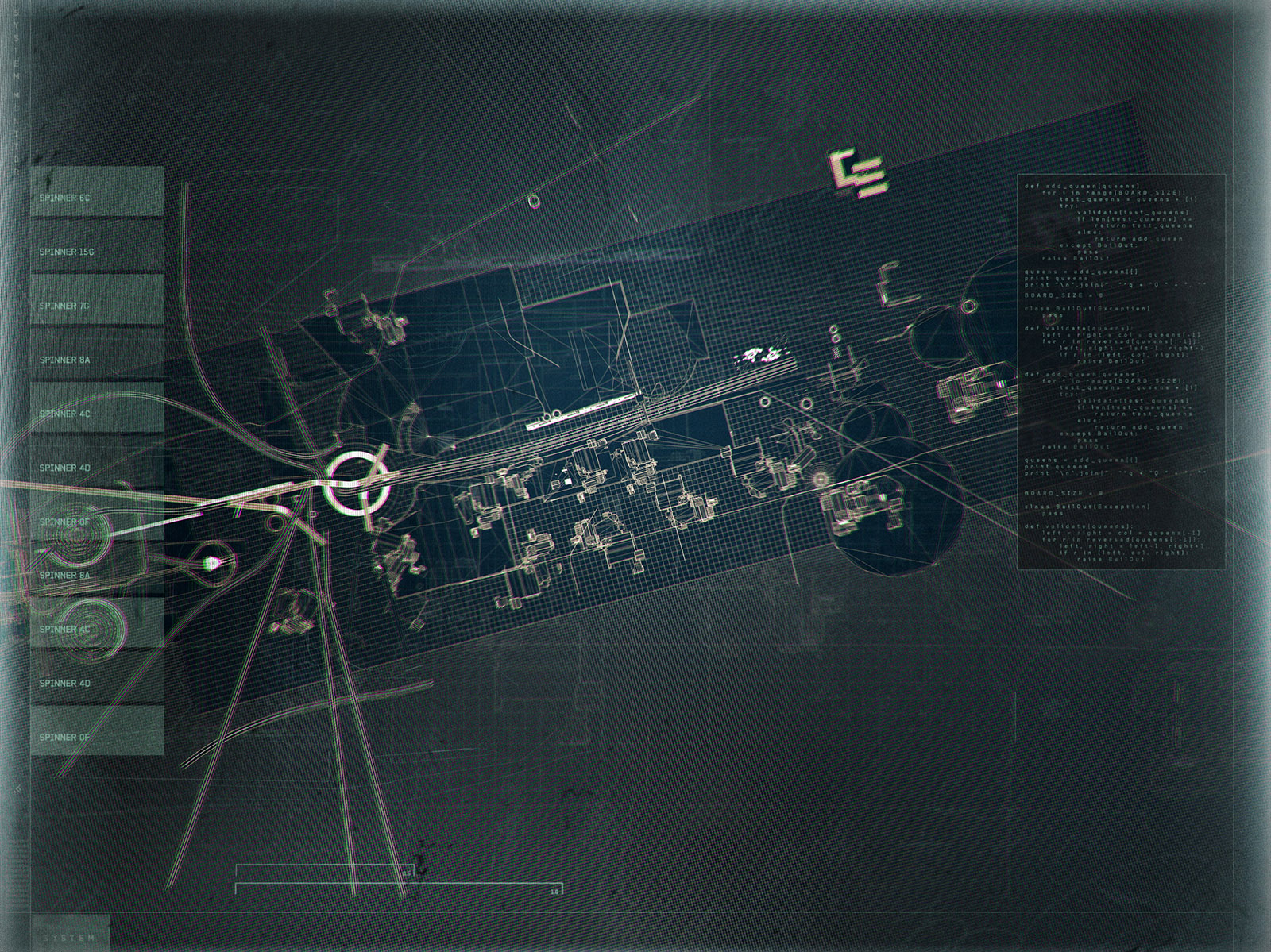
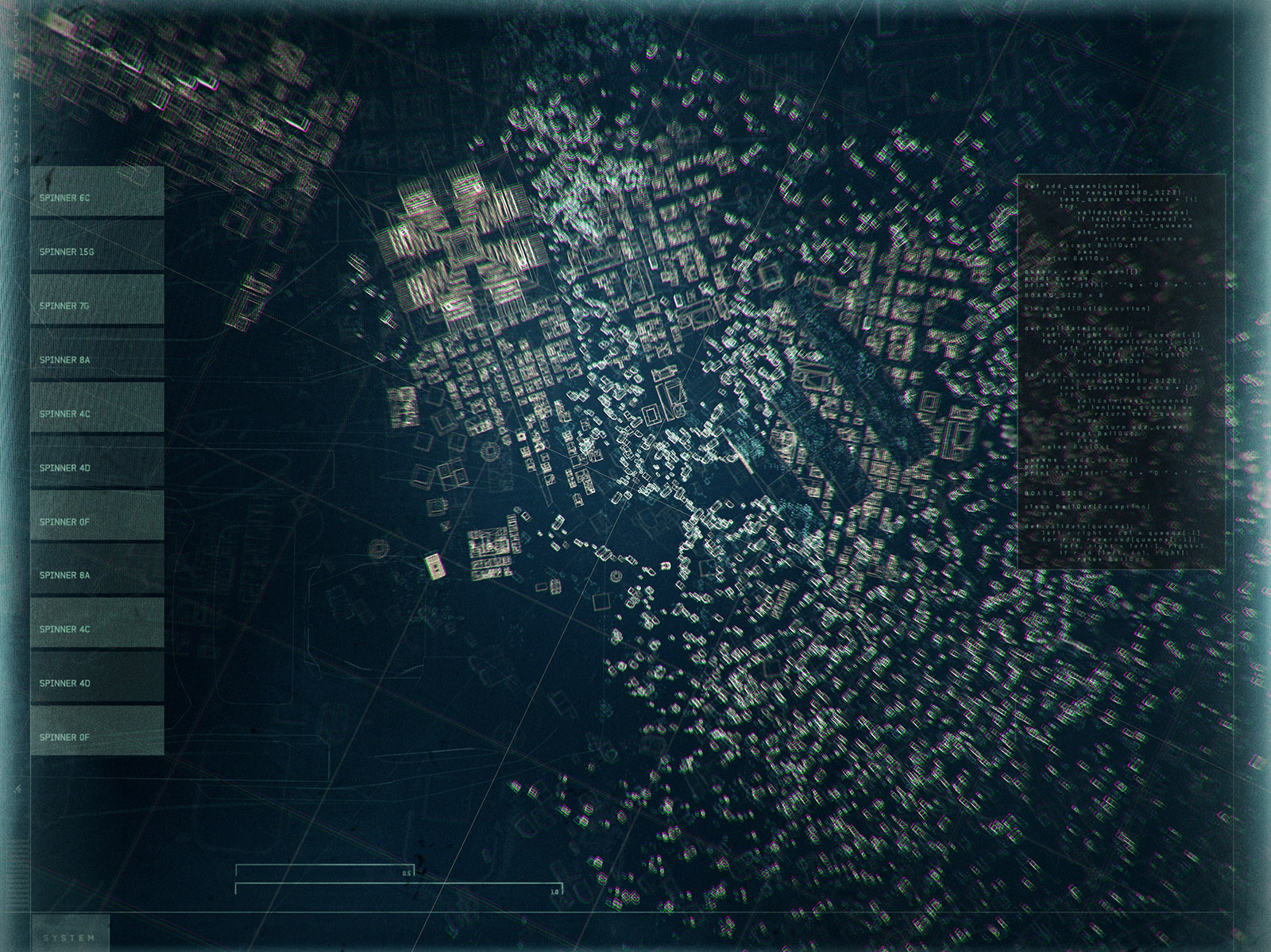
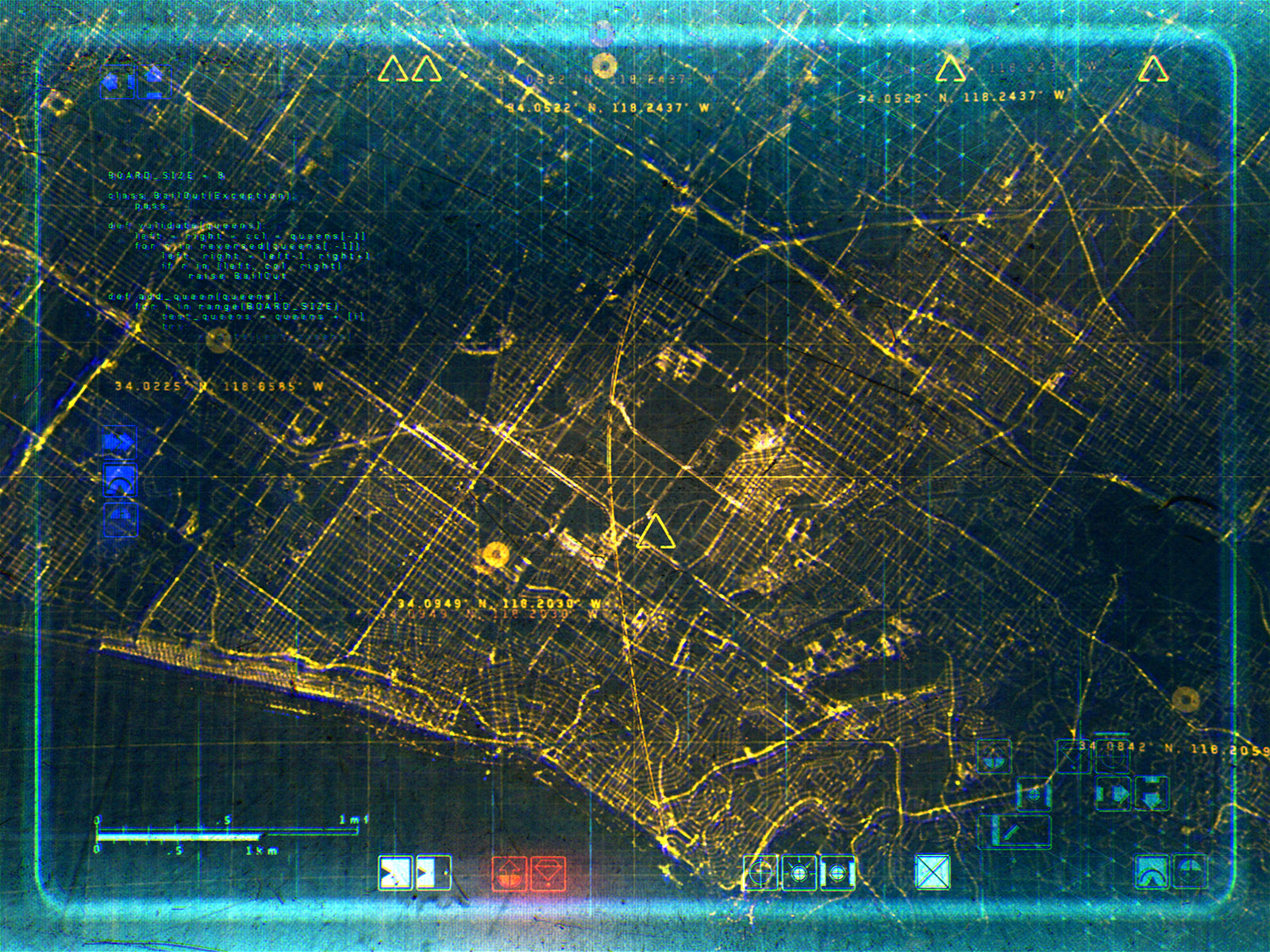
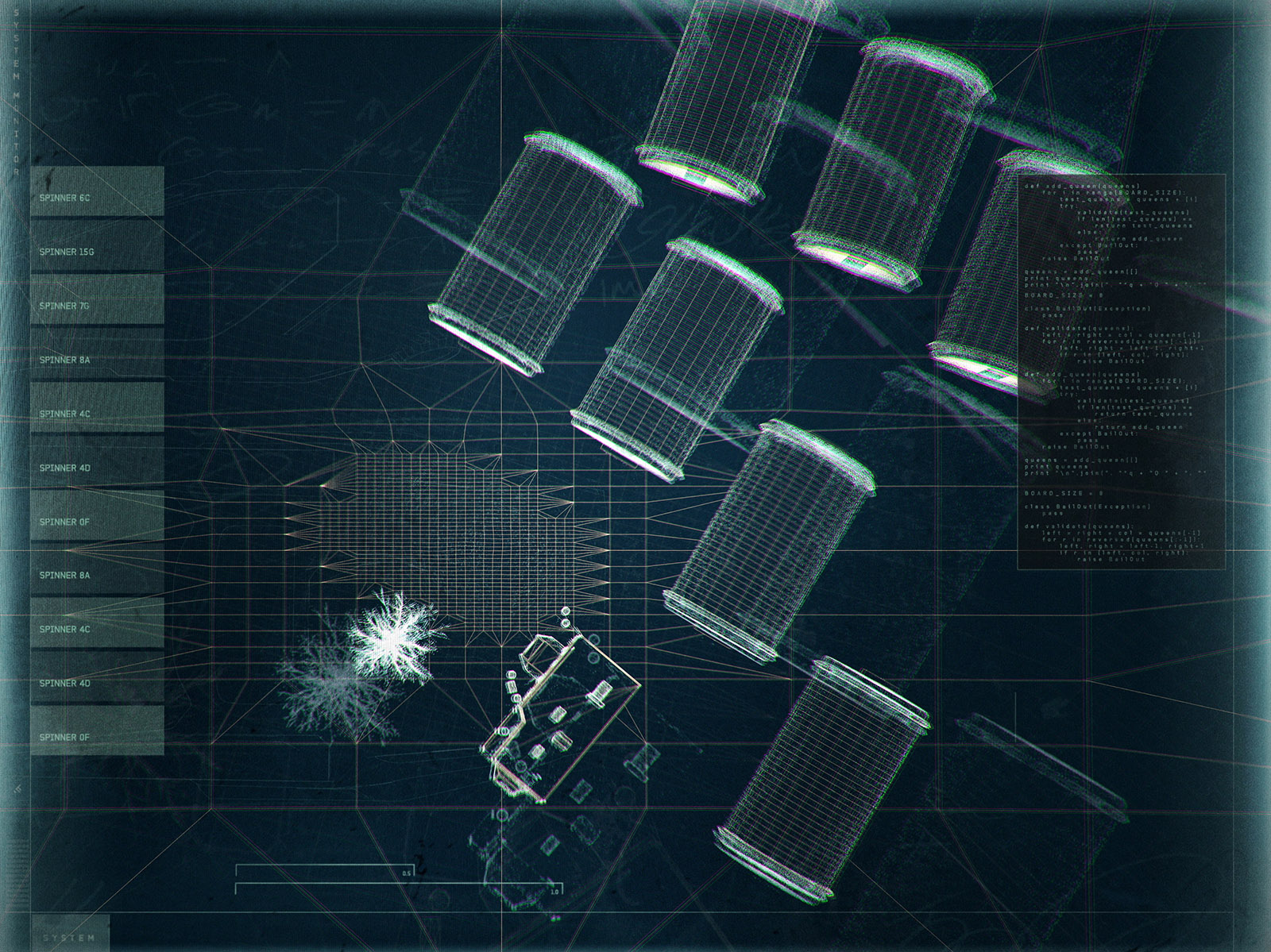
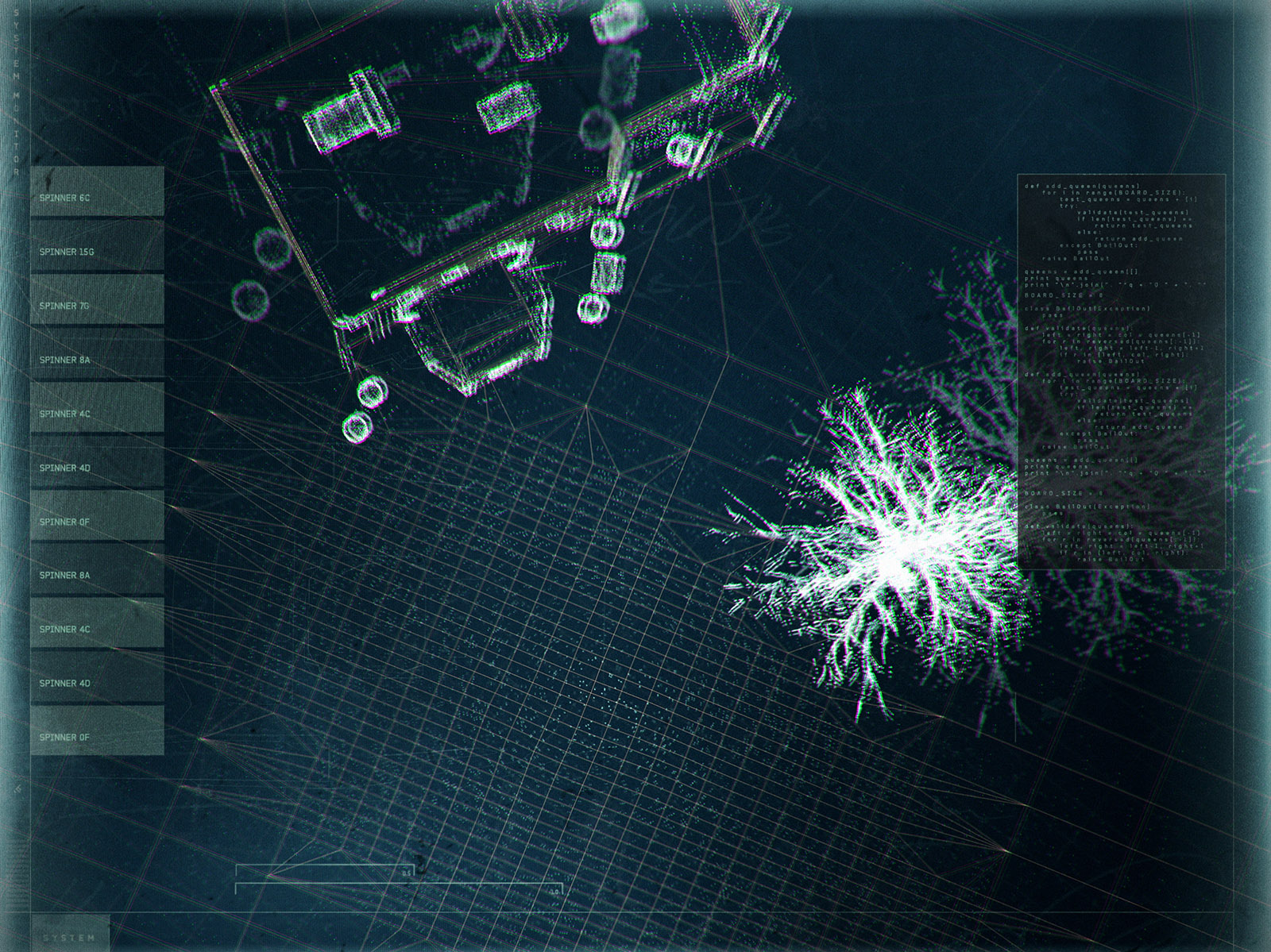
LAPD: Joshi's Office
As K’s superior, Sergeant Joshi’s technology reflects her responsibility and status in the LAPD. Screens include a secure facial recognition system, location of active spinners, status of agents and officers, pilotfish feeds and suspect profiles. The visual language is clean and utilitarian and the limited colour palette and screen burn suggests old technology consistent with Villeneuve’s bleak universe.
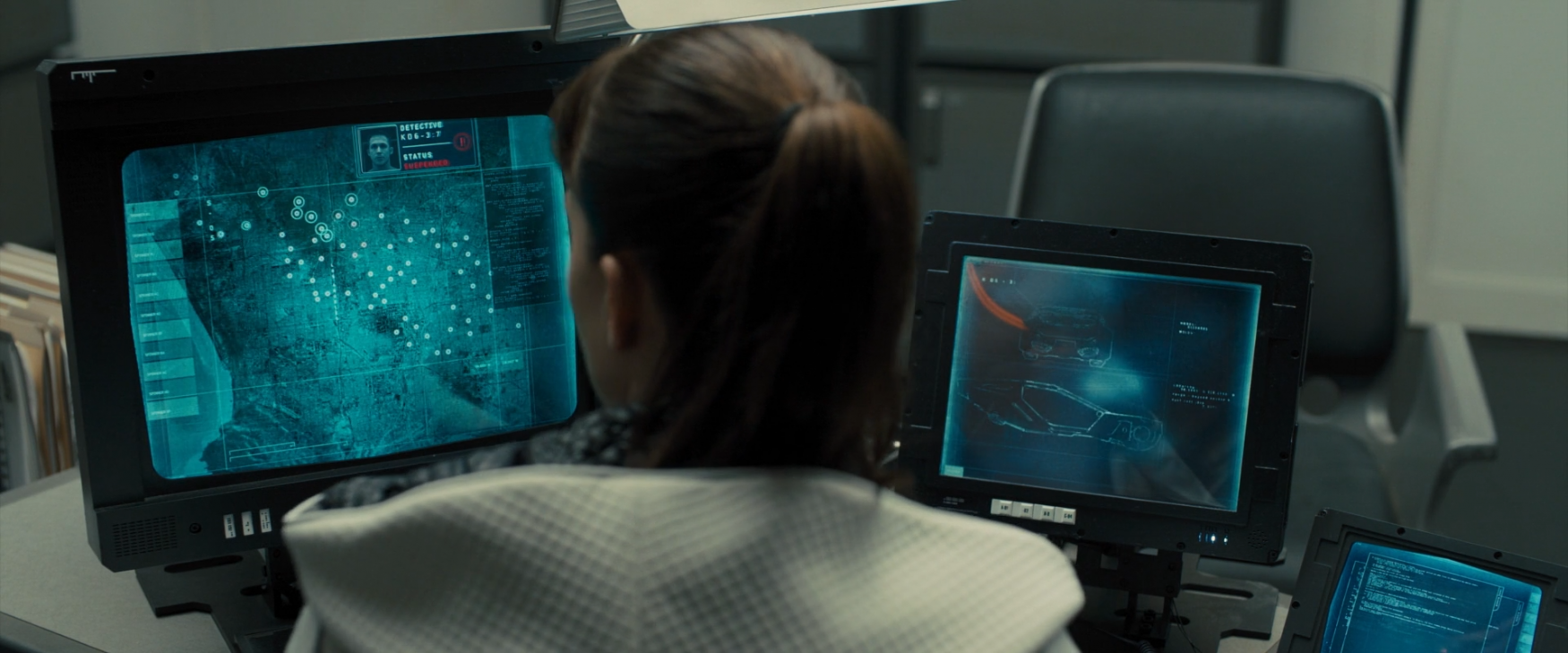
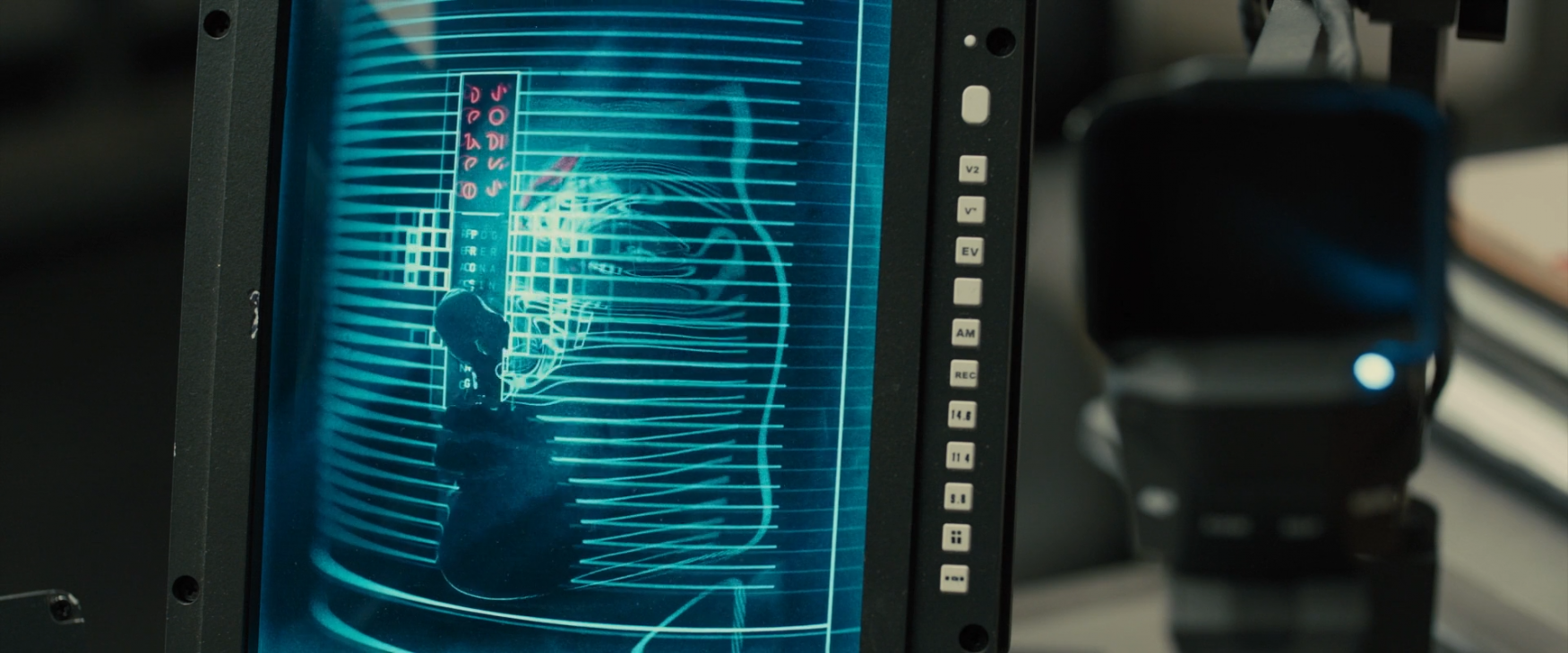
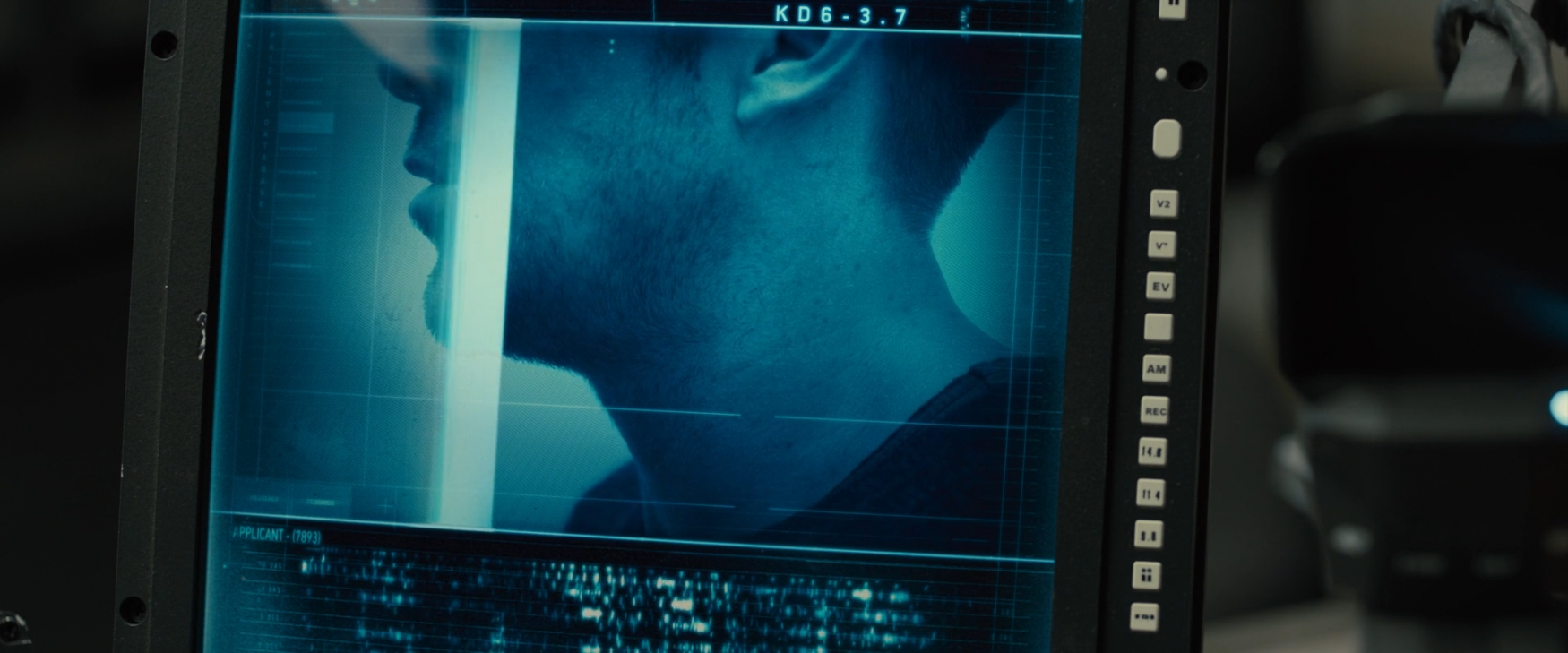
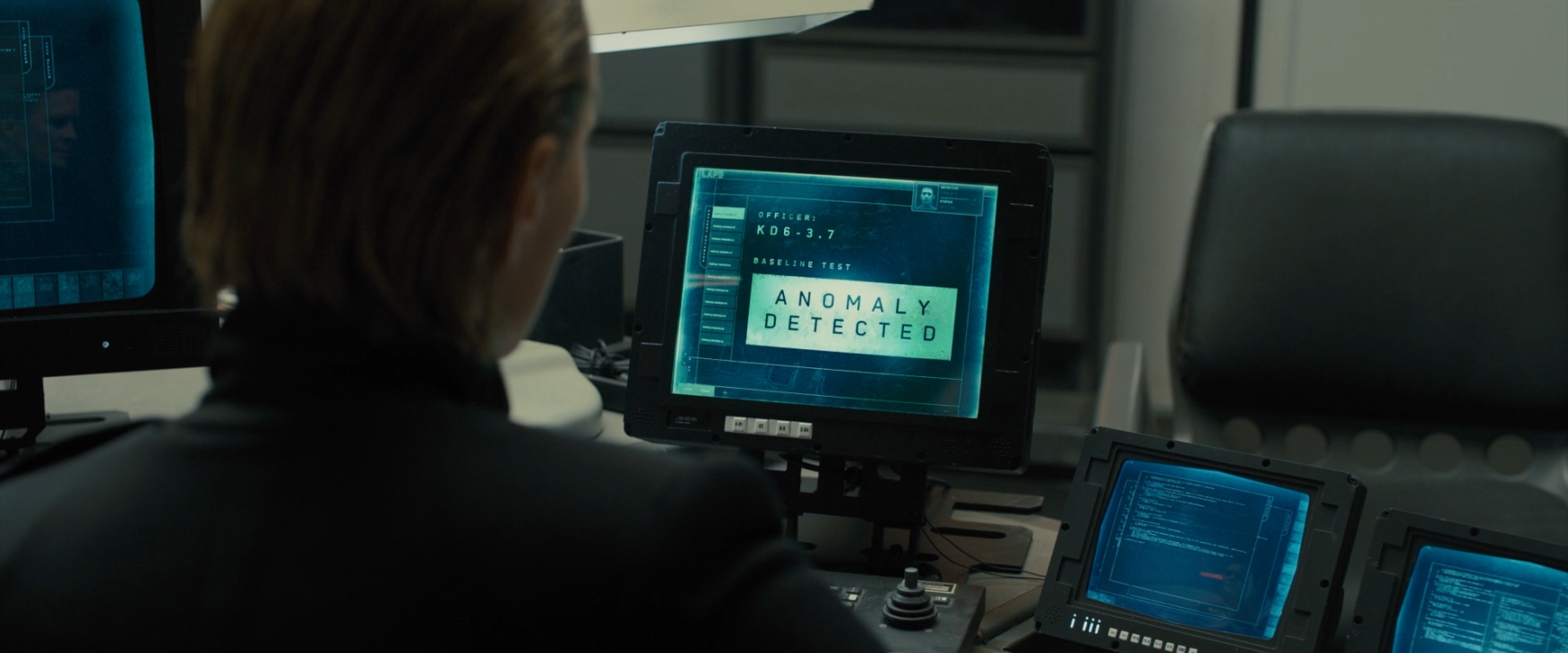
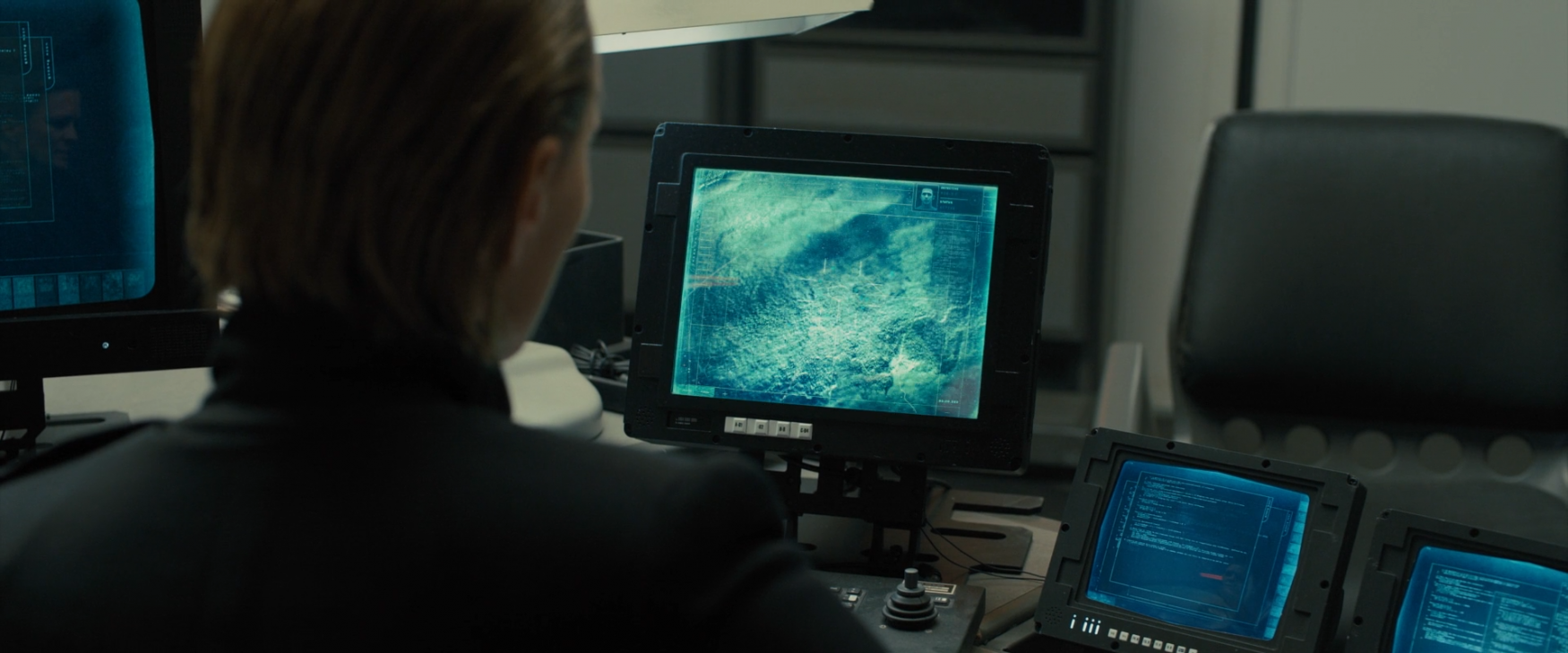

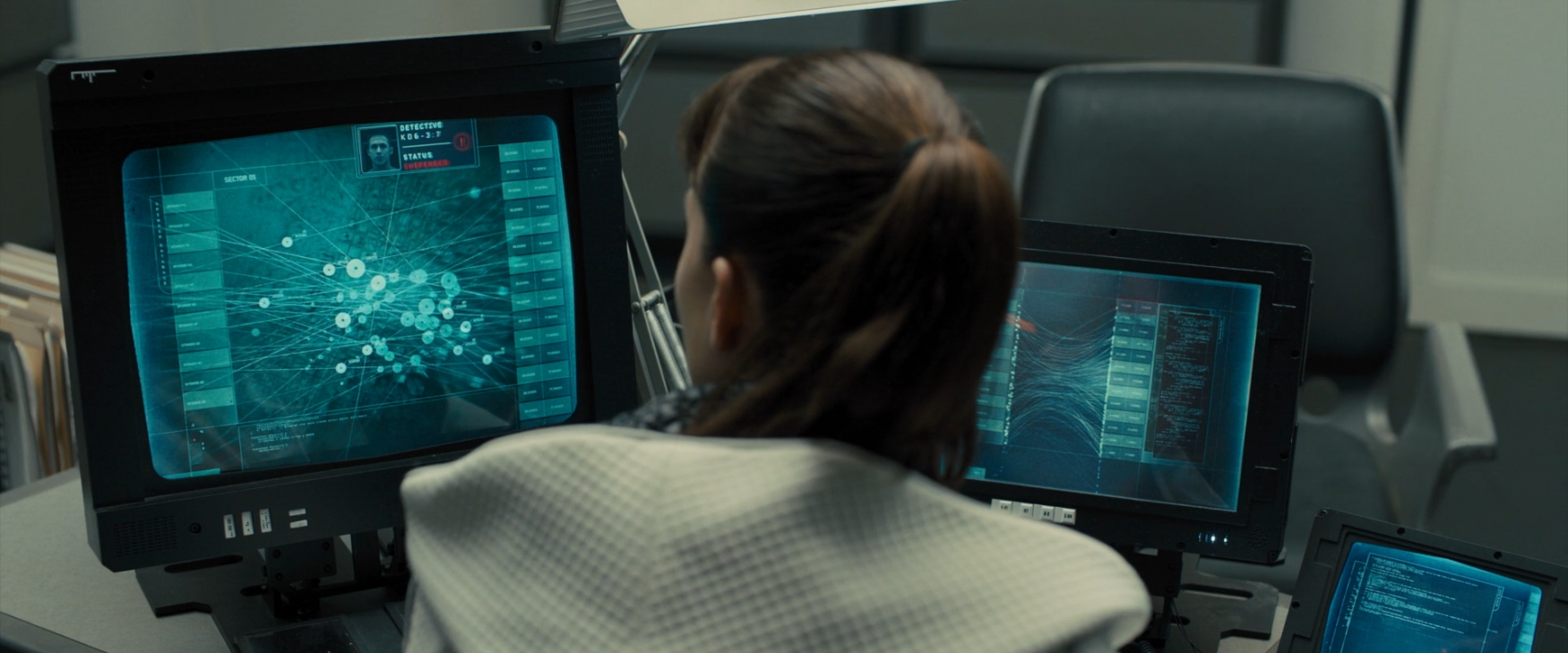
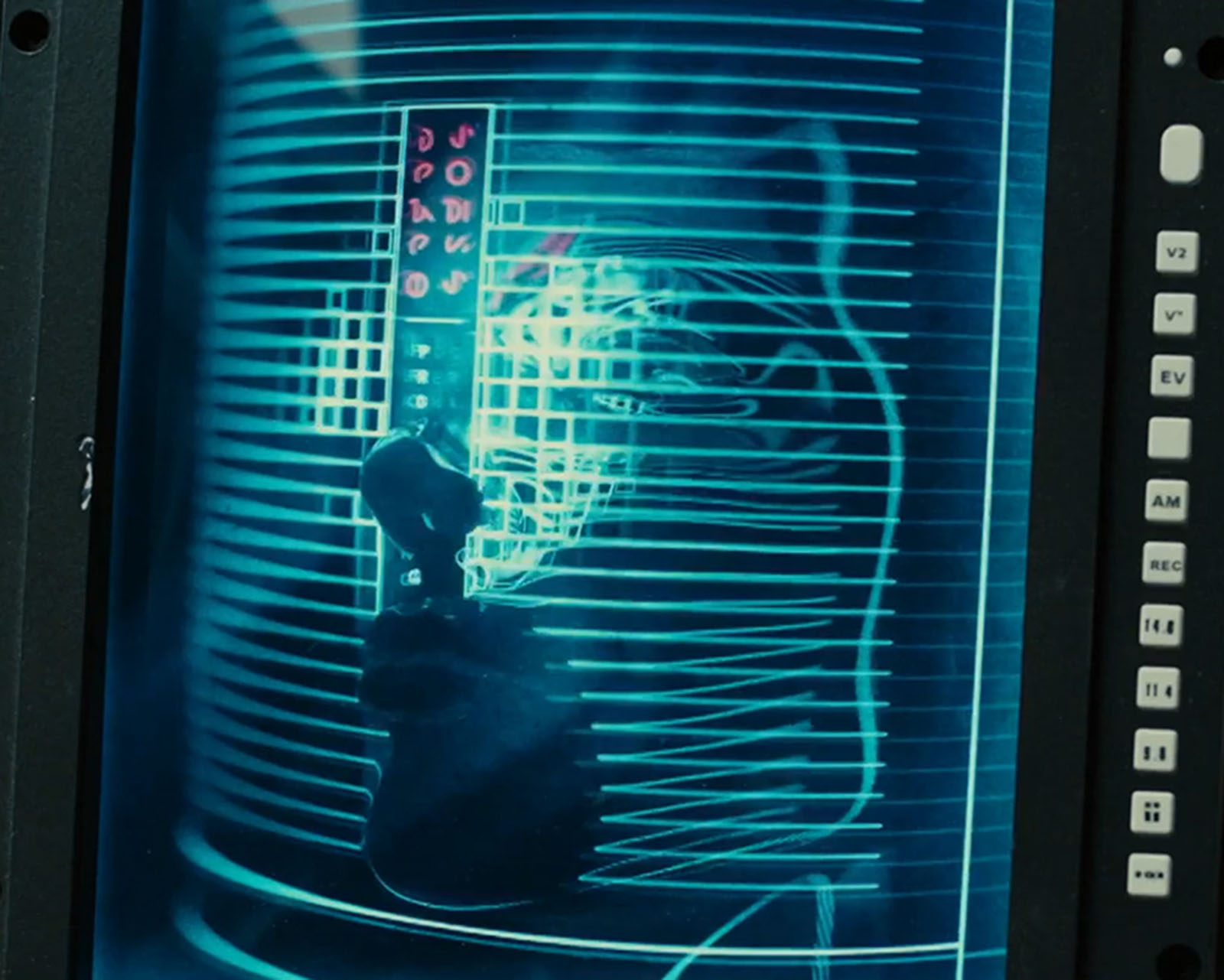
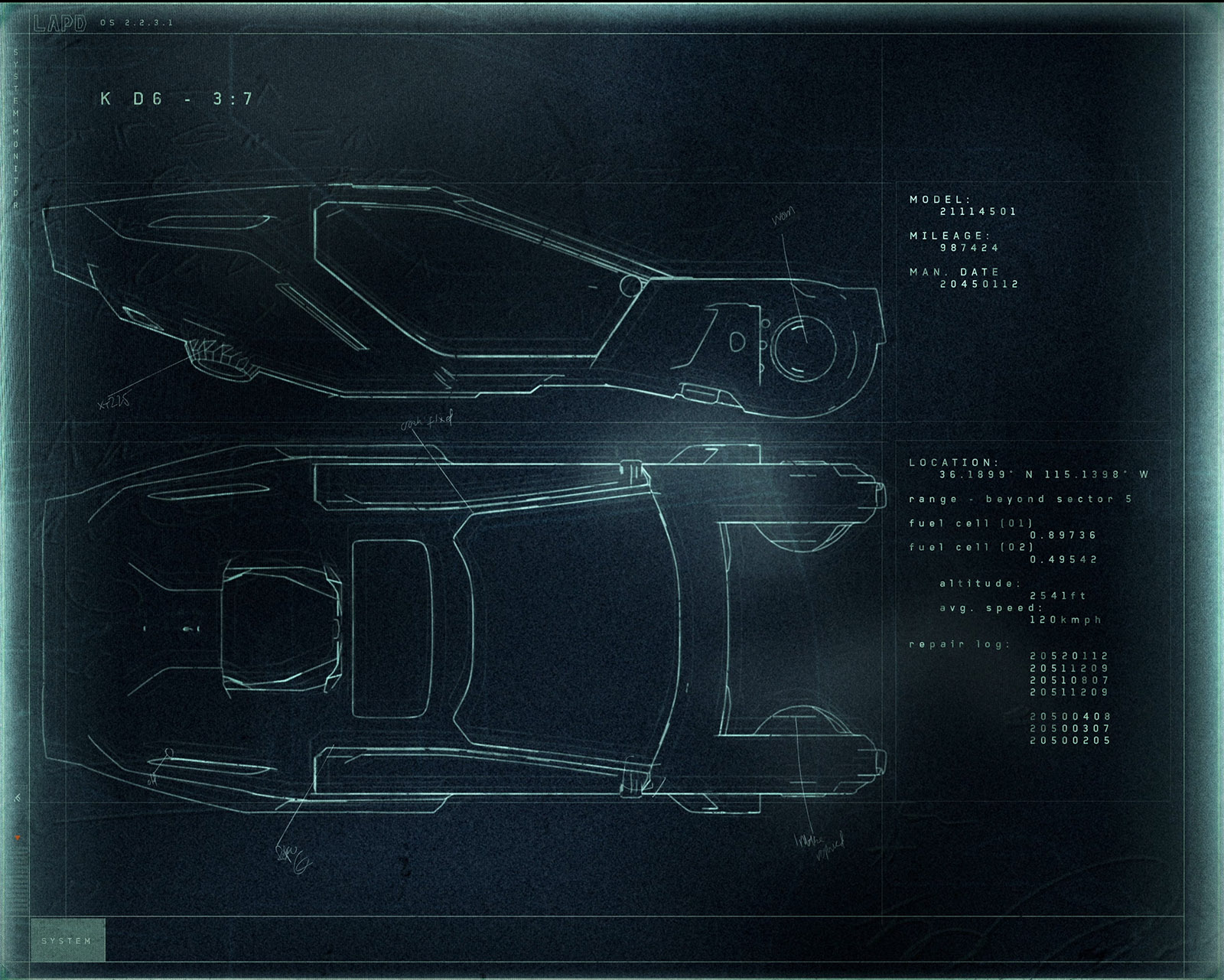
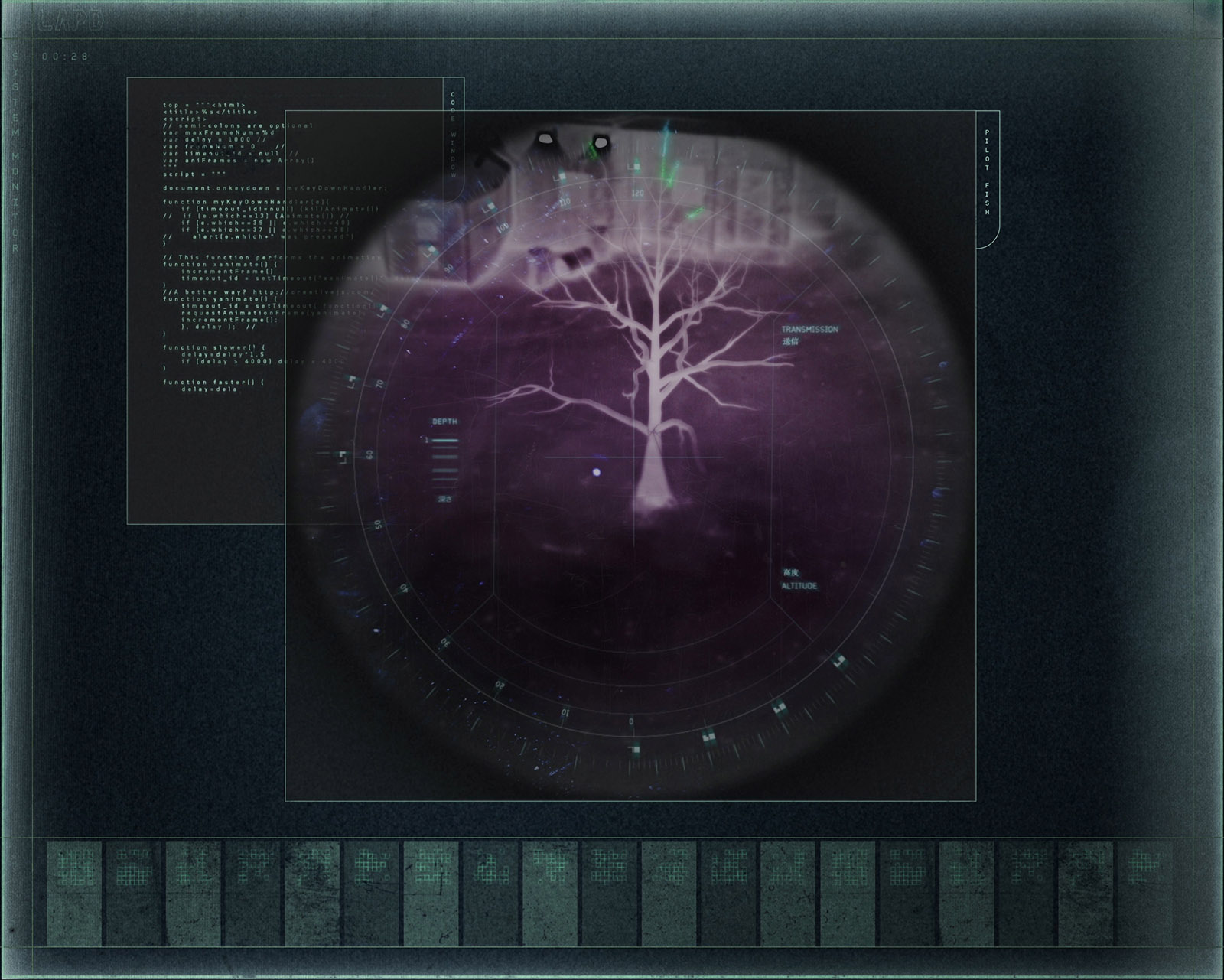
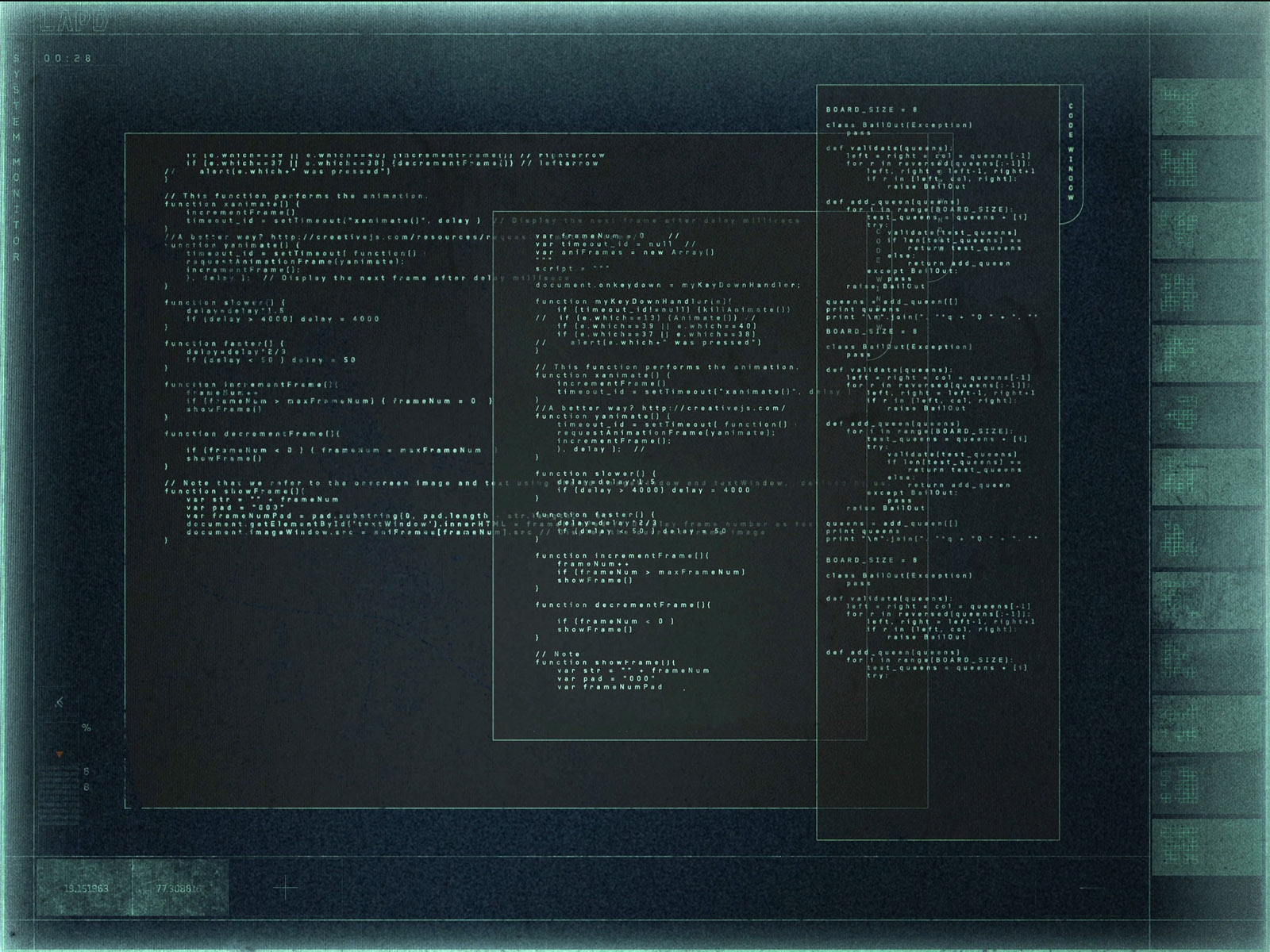
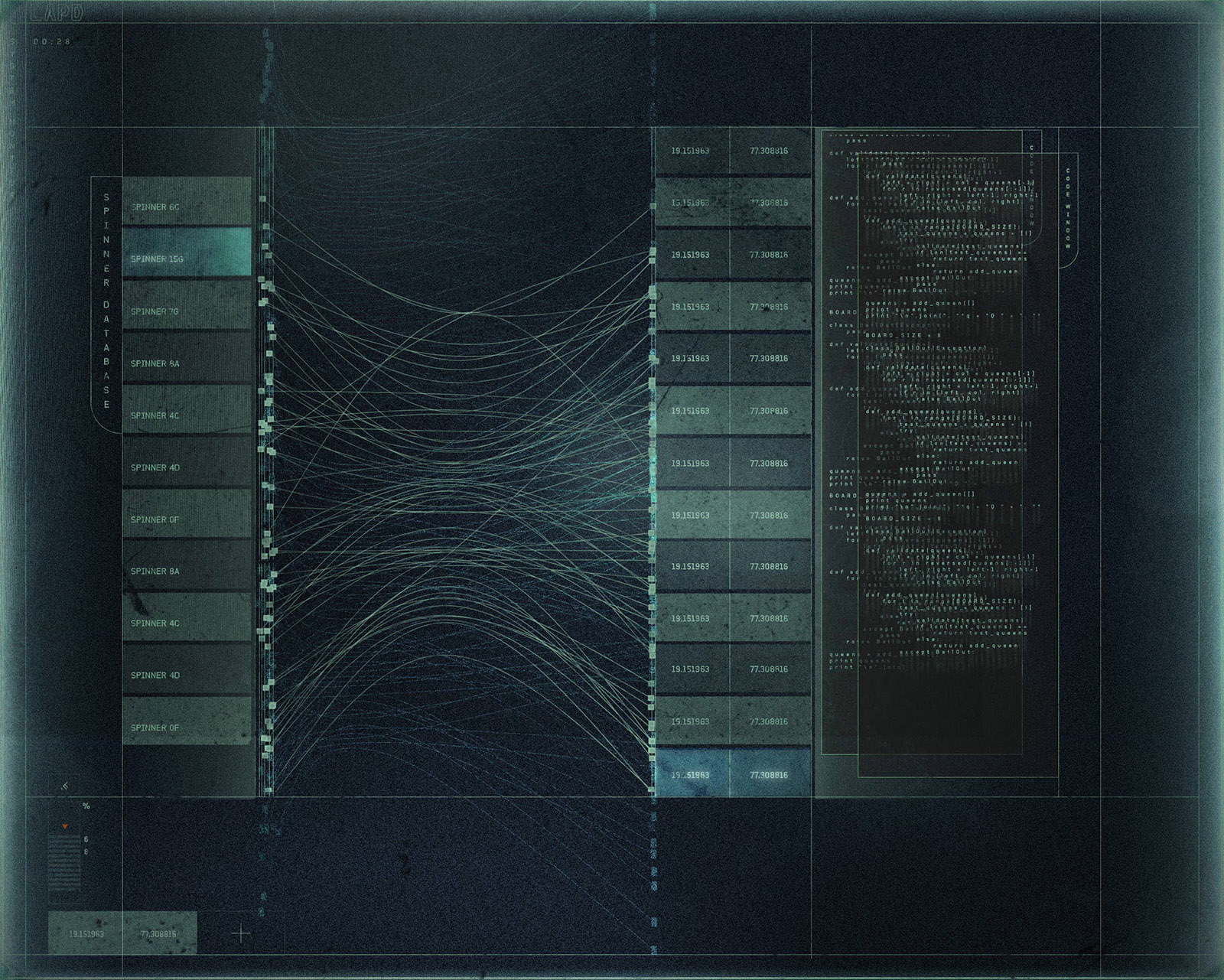
LAPD: Baseline Scan
An advanced version of the ‘Voight-Kampff’ test, the Baseline scans show the view through the optic nerve, suggesting neural activity in the replicant. A reminder of technological progression since the original film, the intention was to achieve a level of abstraction in the images that had an aesthetic, as much as organic quality. Macrophotography and photogrammetry of grapefruit flesh provided the perfect organic abstraction of neural activity that Denis was looking for in this sequence.
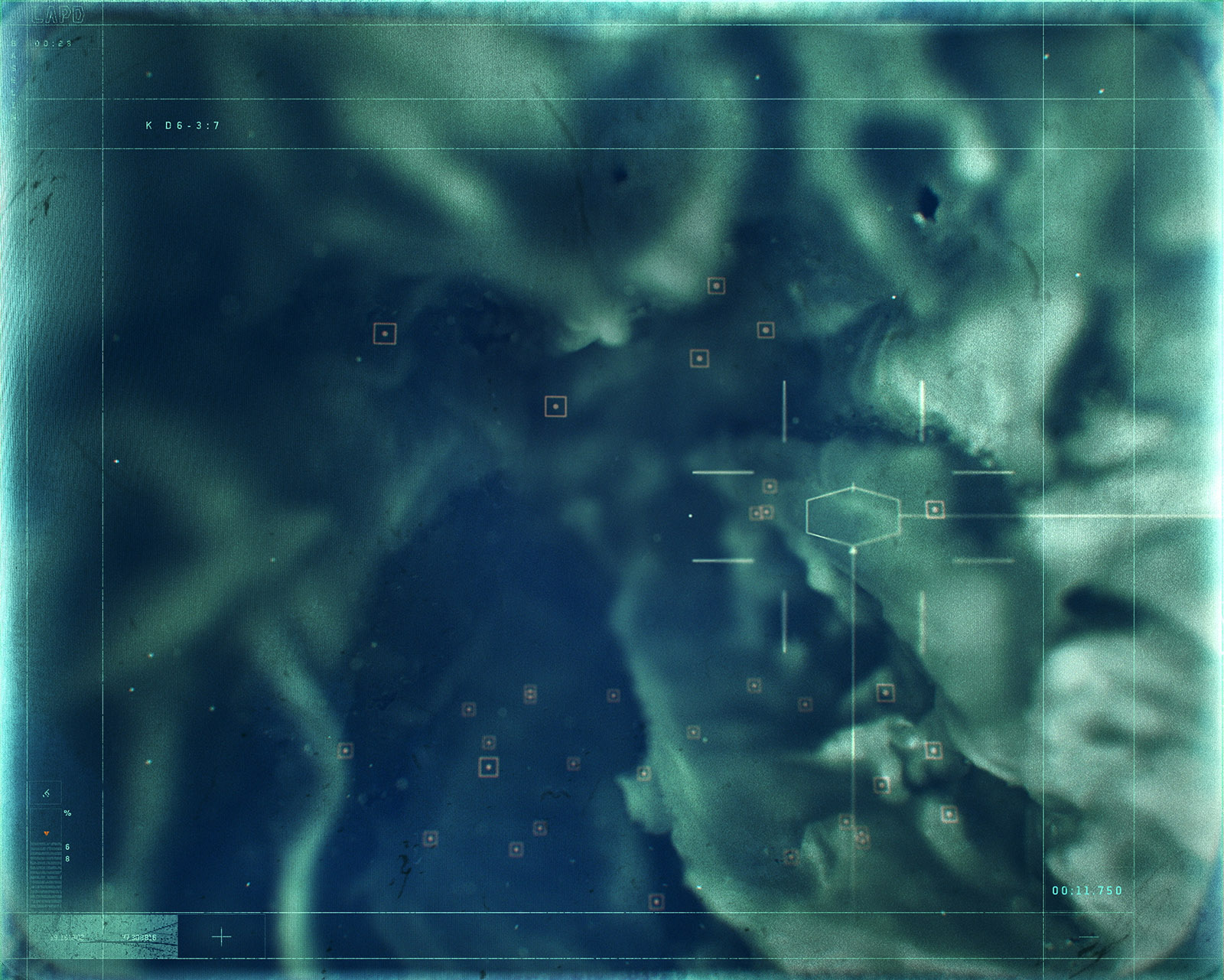
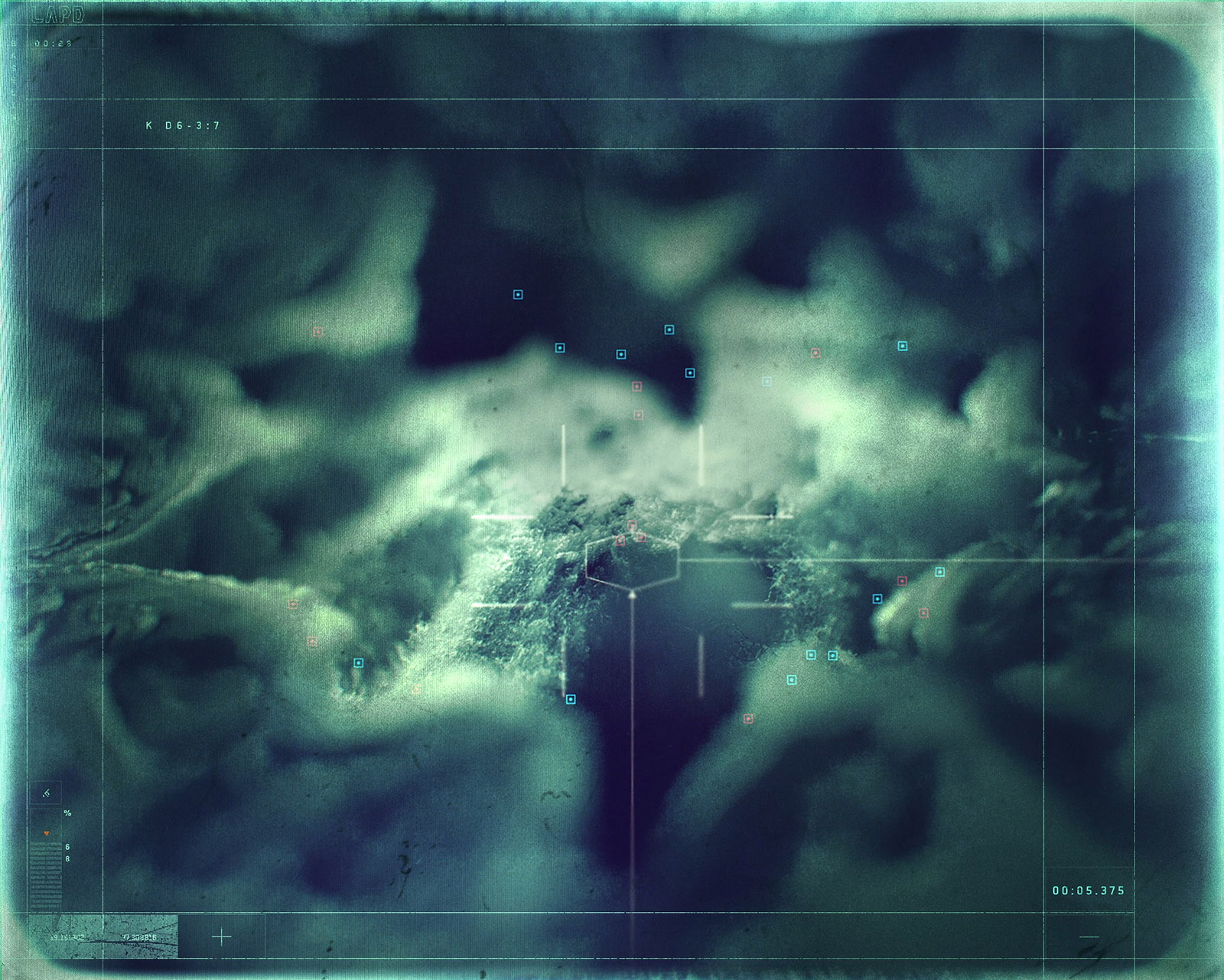
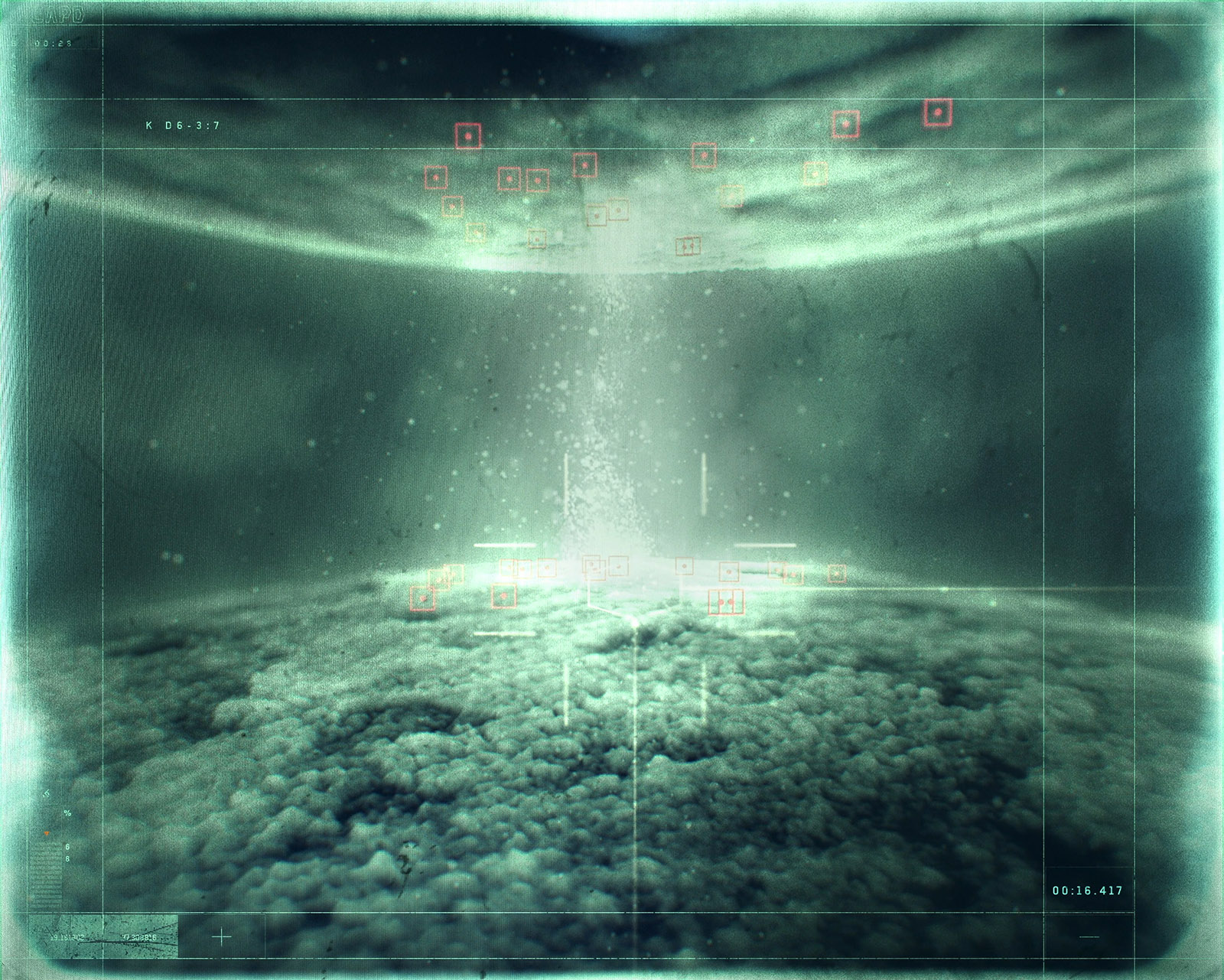
LAPD: Morgue
A pivotal storybeat, the Morgue scene required screens that were meticulously choreographed with dialogue and performance. To support the drama of this scene, we designed the screen content and interaction with the physicality of a series of optical lenses that shunt into place with each level of magnification, leading to the big reveal. Shot live on-set, the animation was designed as a series of looping states that were triggered by the actors.
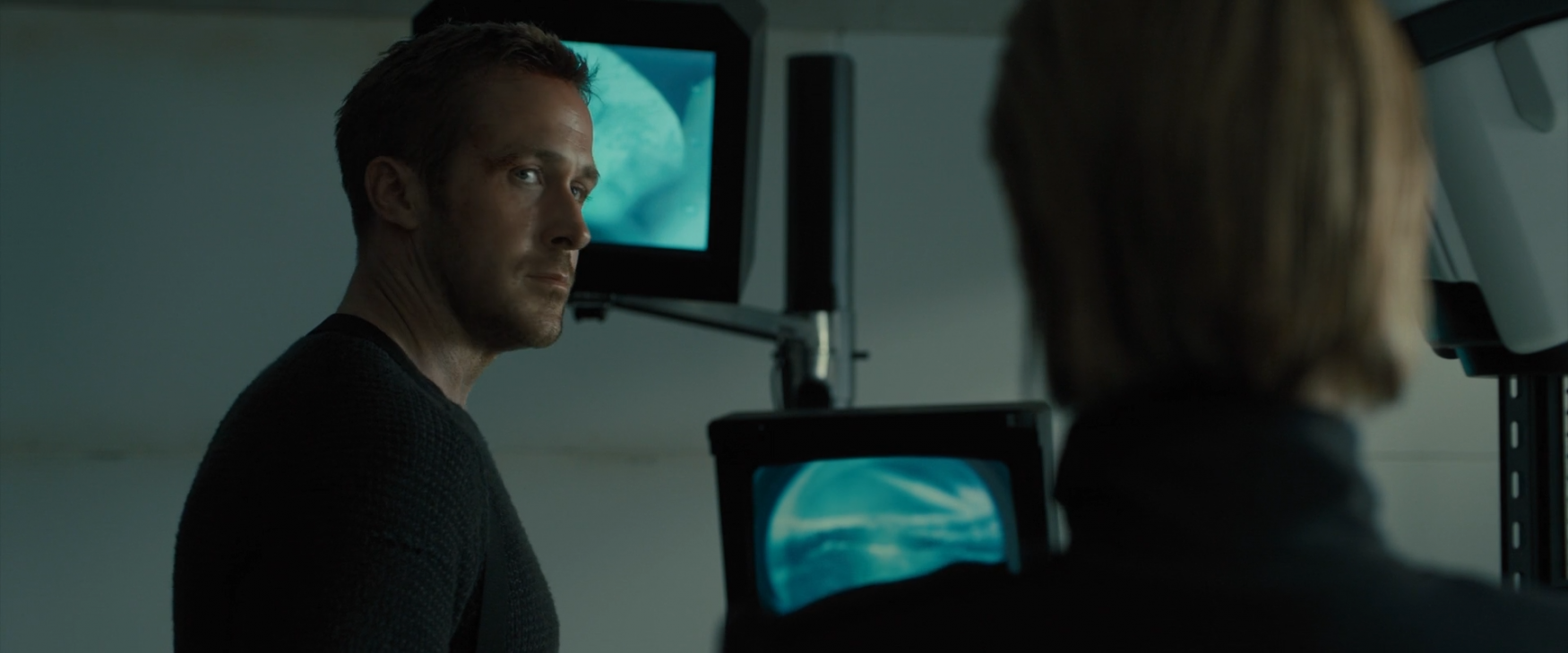
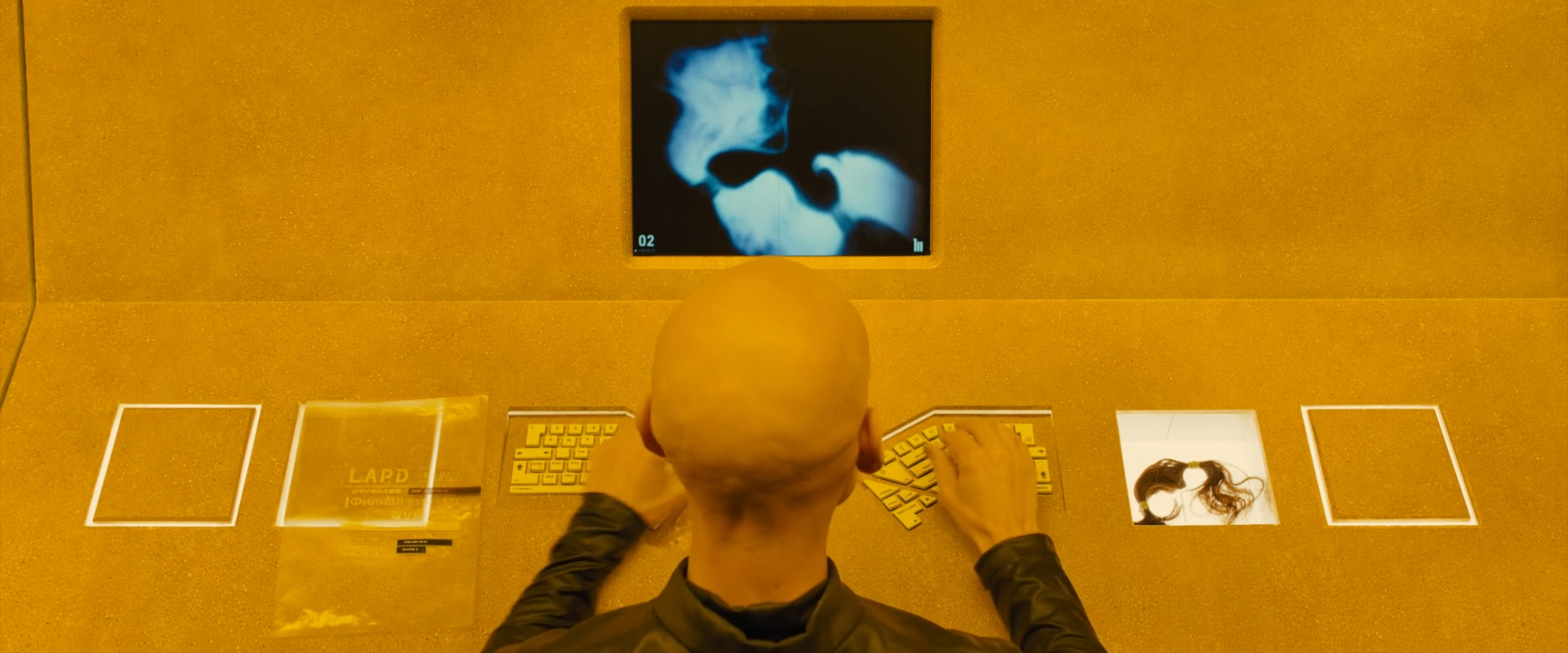
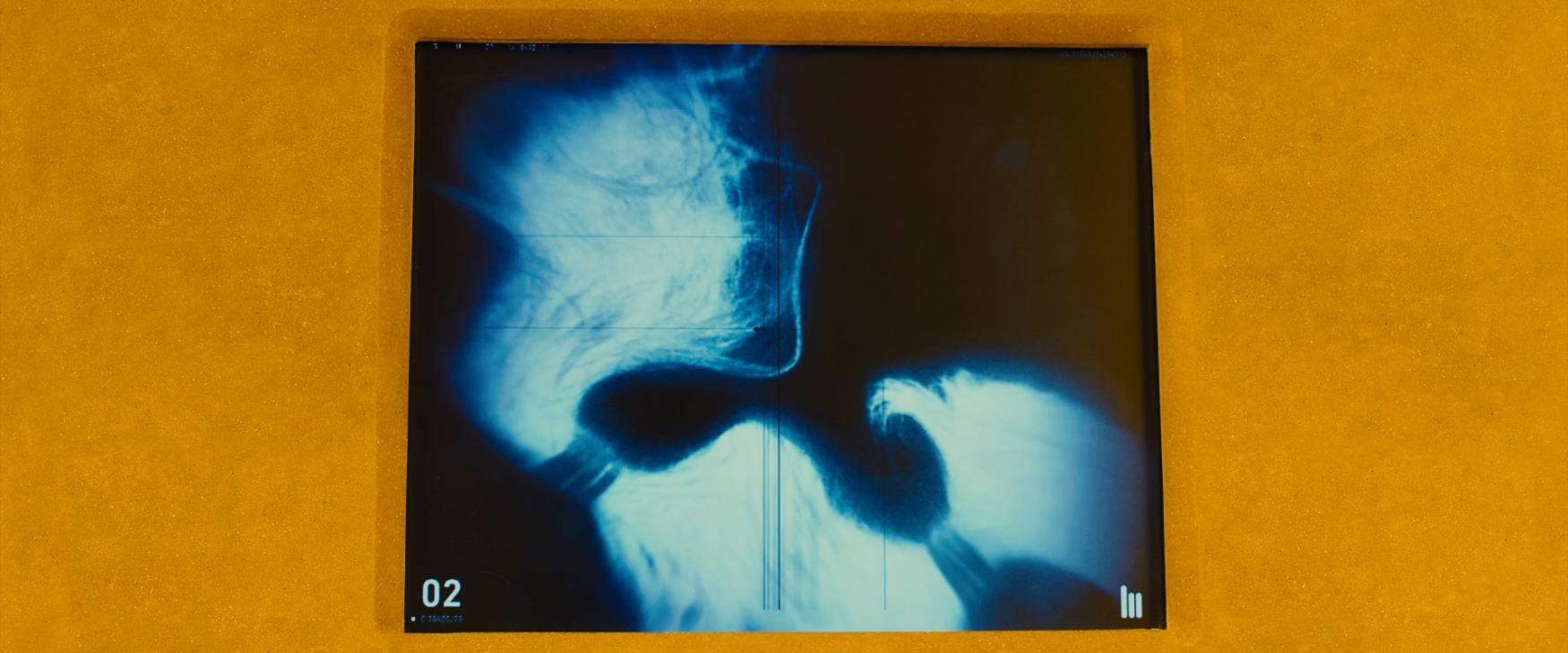
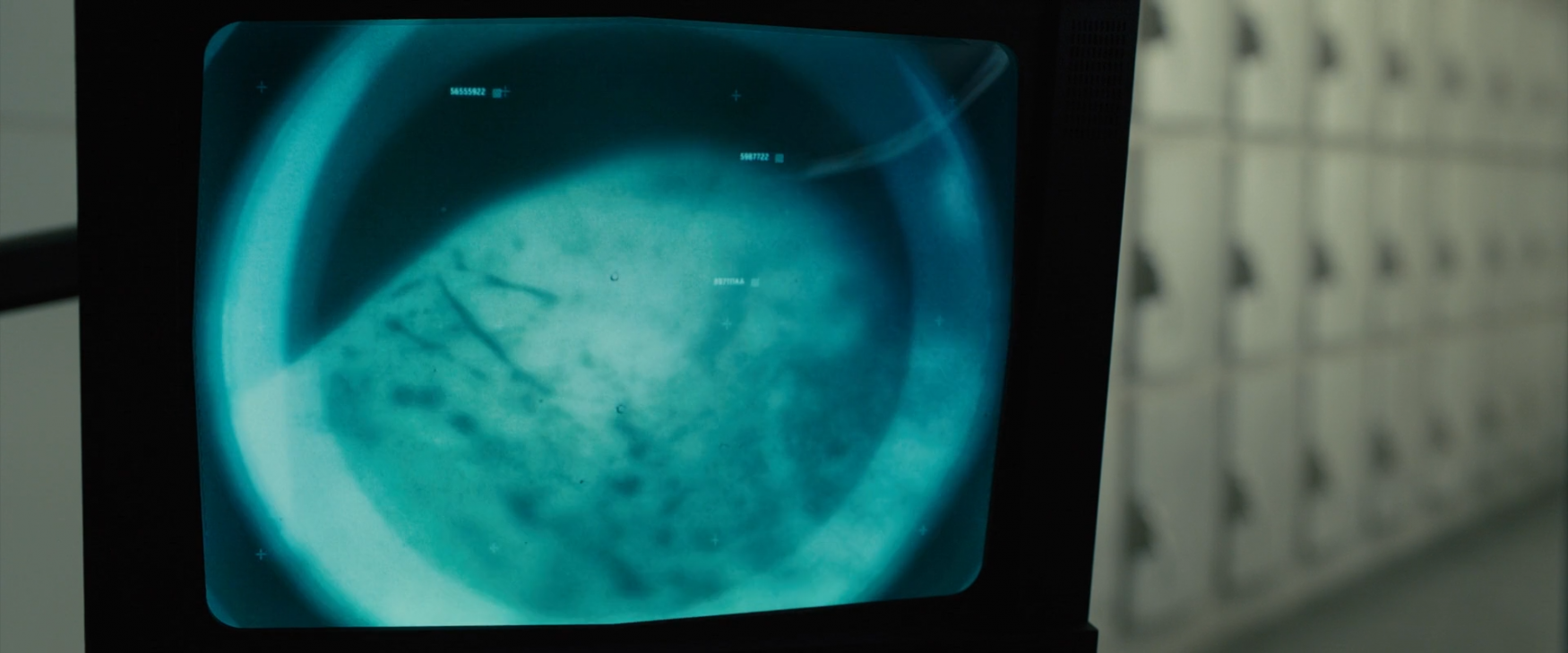
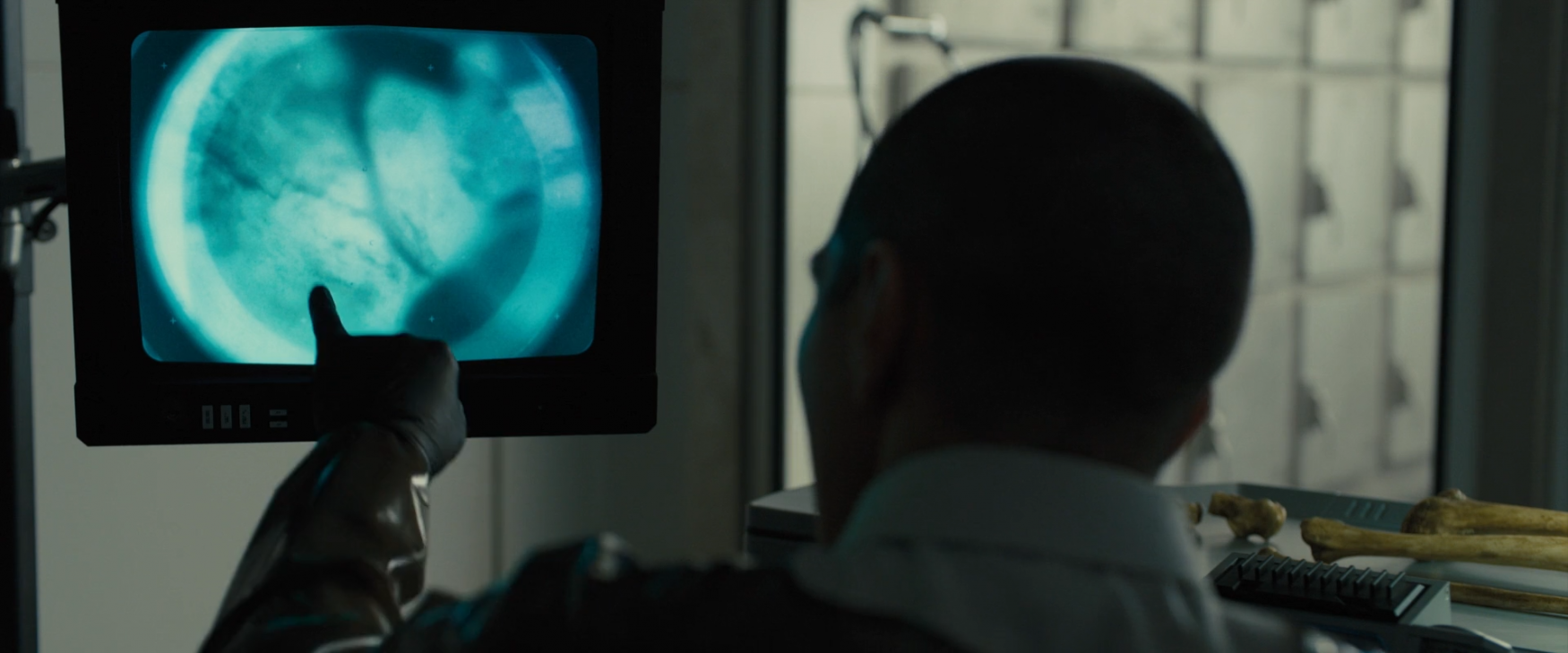
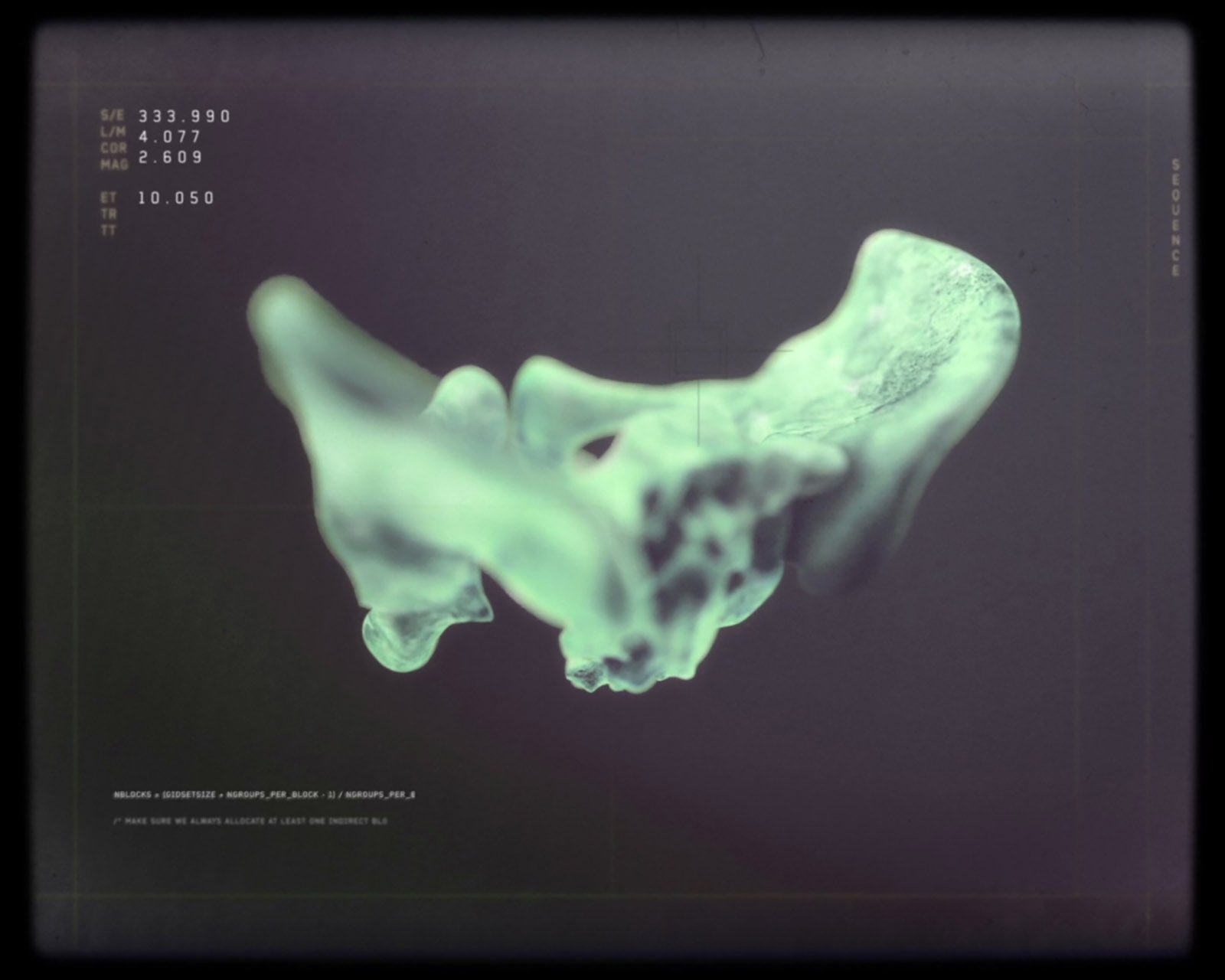
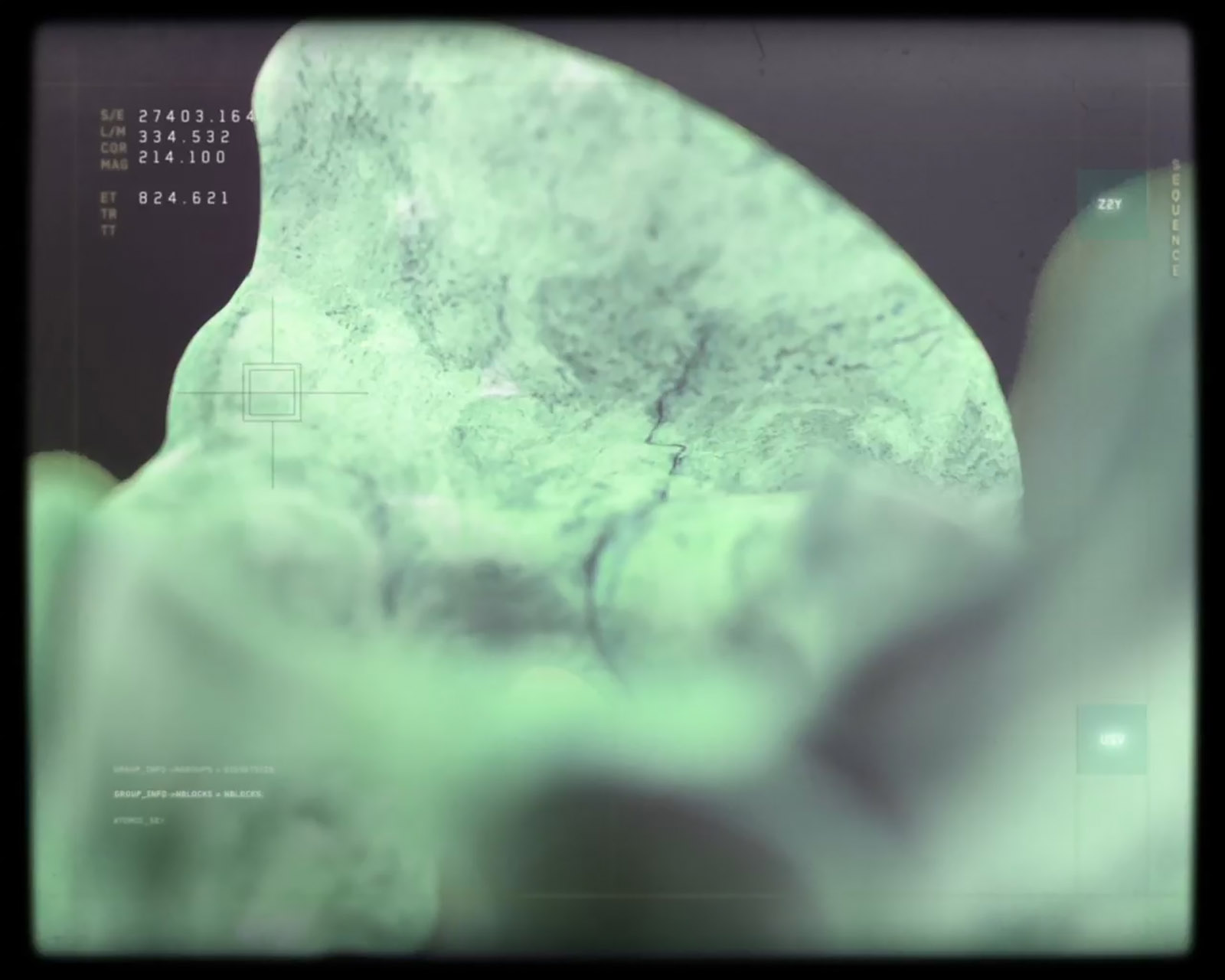
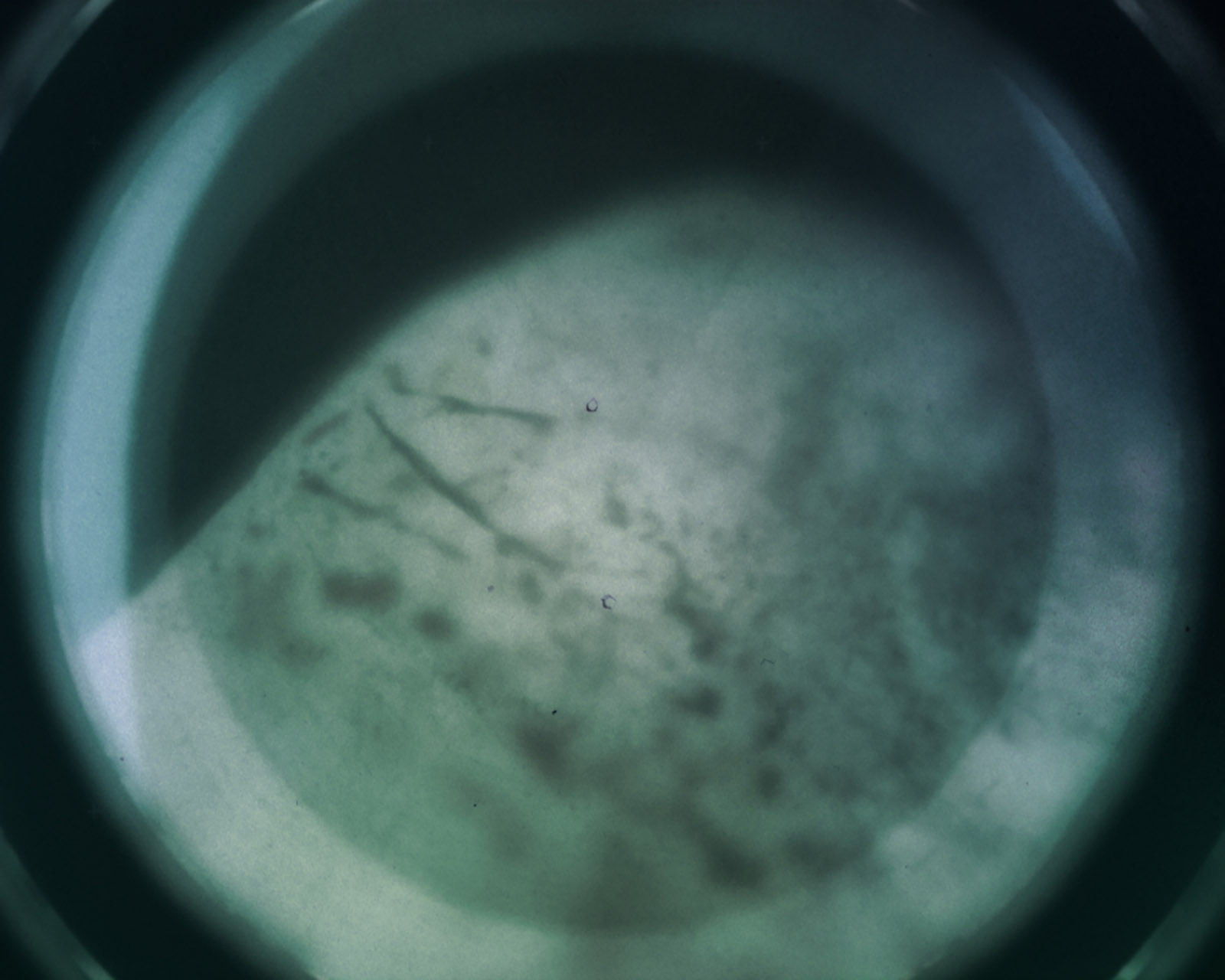
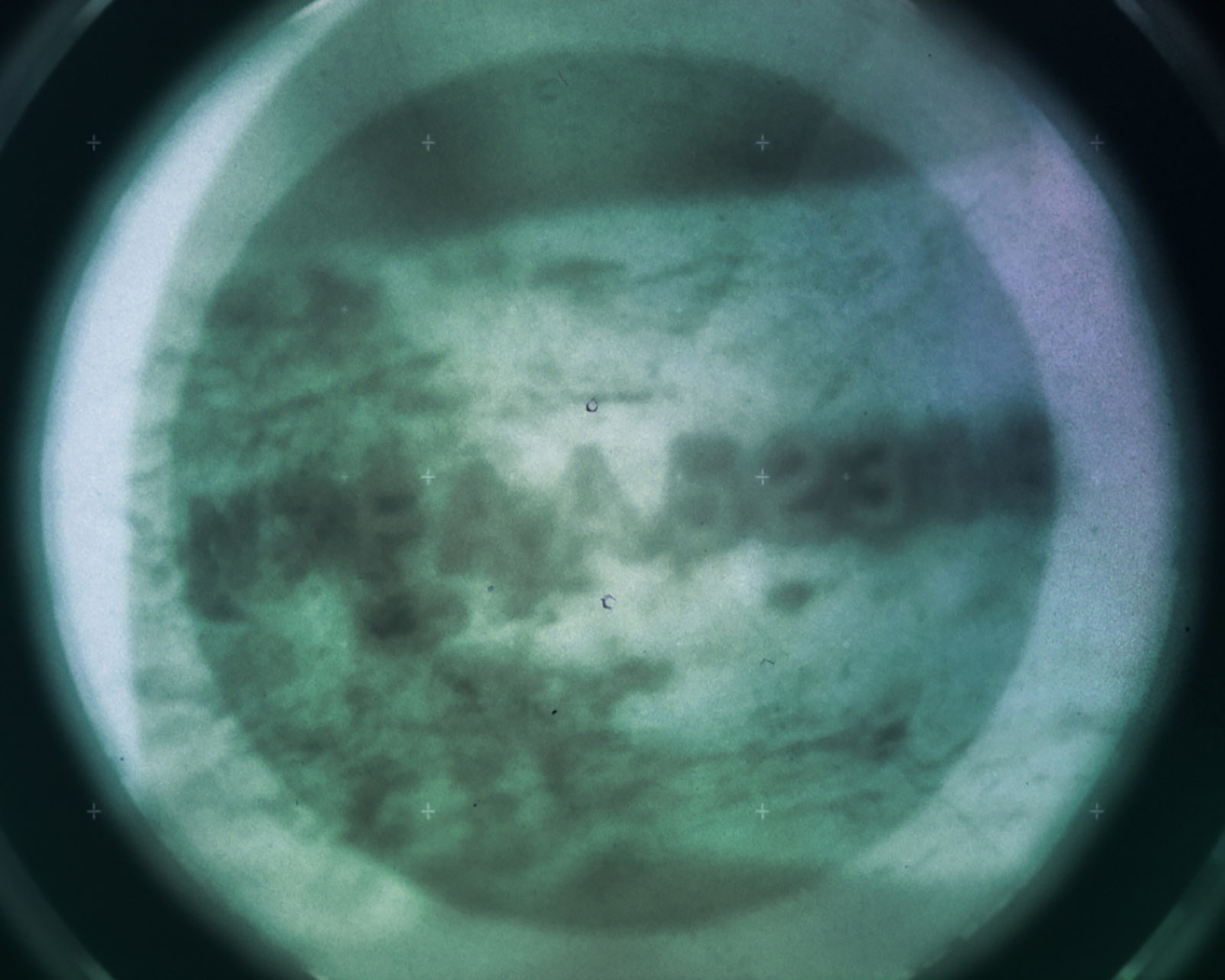
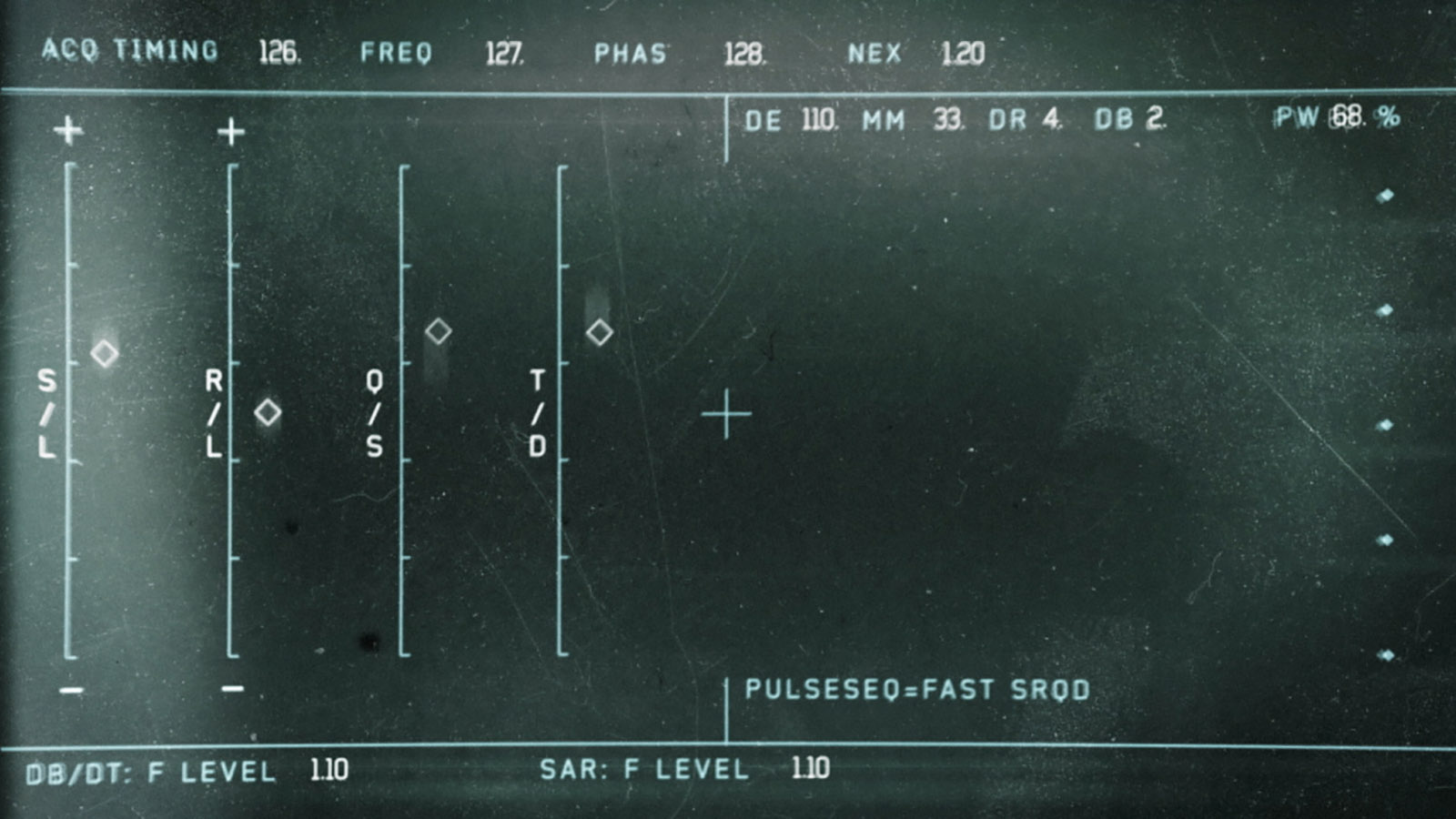
LAPD: Denabase
An archive of individual DNA cards, the Denabase is a mechanical database that K searches through. A reminder of the regressive impact of the ‘blackout’ event that destroyed digital capability, this scene shows K’s superior replicant capabilities as he manually scans and compares DNA information. To achieve the mechanical look and feel of the interaction, we experimented with microfiche readers, card archives, projectors, and database UI, blending aspects of each to create an interface and interaction system that tied in with all aspects of the storybeat.
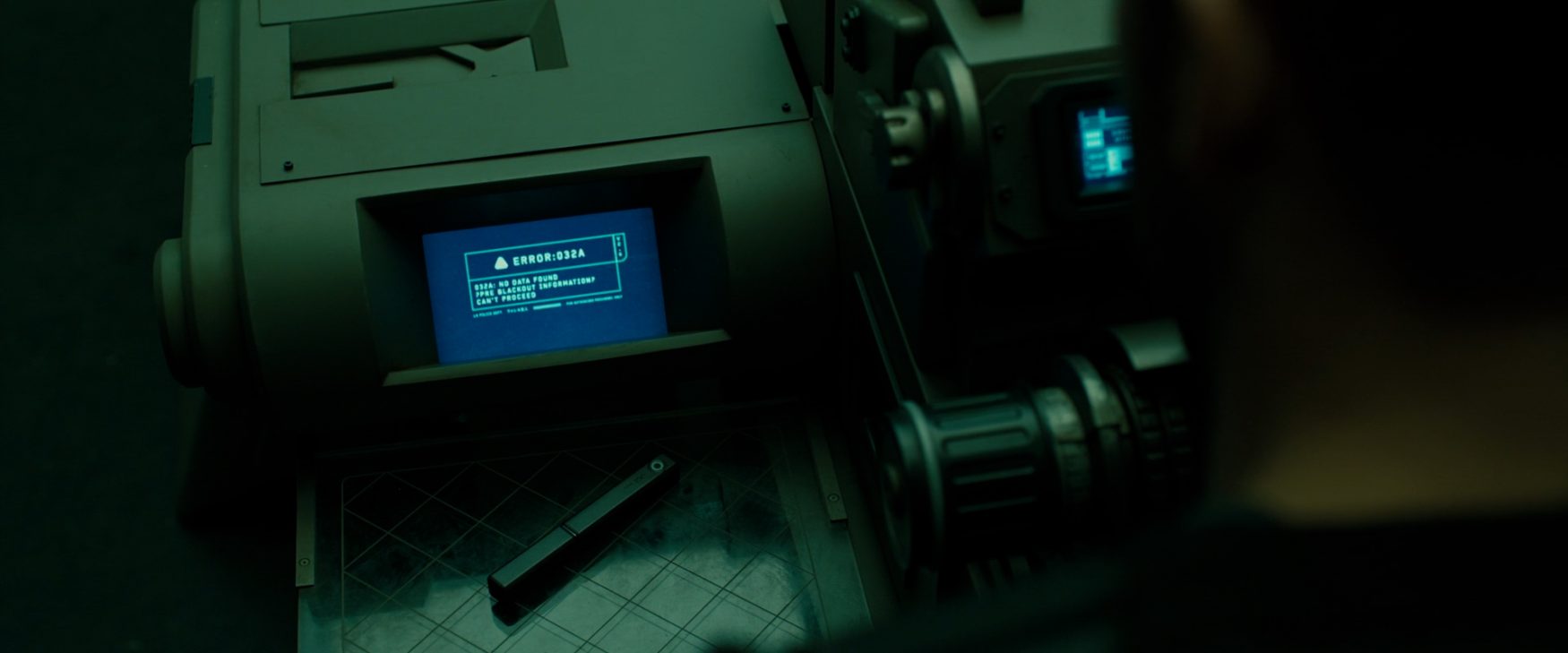
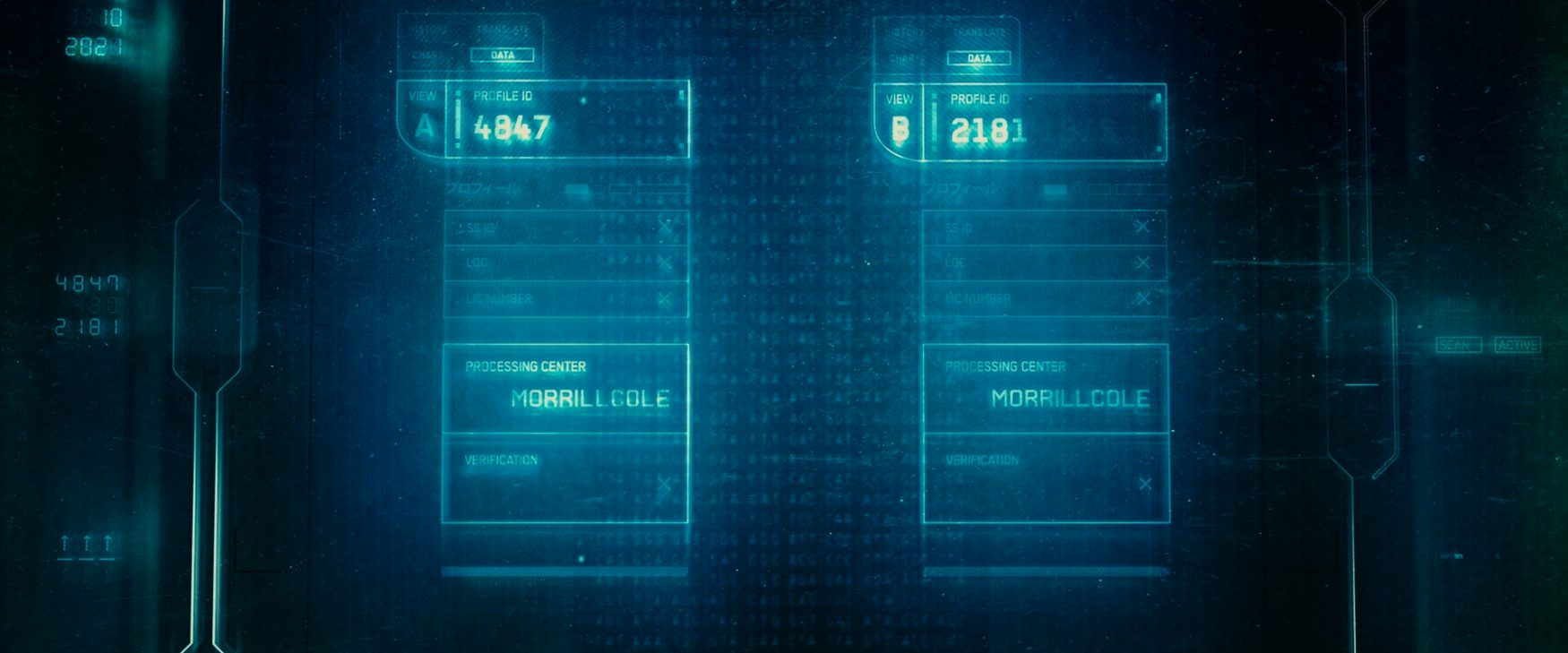
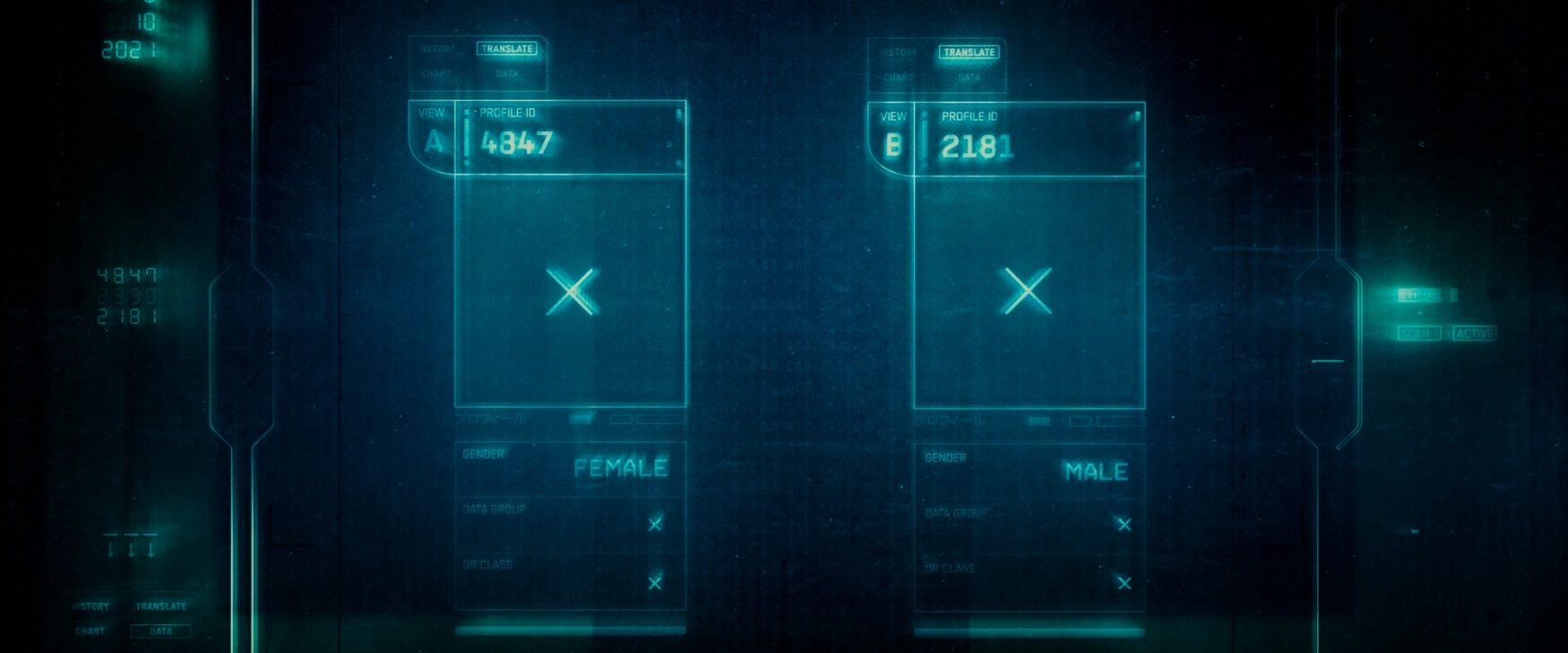
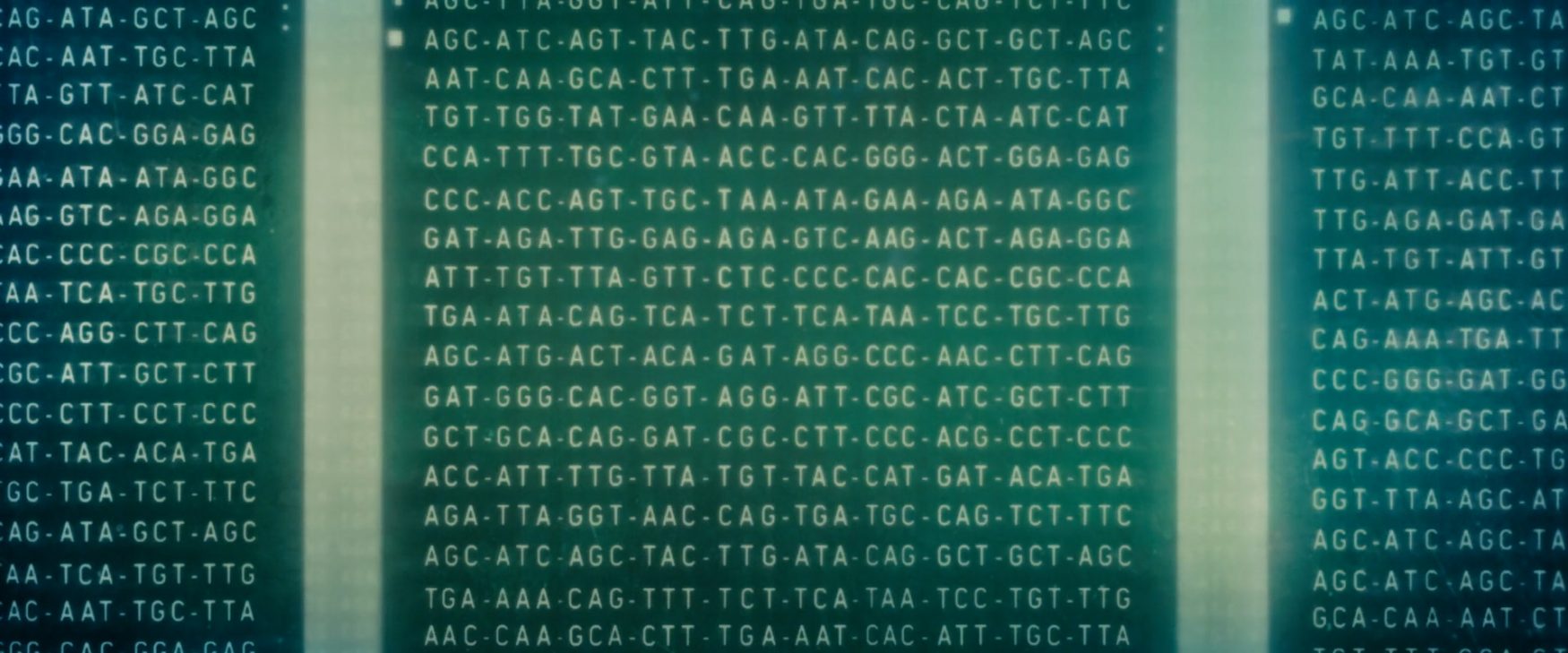
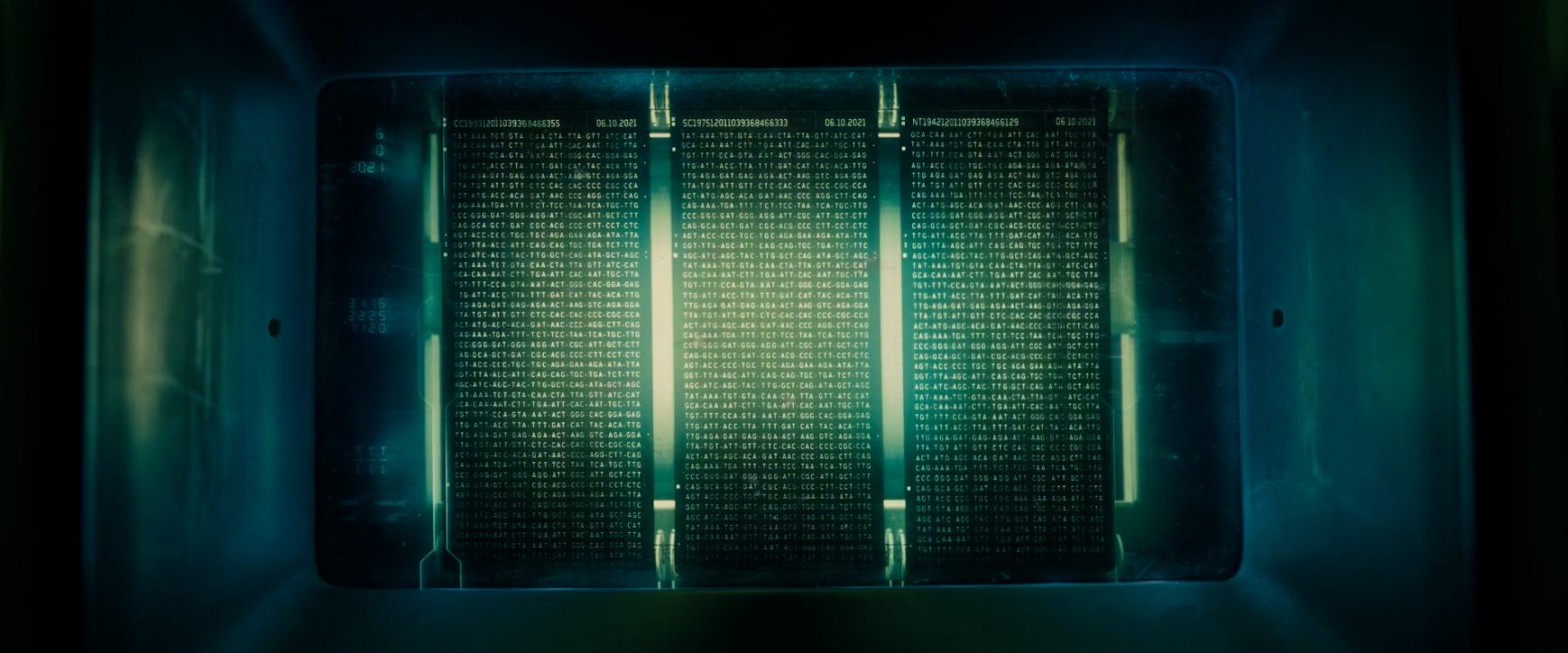
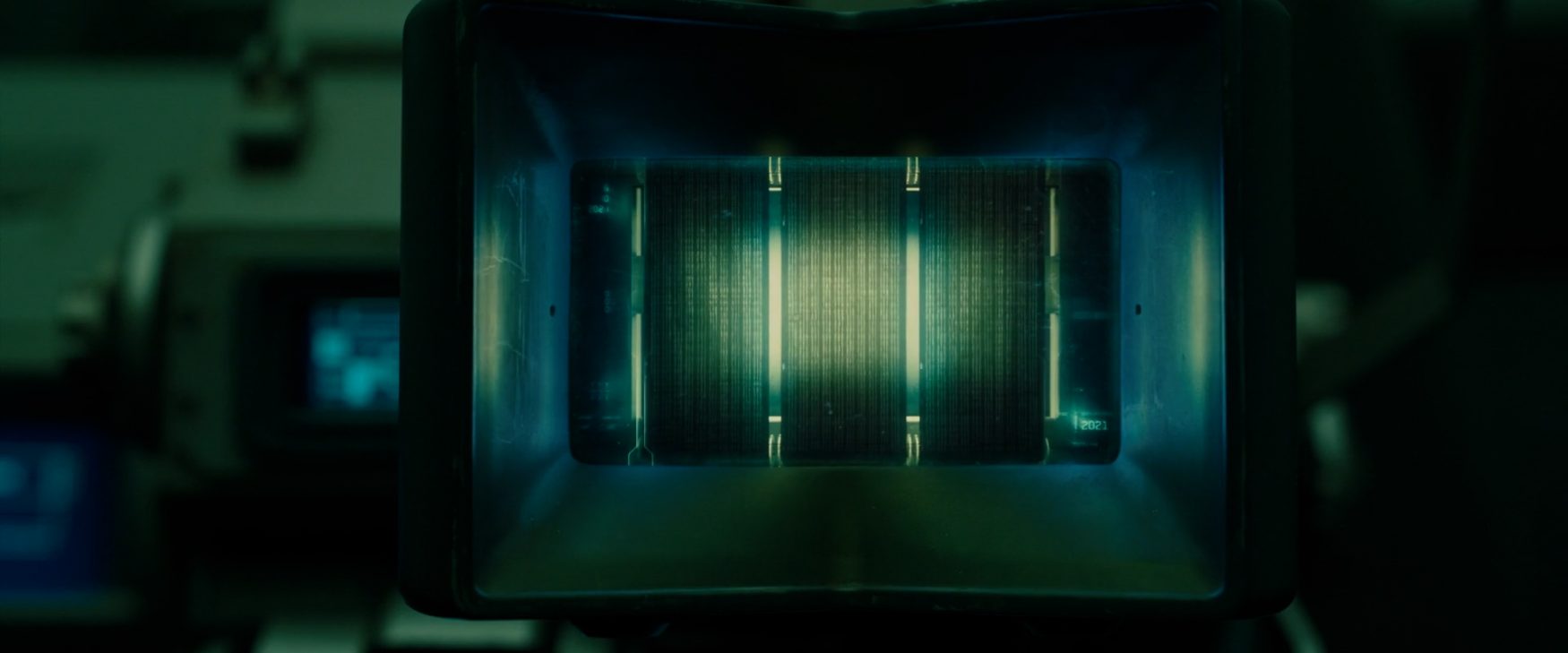
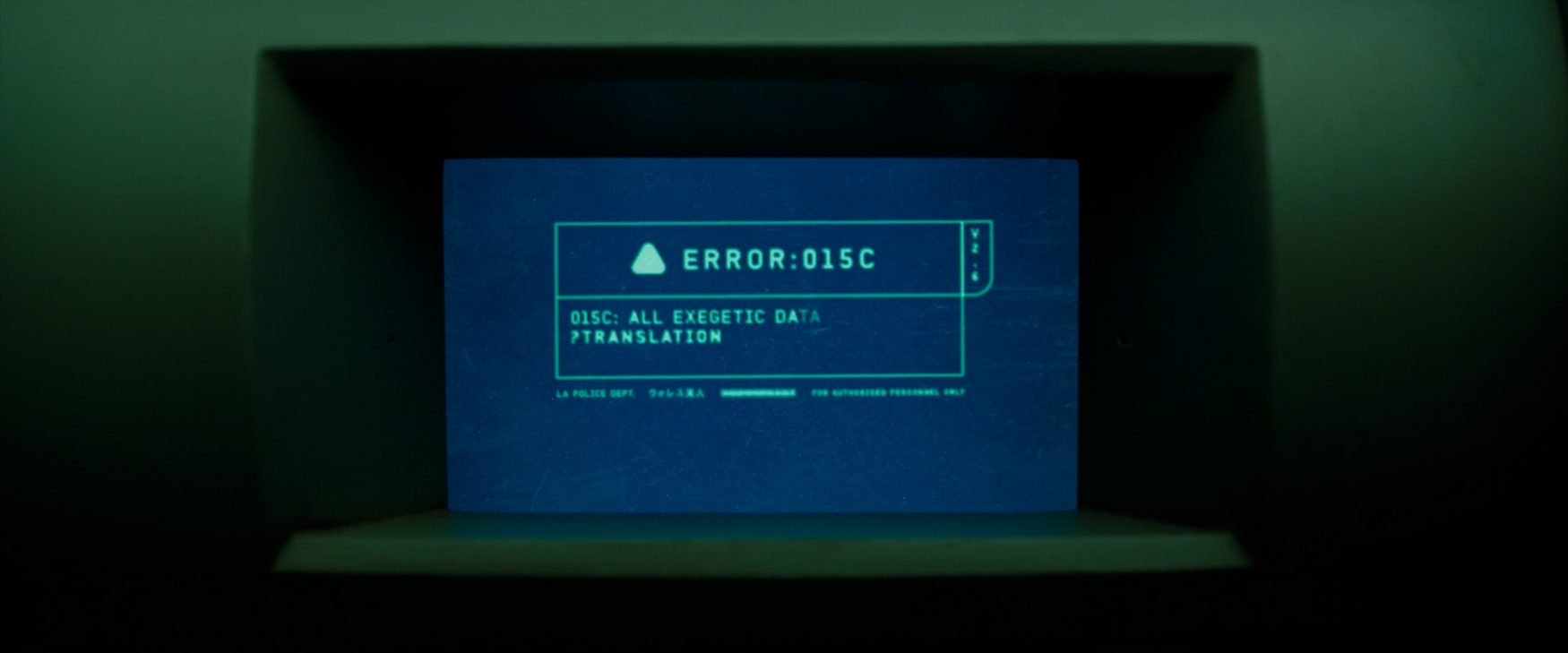
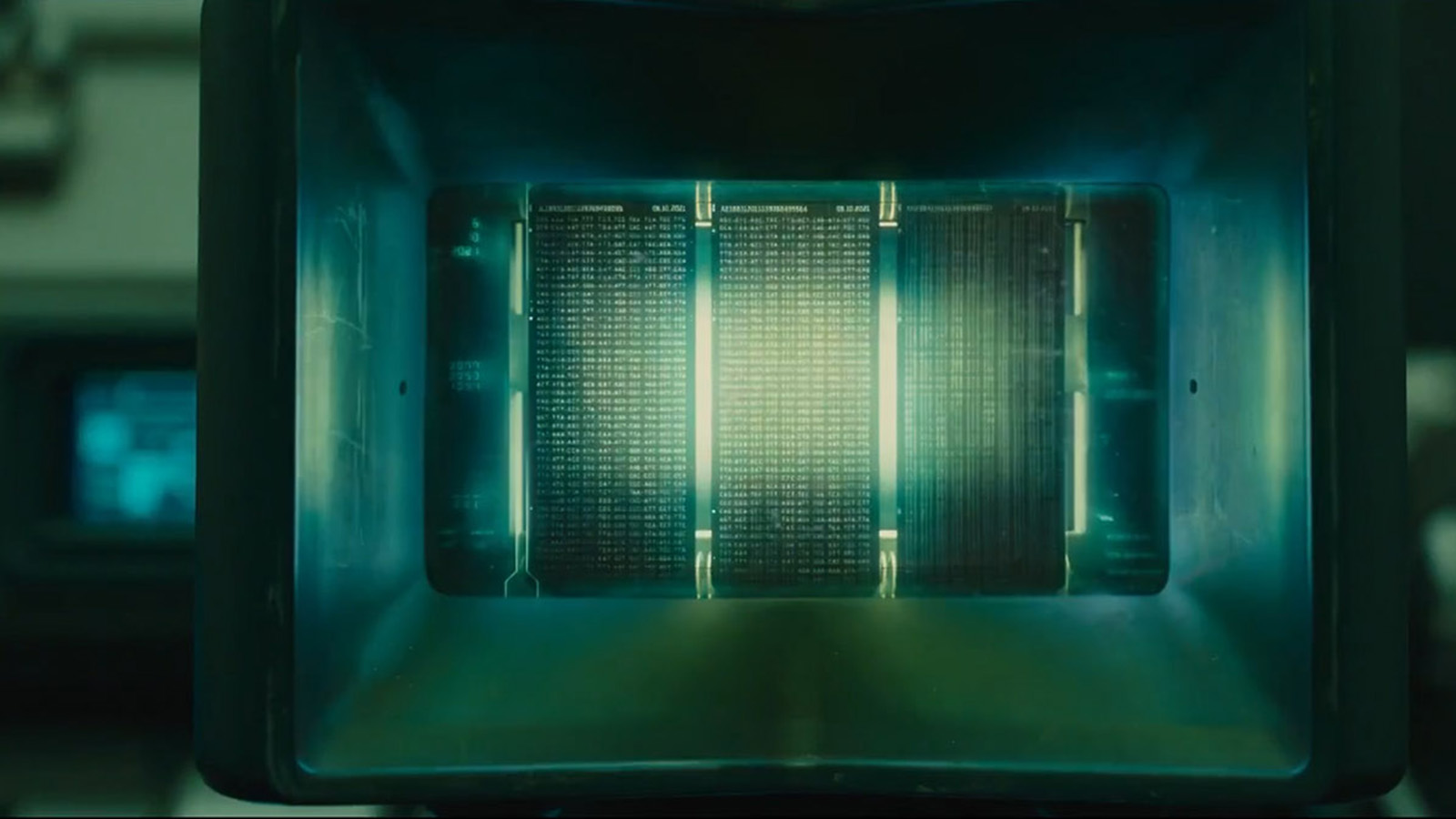
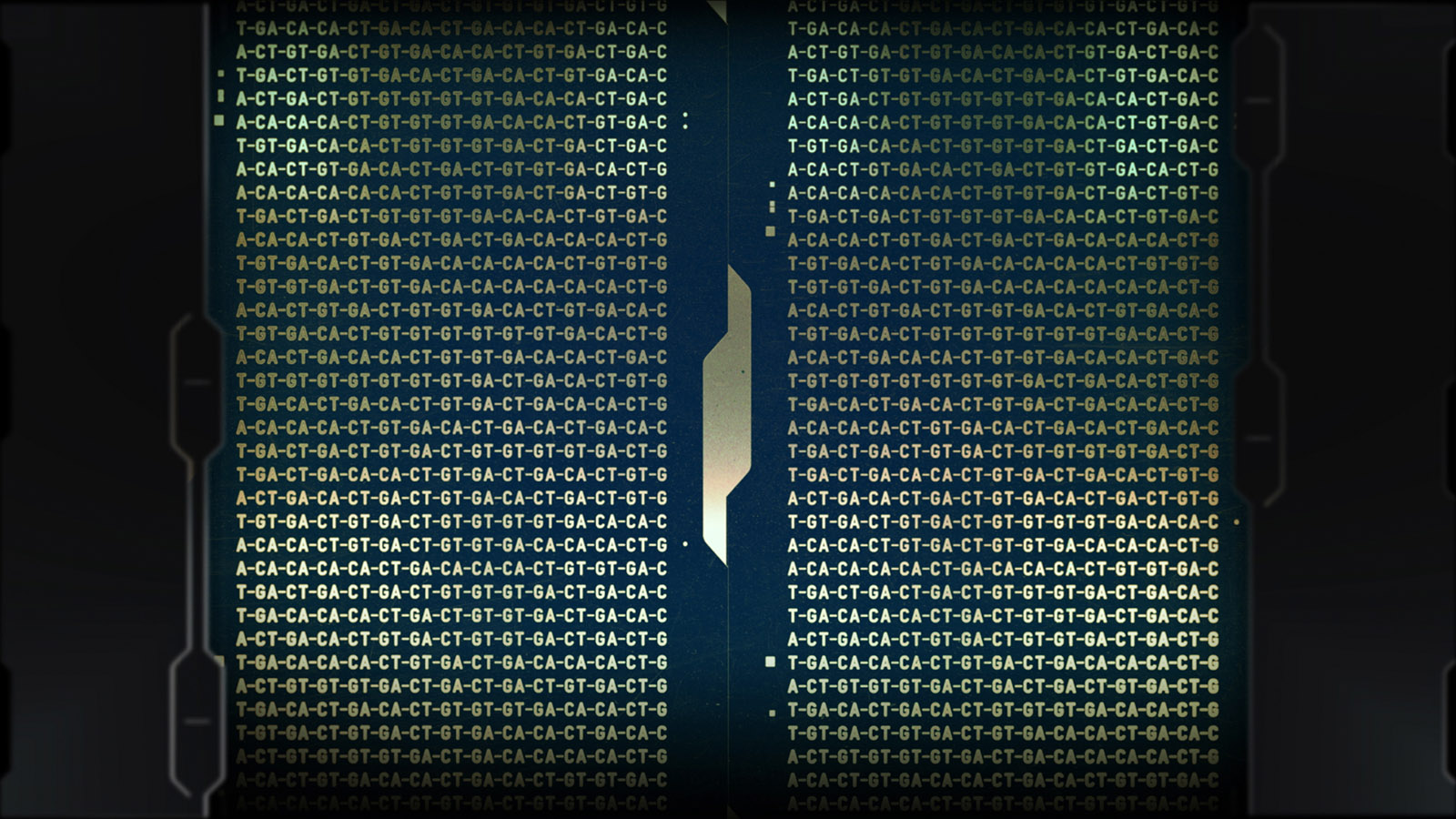
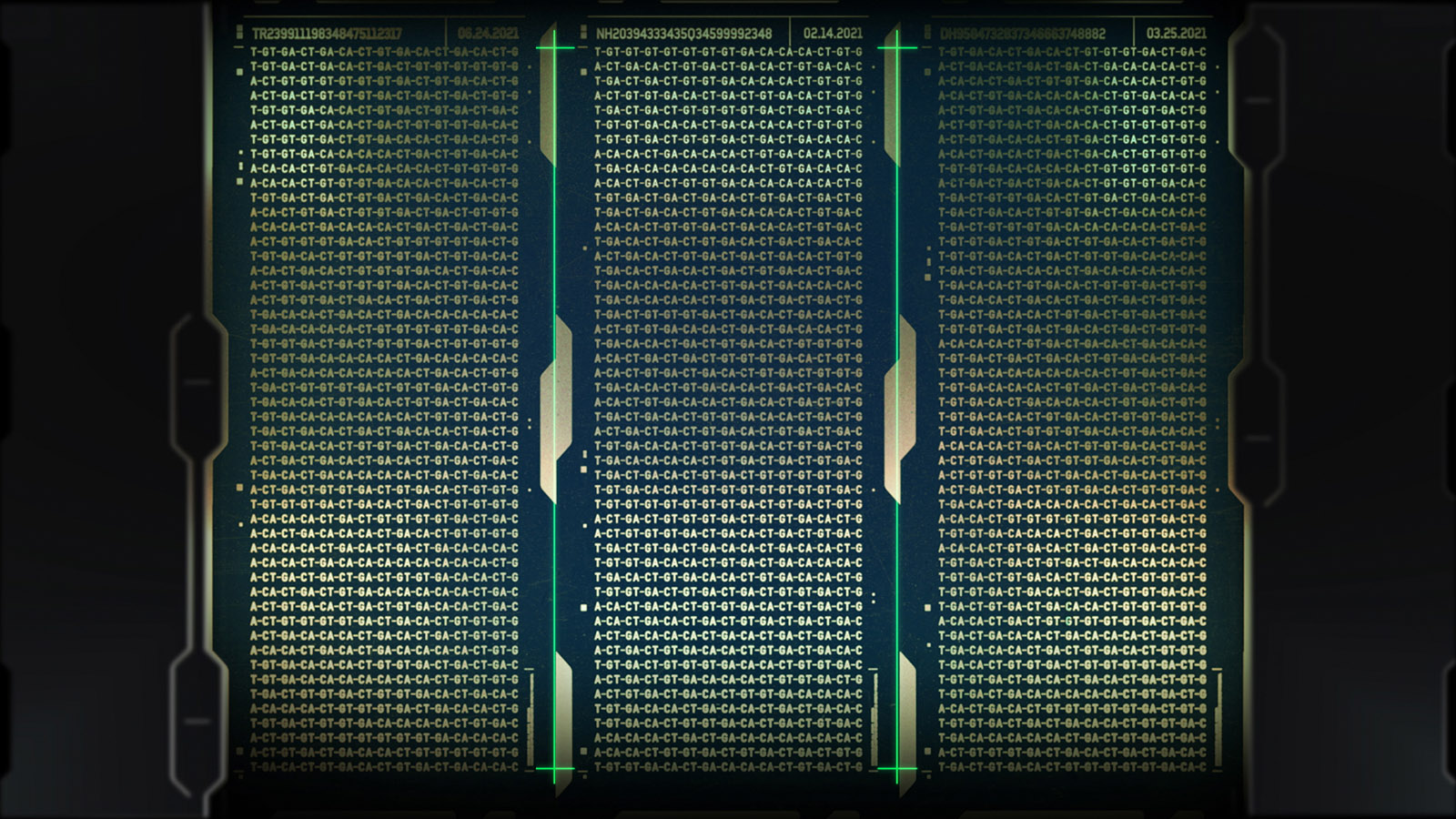
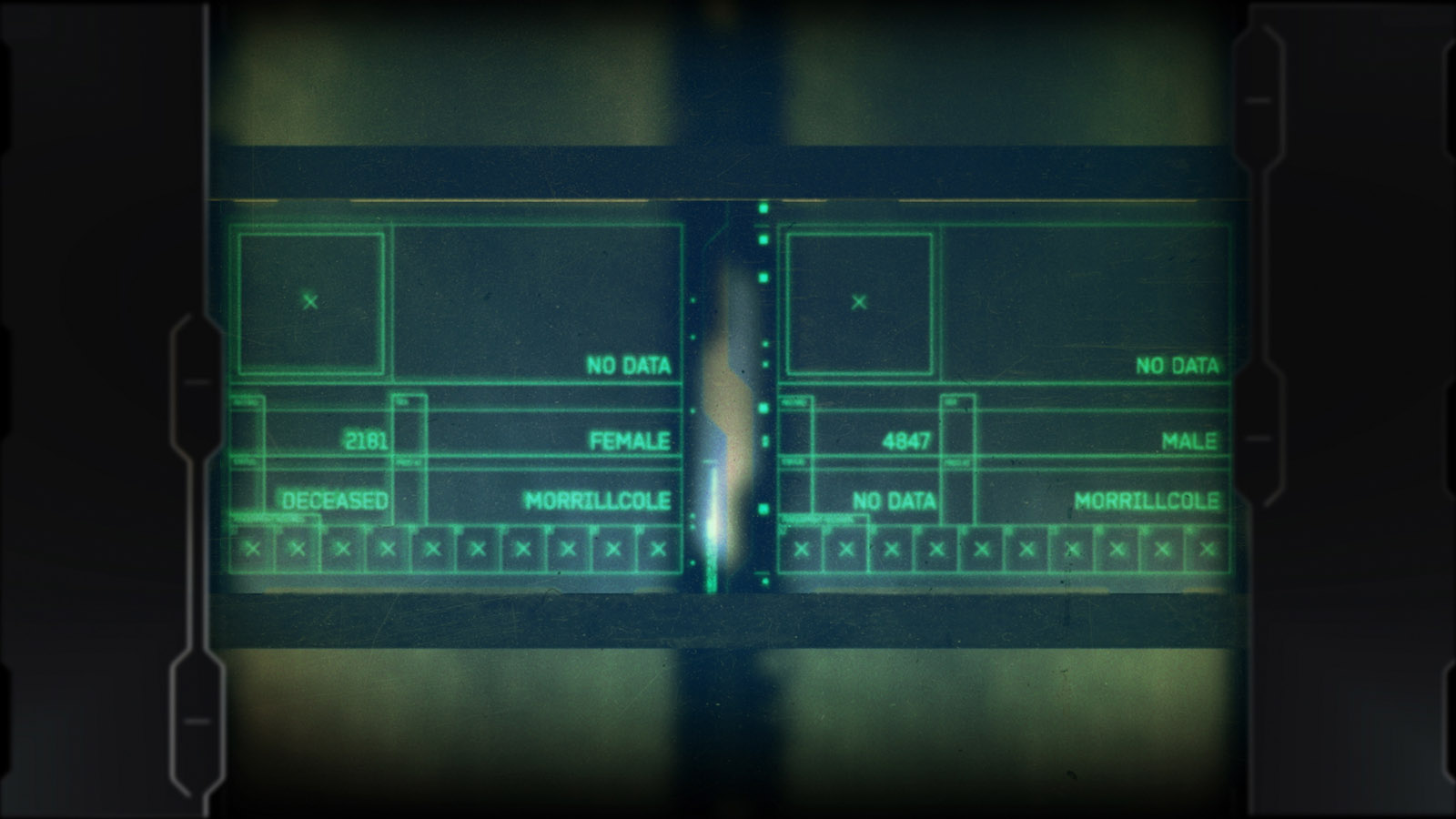
Market
The market showcased the local culture and diversity of languages in LA 2049. With an open brief to create logos and signage, we had fun inventing colourful brands, characters, icons and typographic treatments, drawing on kanji, latin, cyrillic and arabic letterforms.
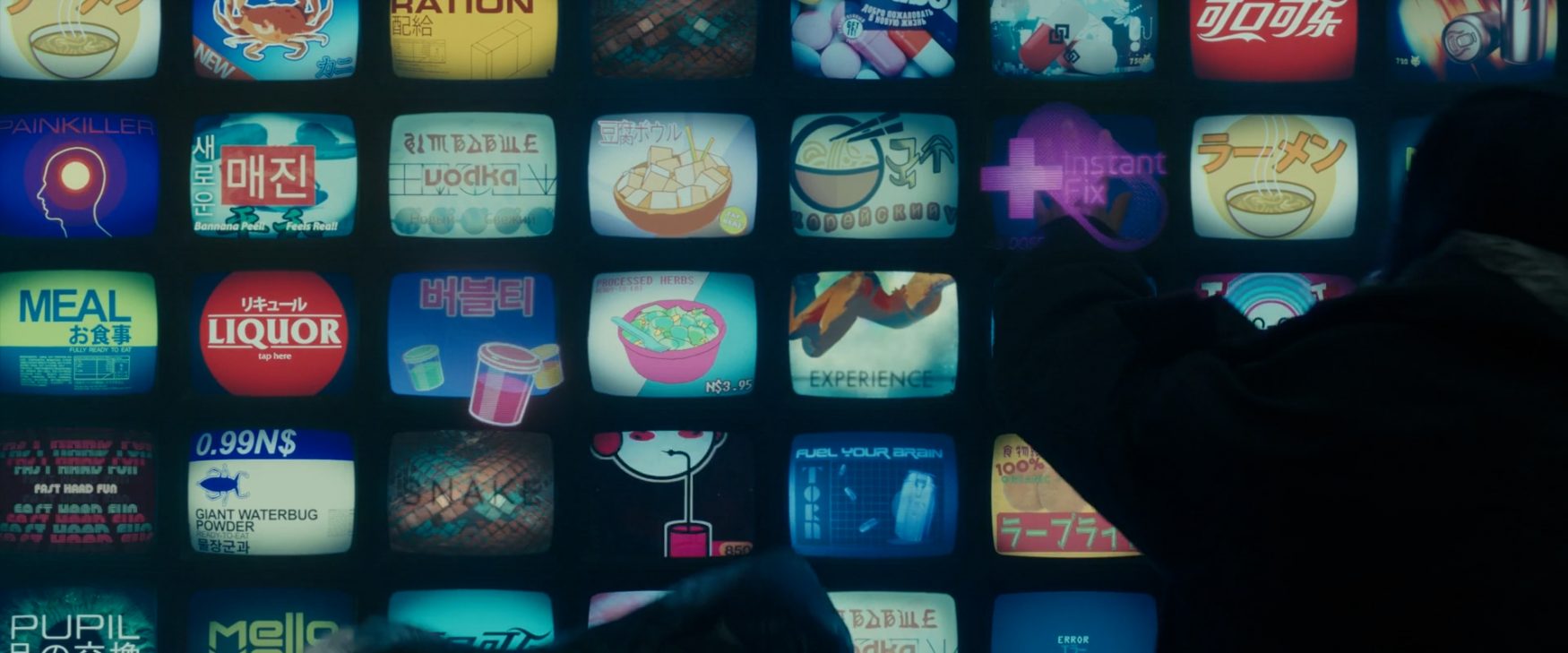
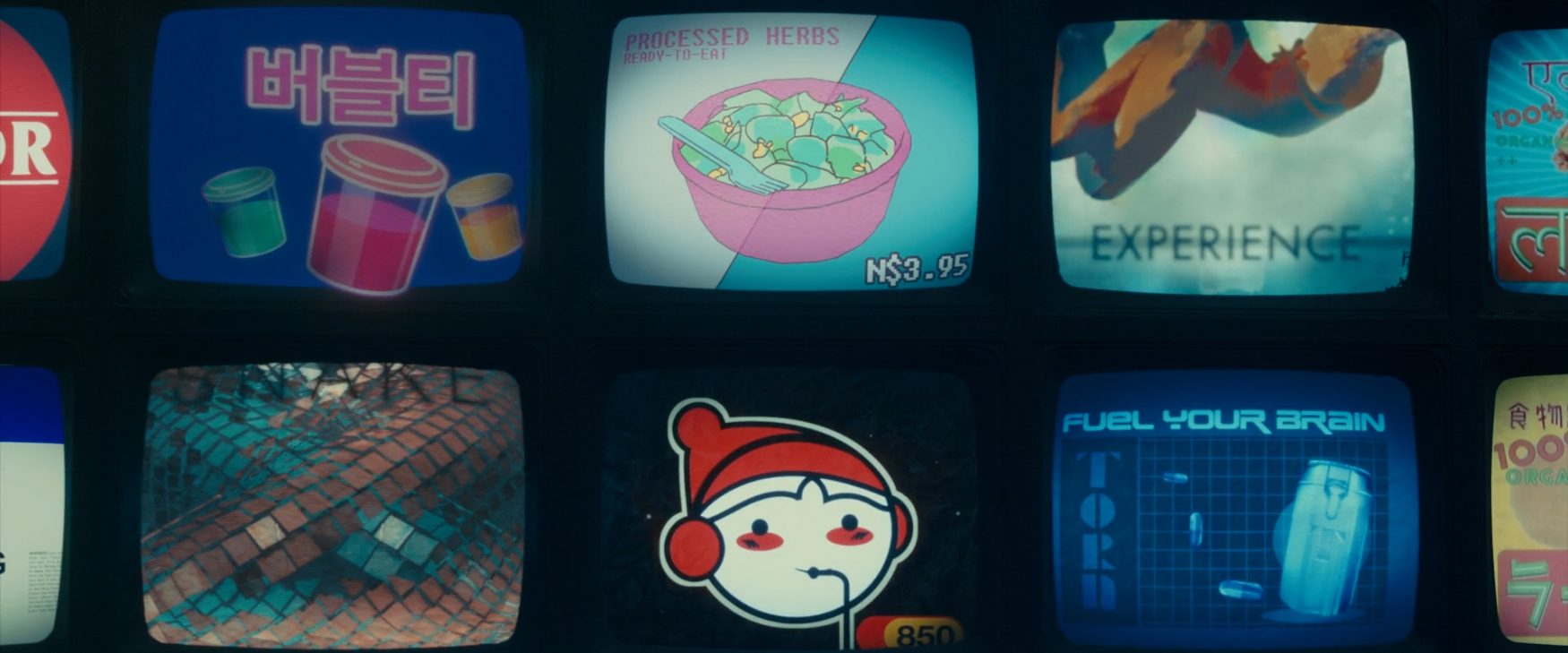
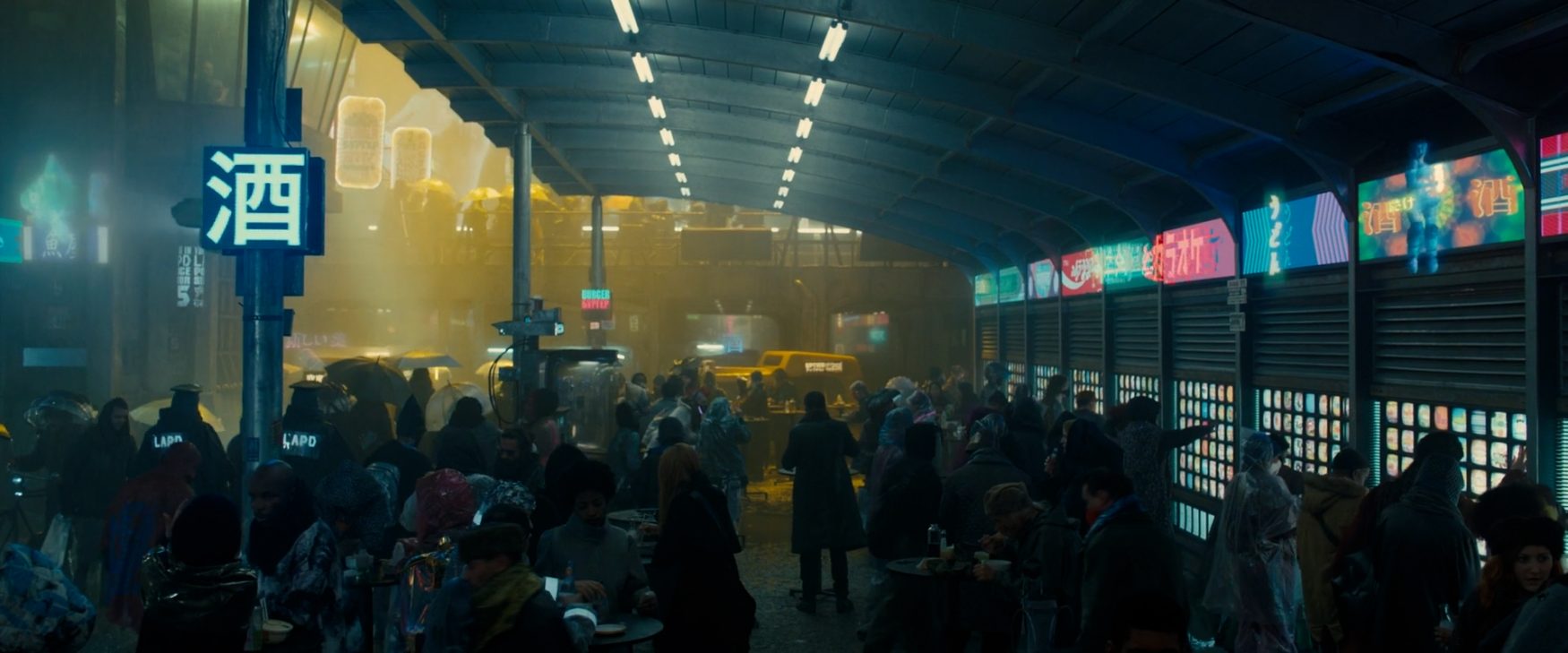
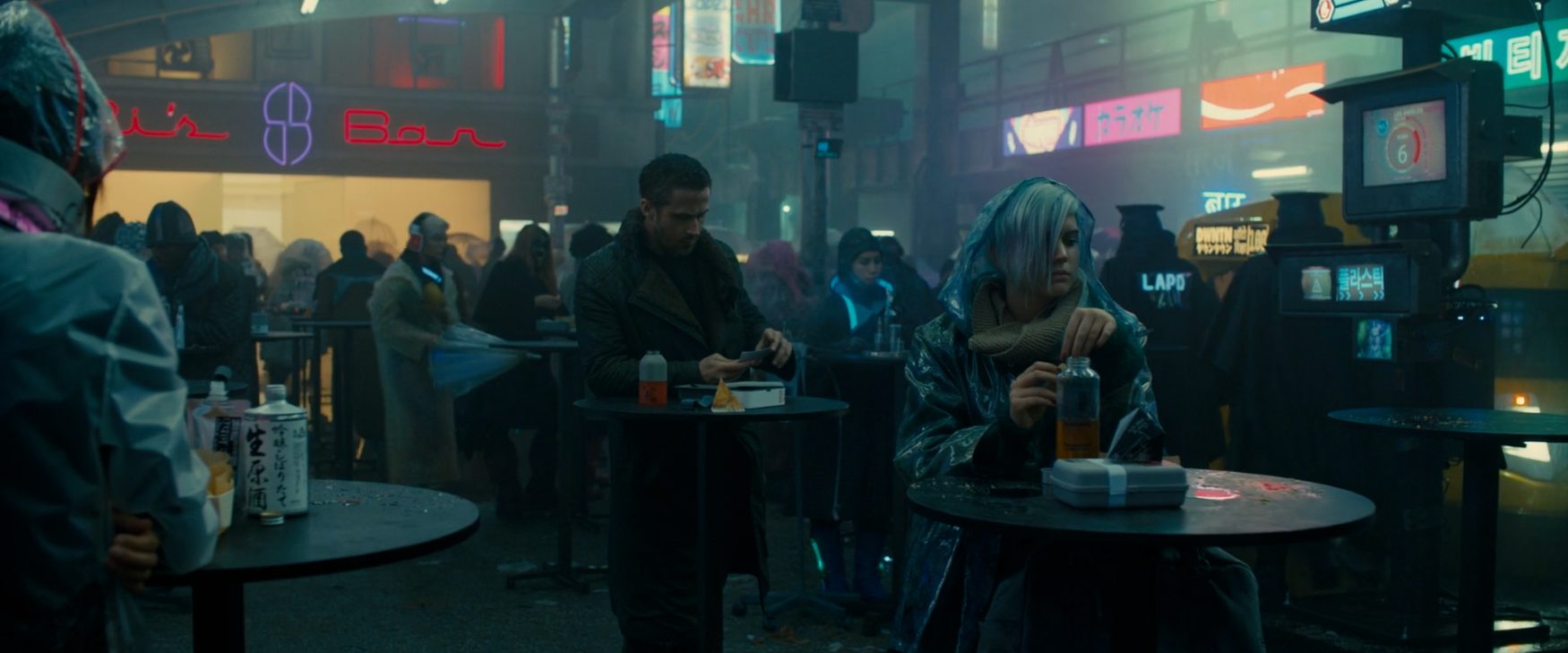
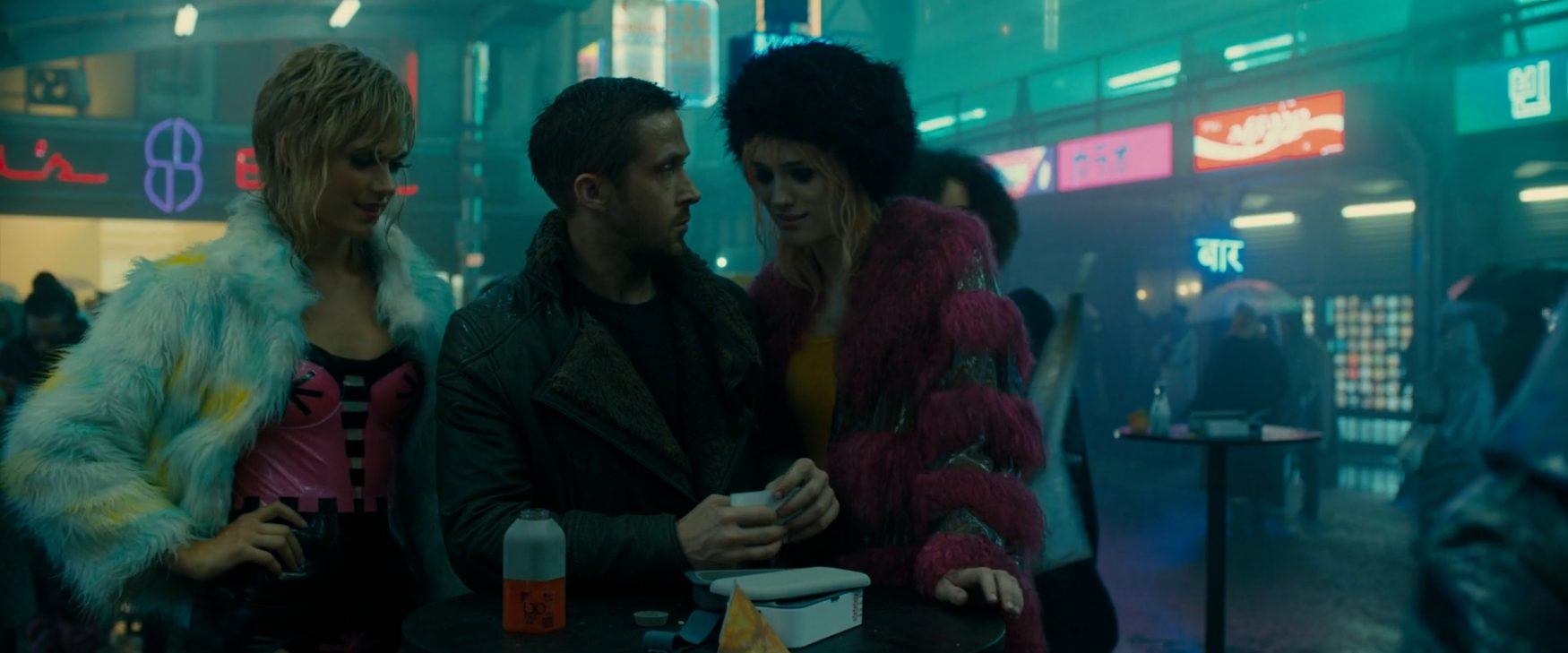
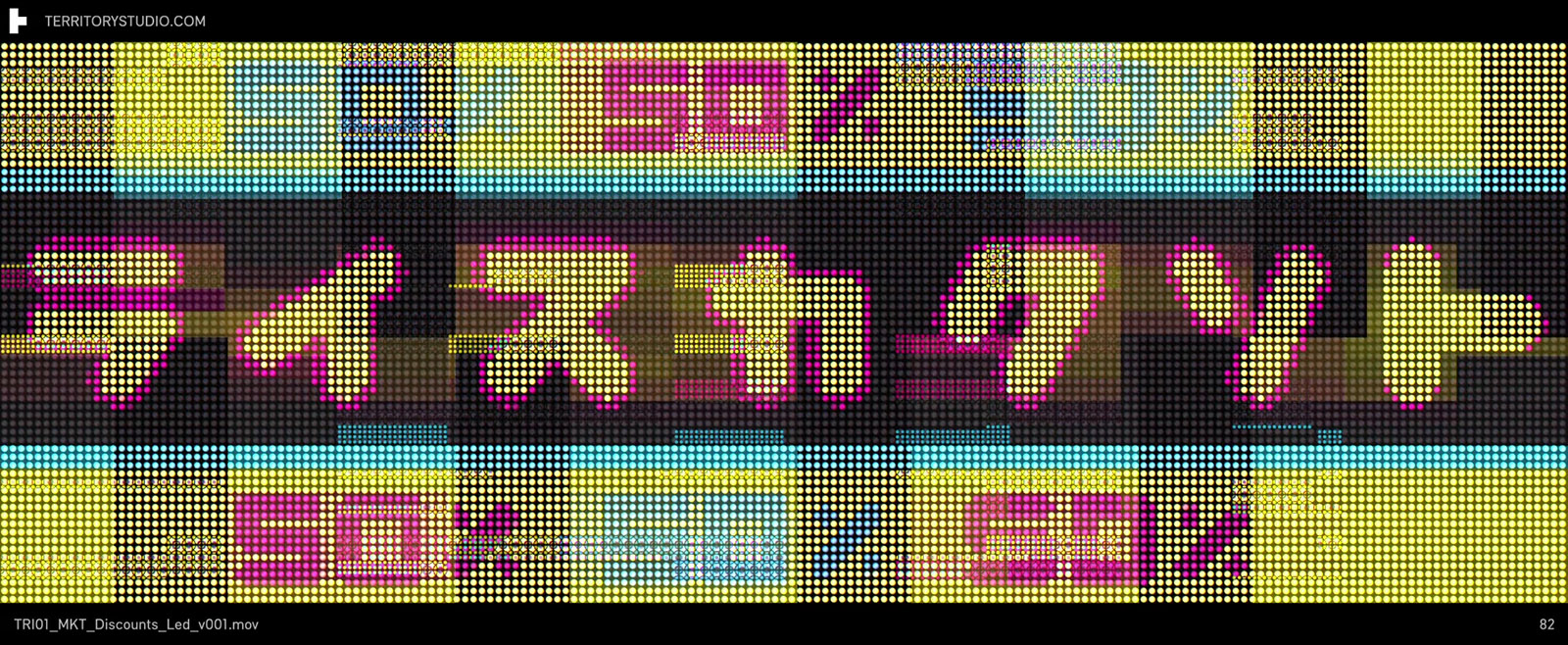
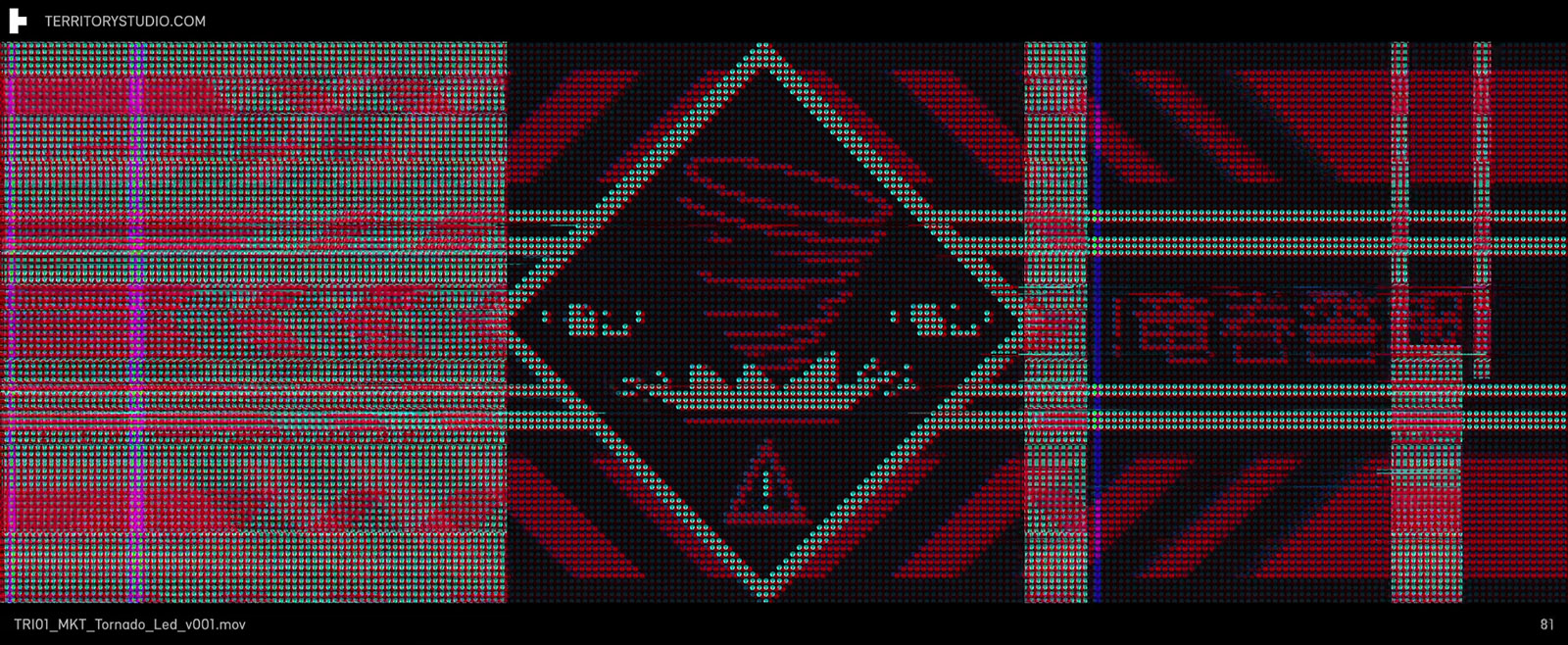
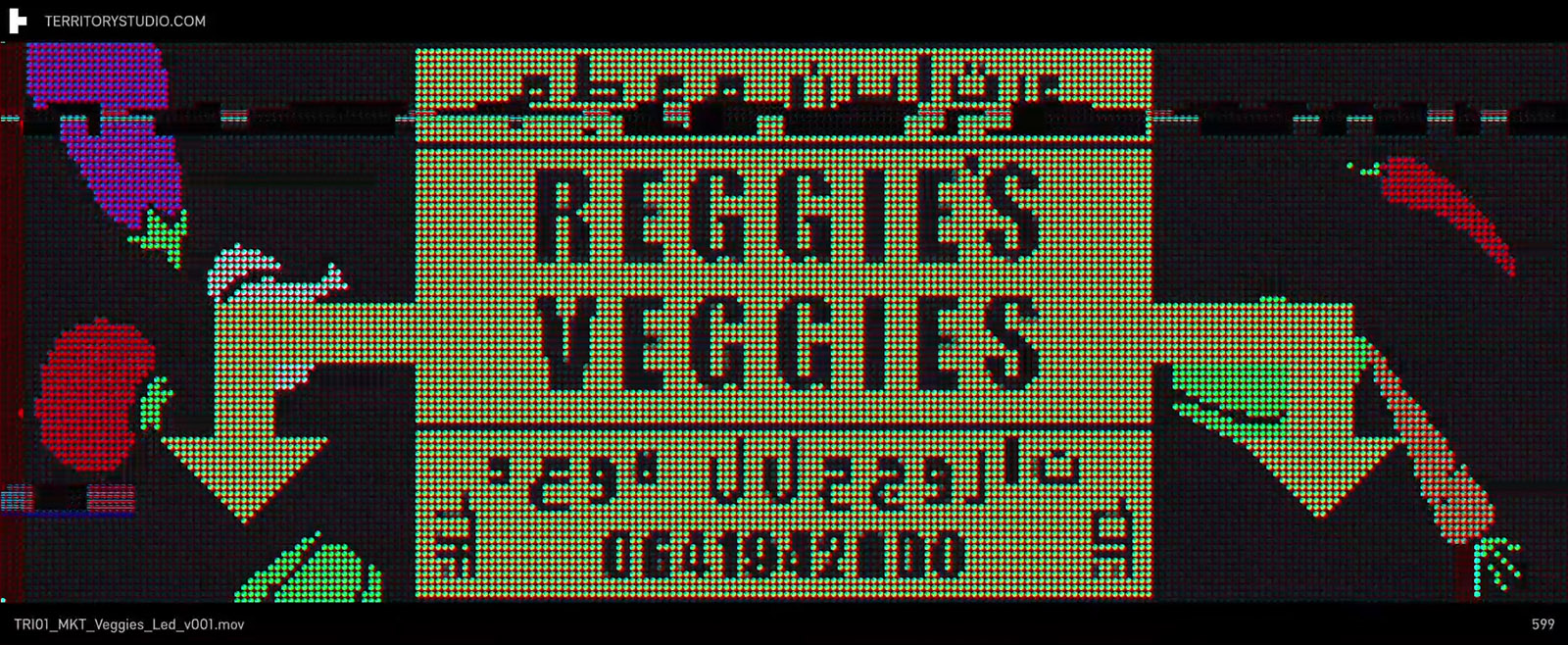
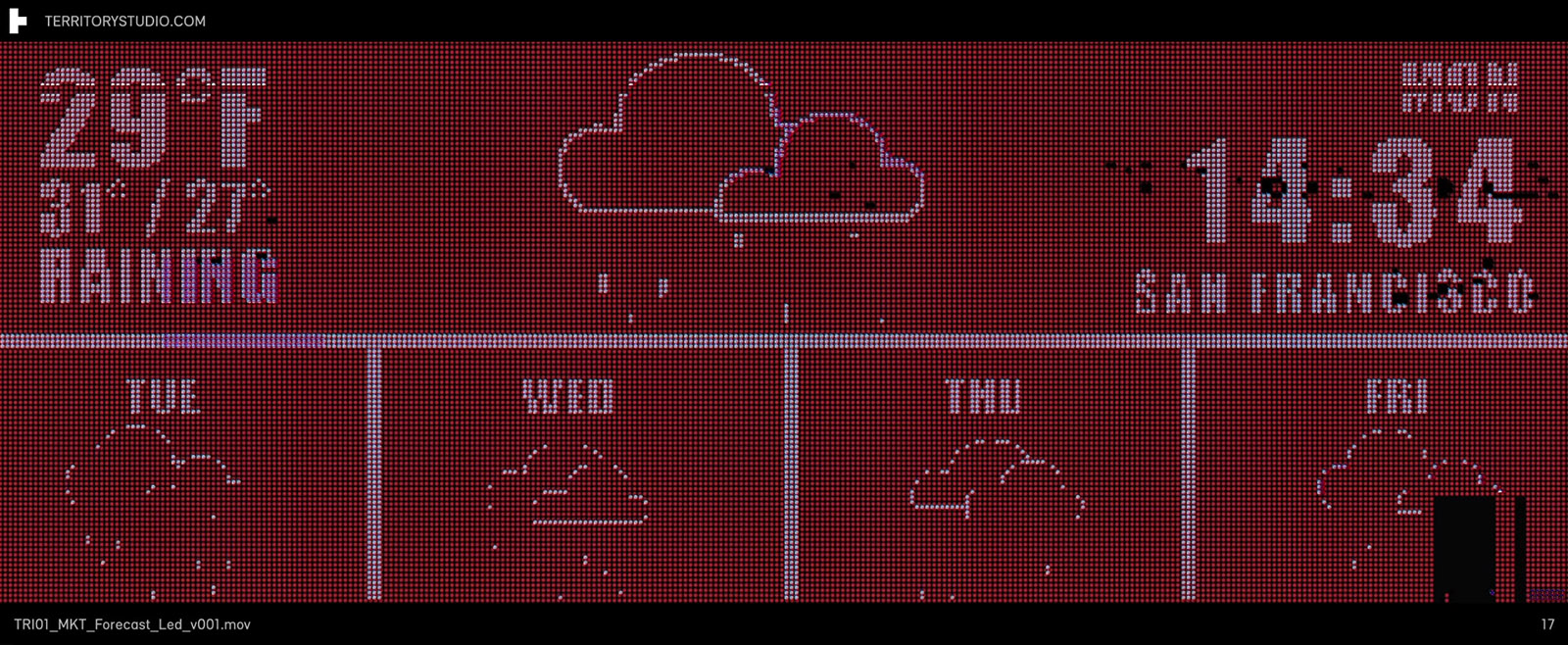
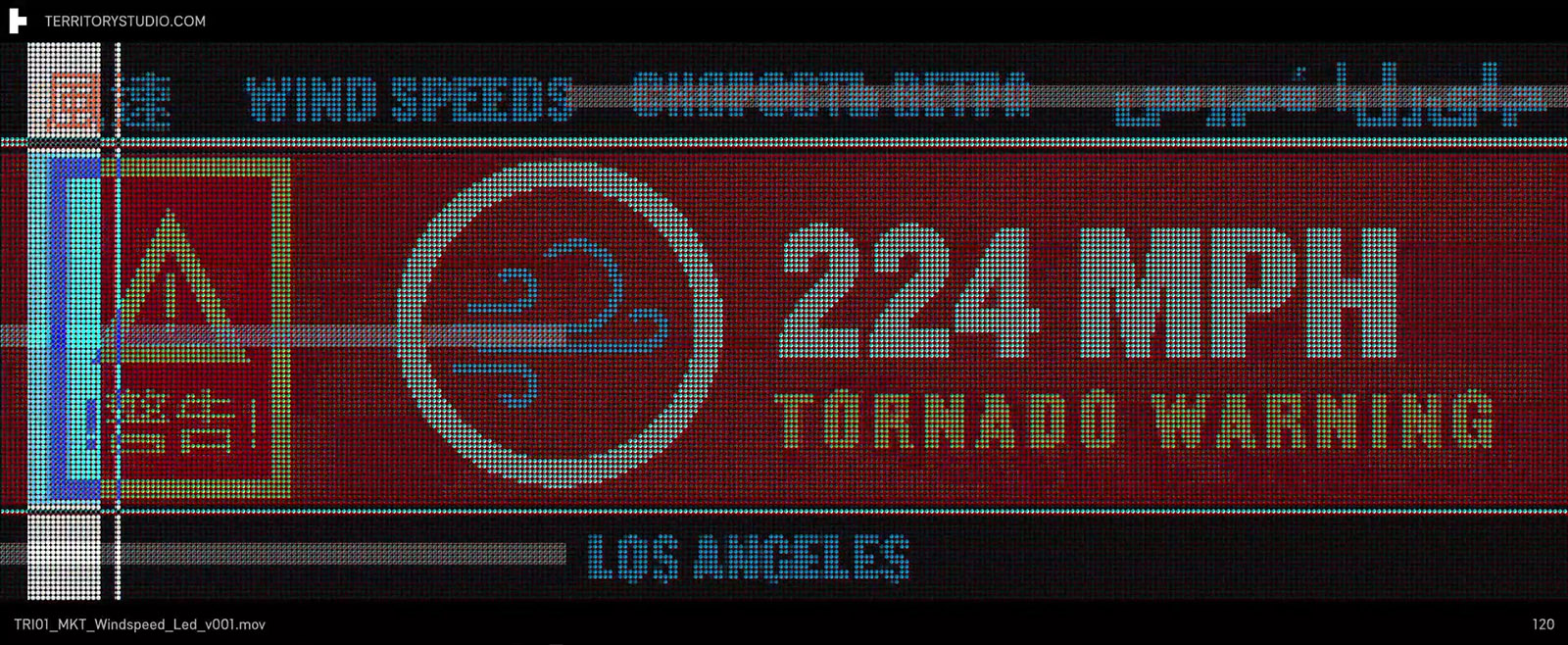
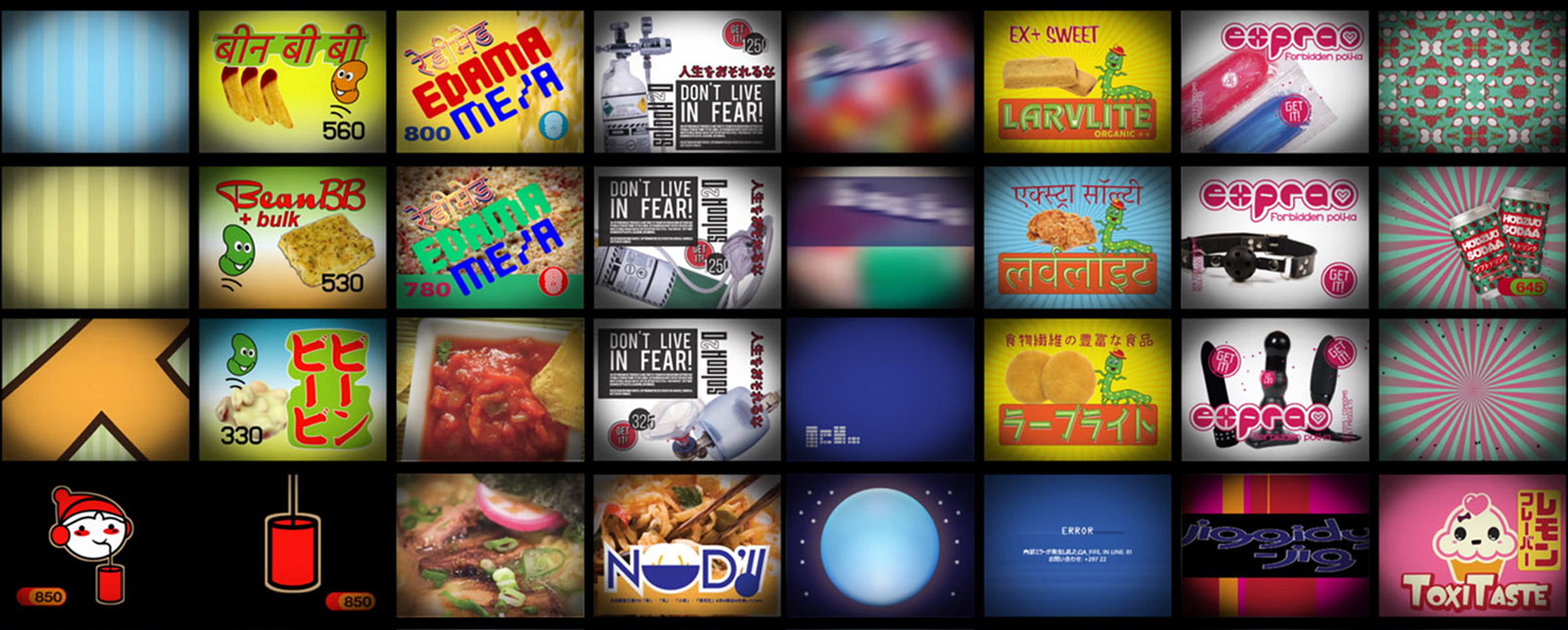
Wallace Corp: Limo and Spinner
In Blade Runner 2049, Wallace Corp represents wealth and power, as reflected in the corporation’s technology. Our pure, minimal and geometric black and white user interfaces in state of the art vehicles and environments stand in sharp contrast to the basic technology seen elsewhere in the film, reminding the audience of a polarised world.
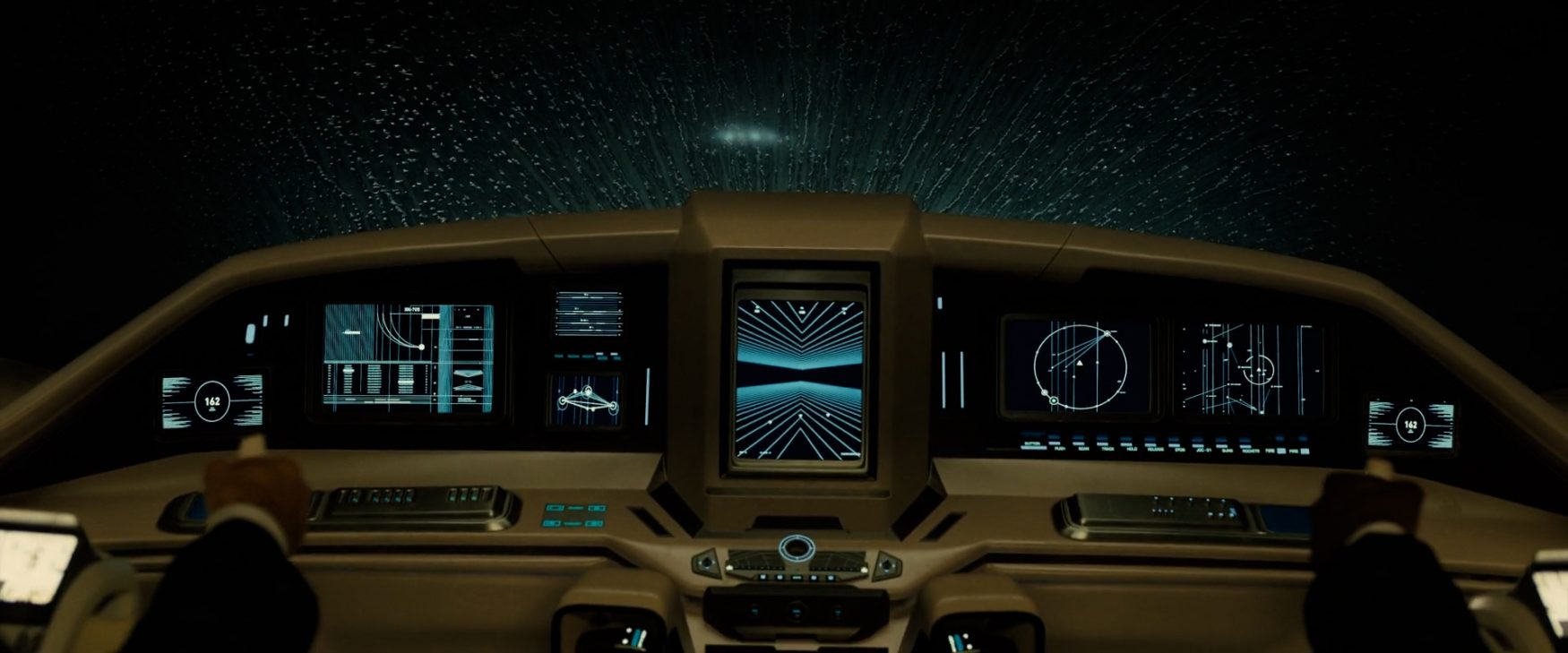
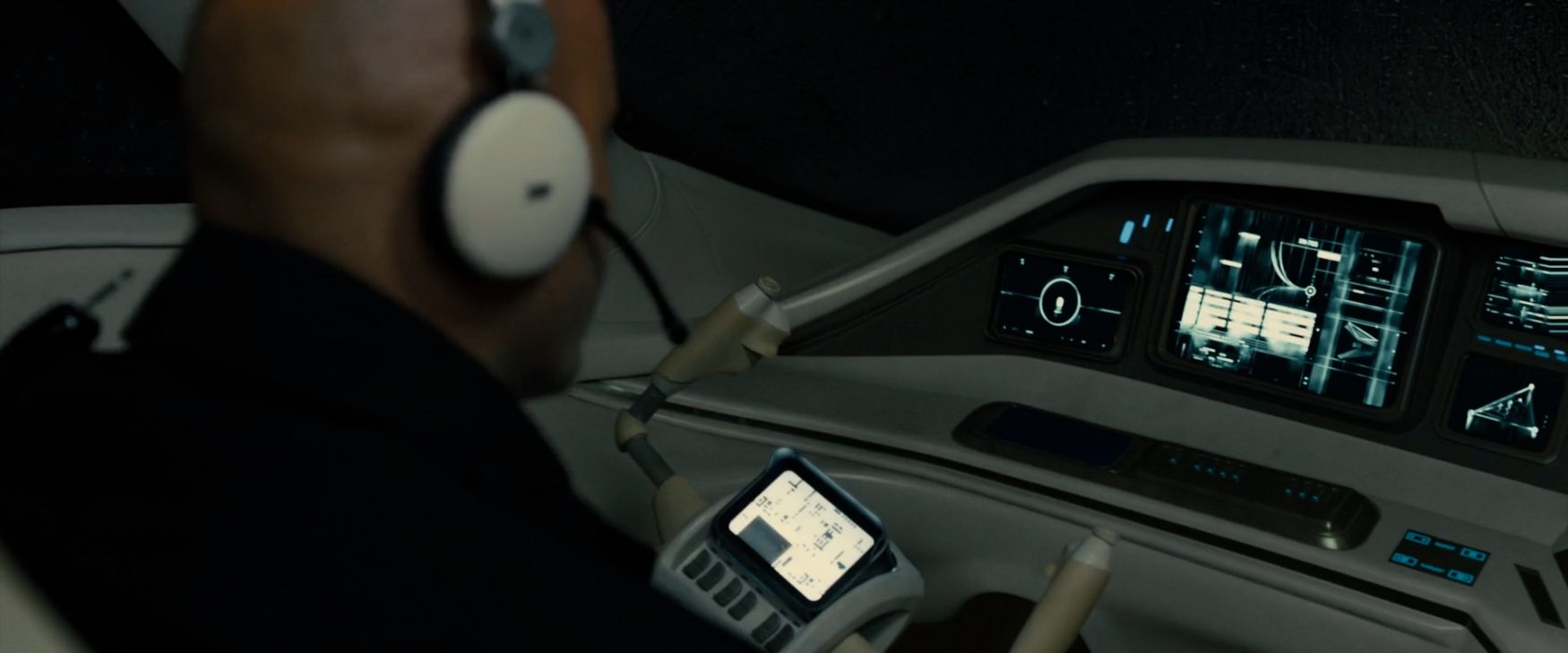
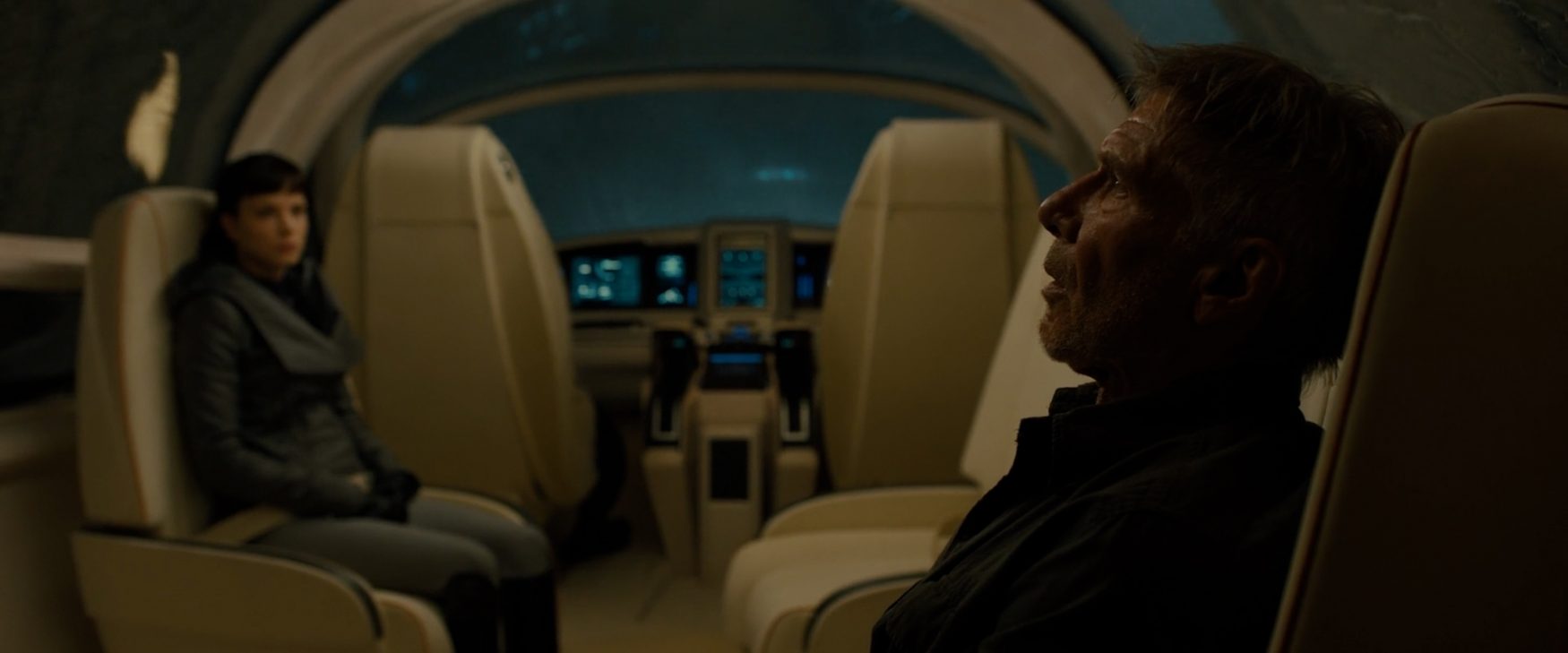
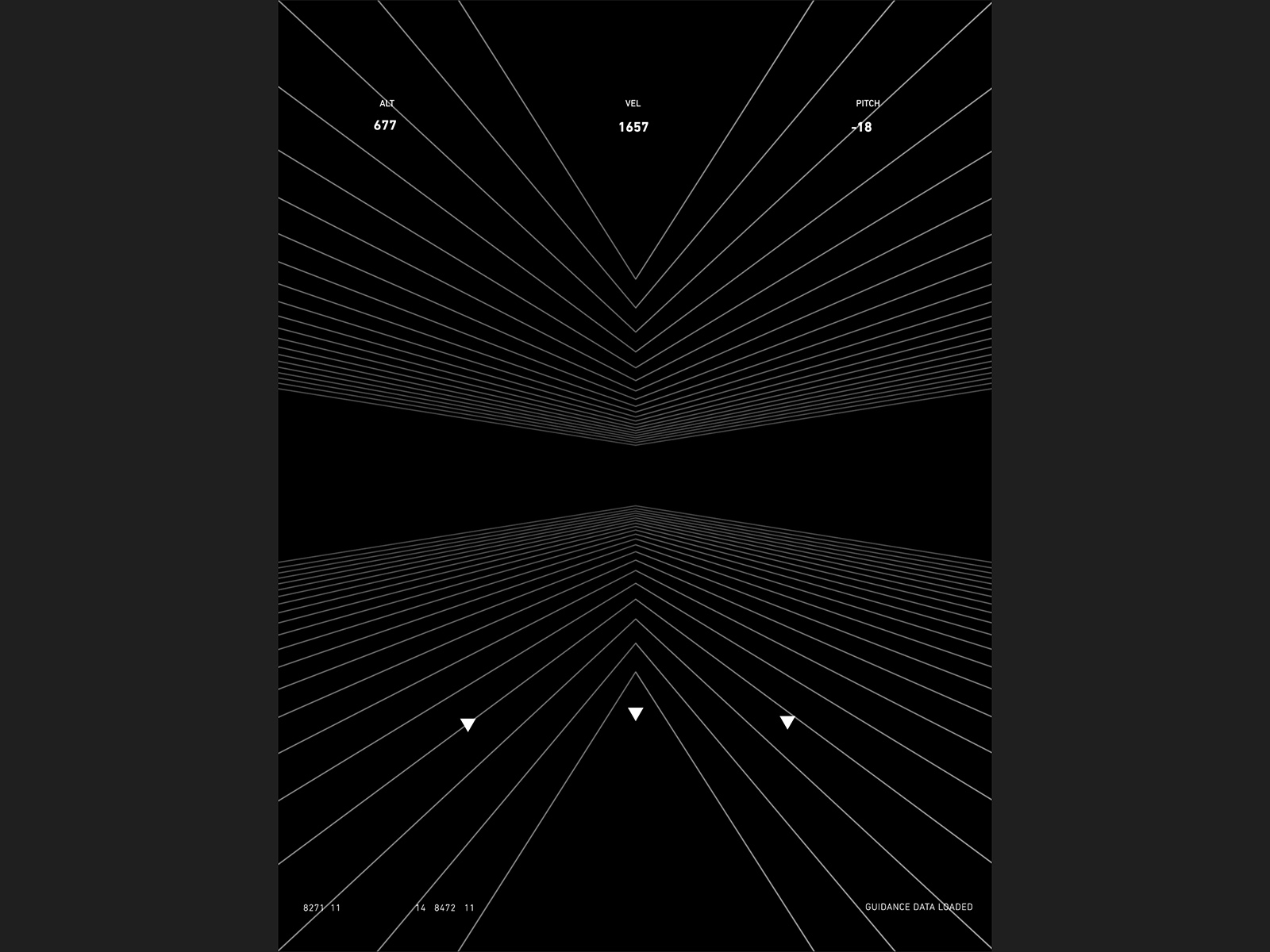
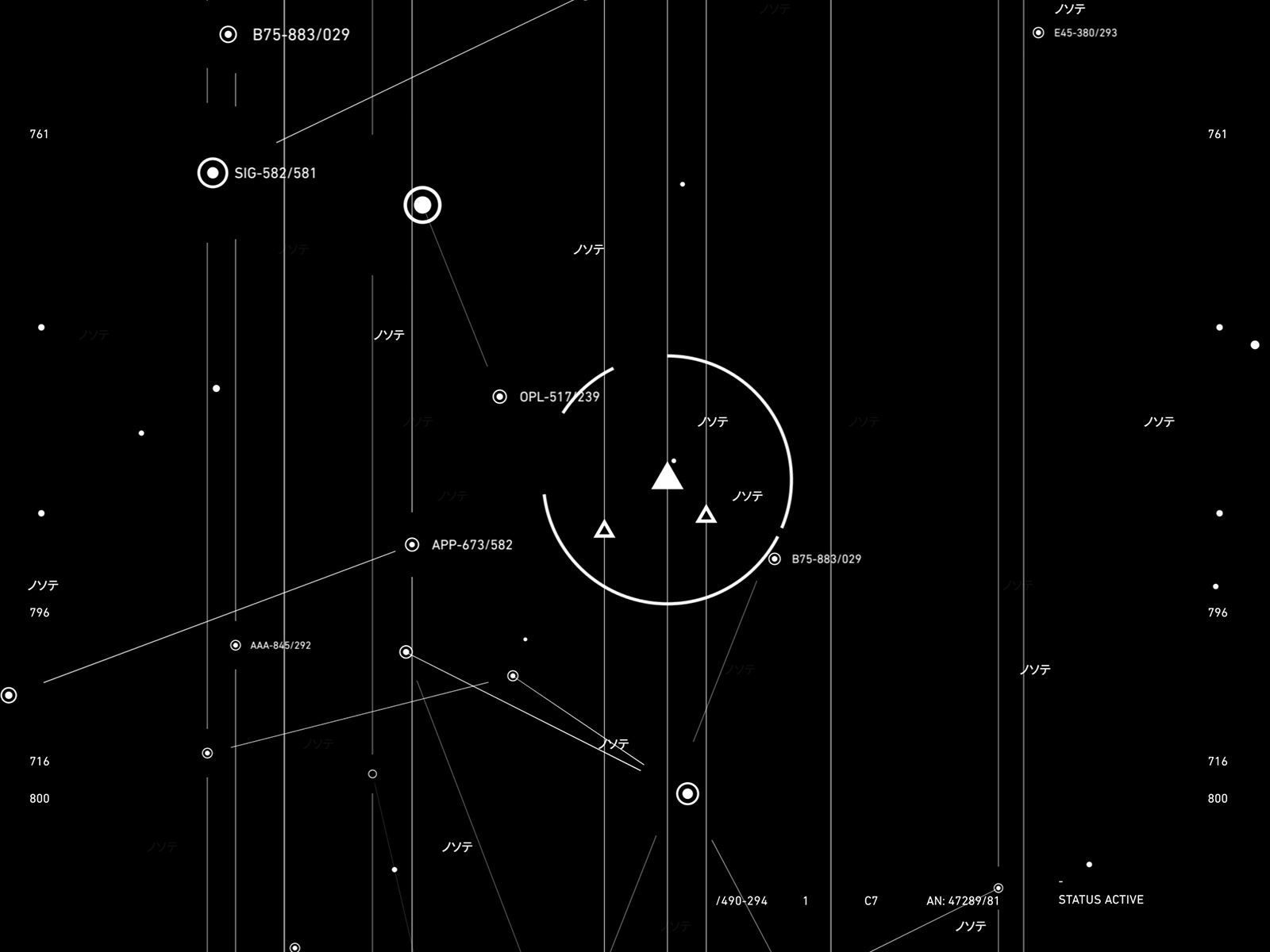

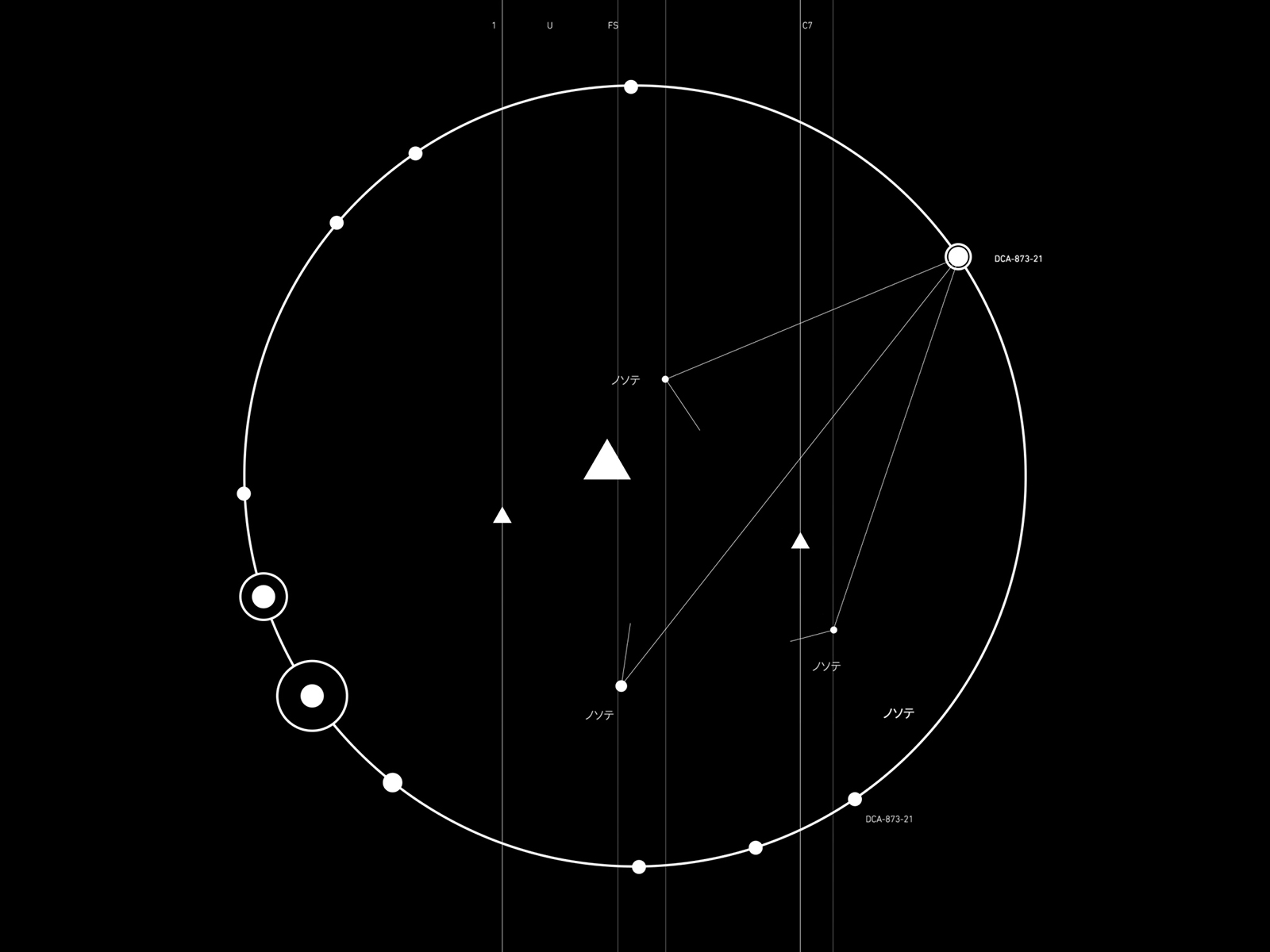
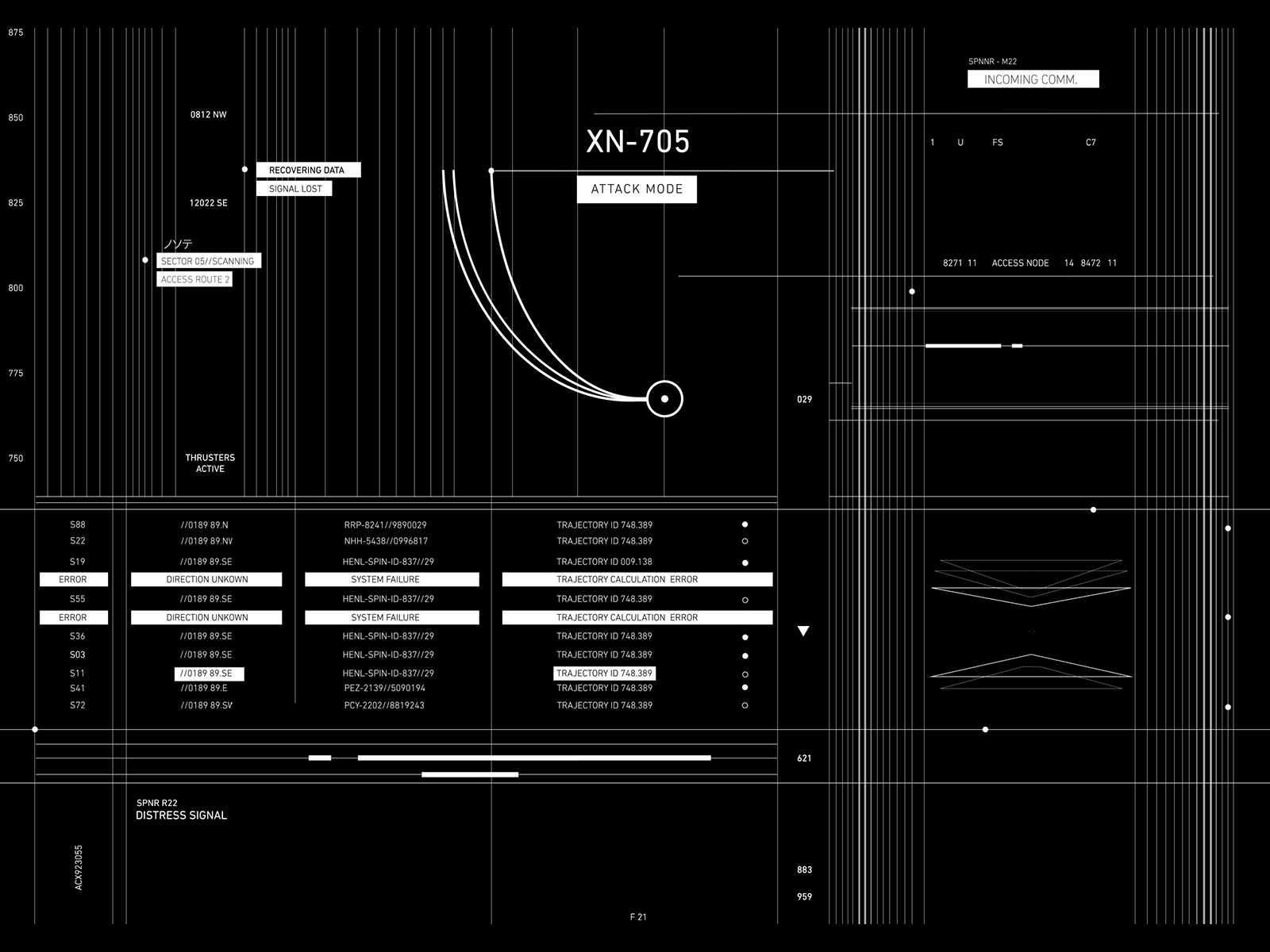
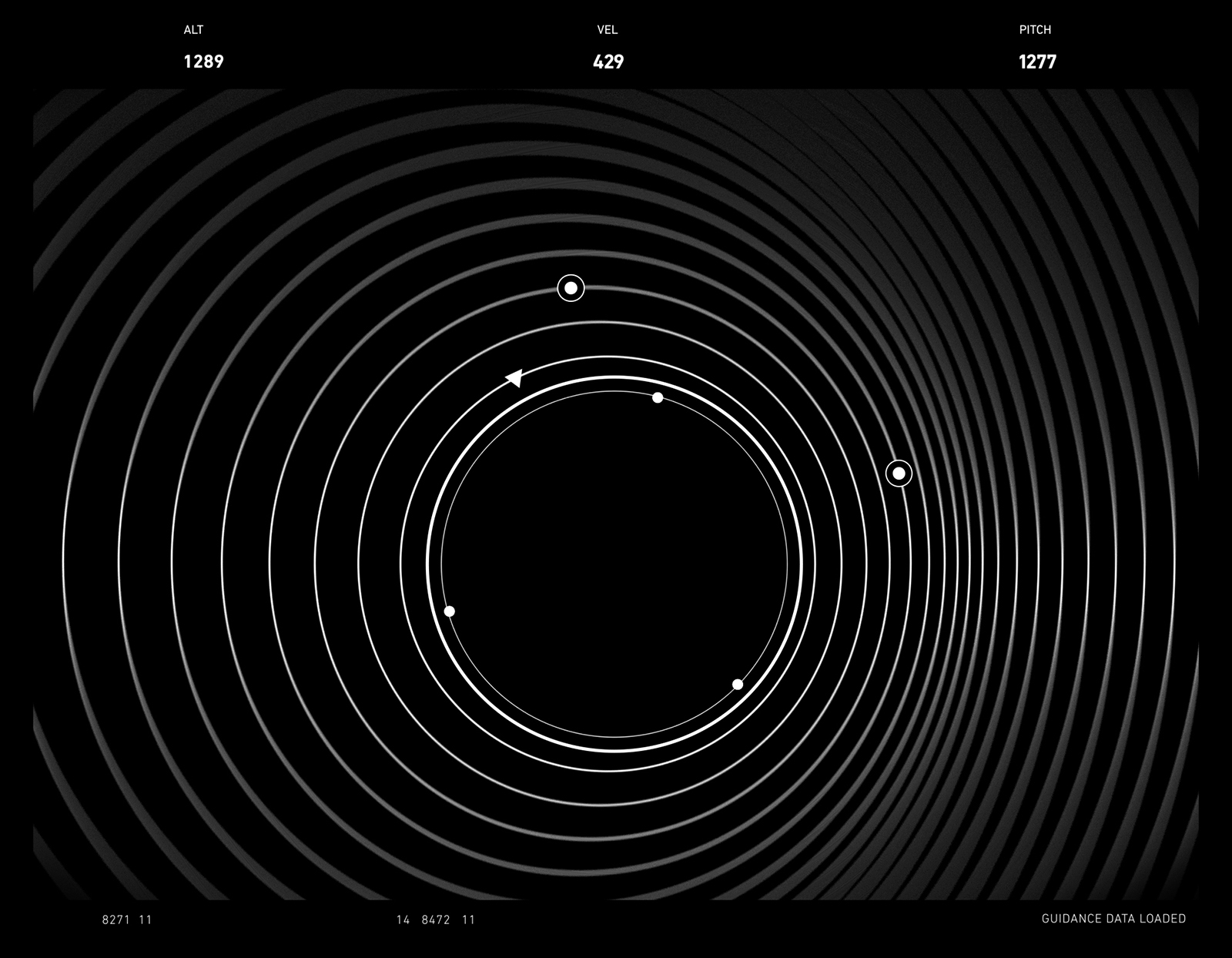
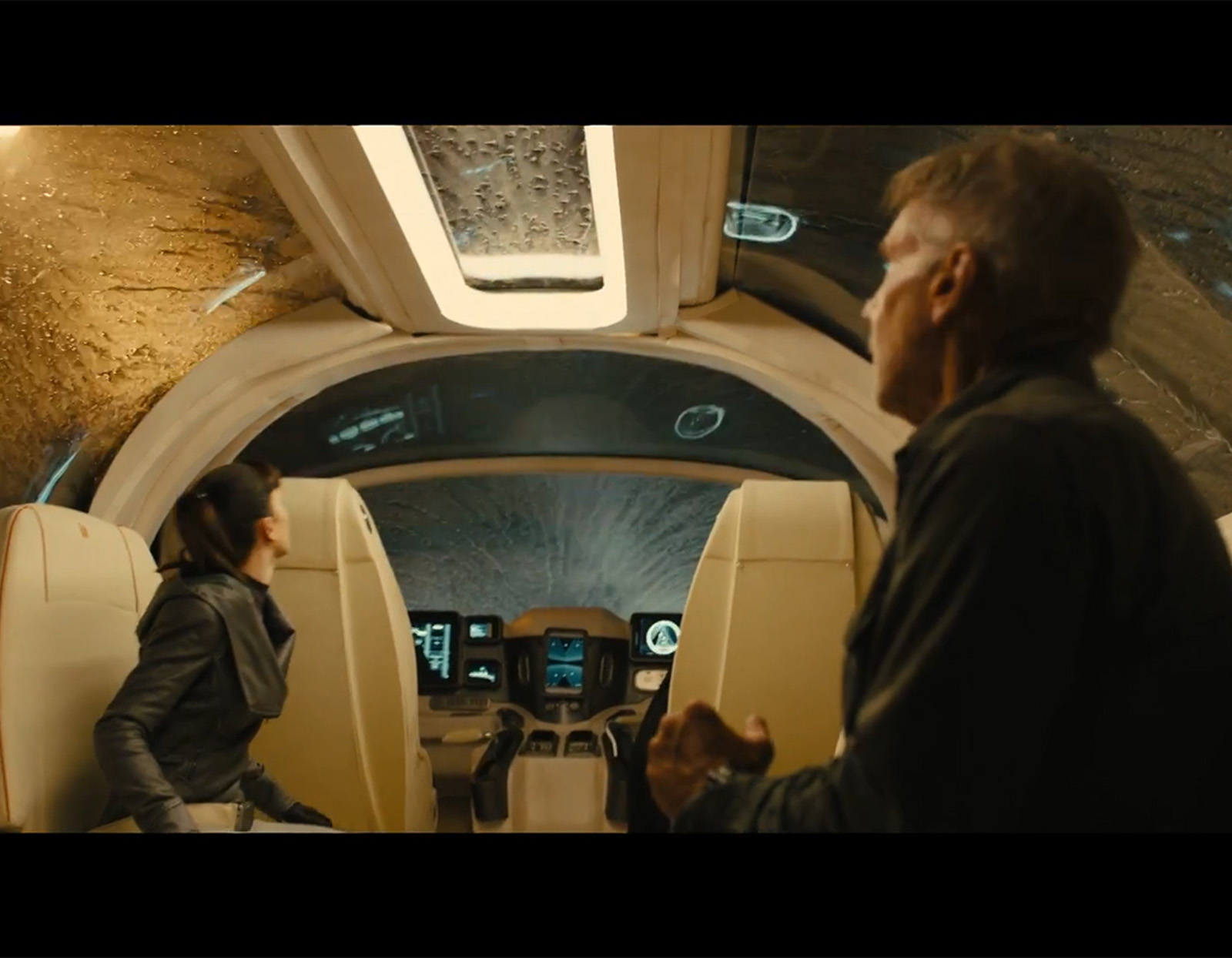
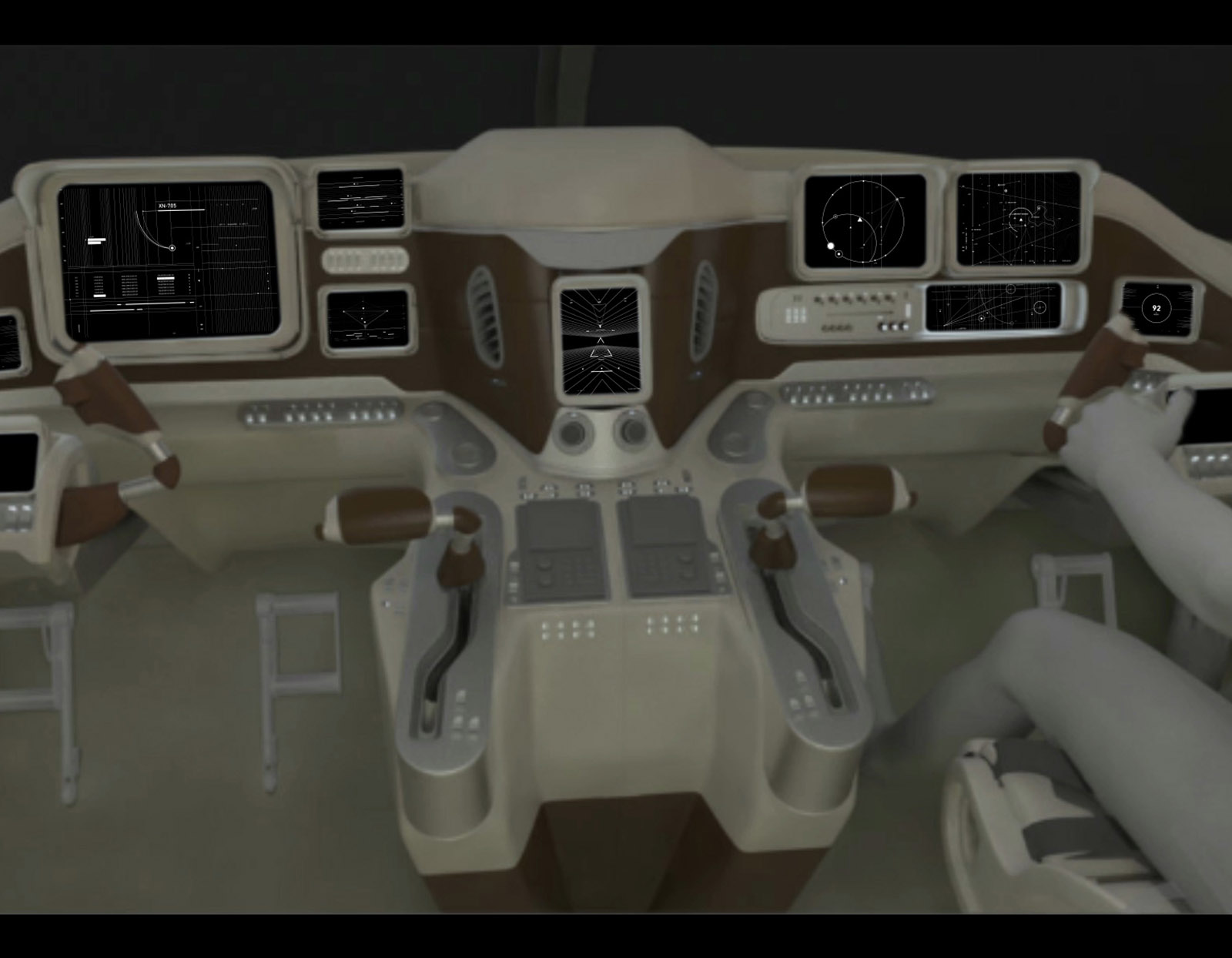
Las Vegas: Deckard's Penthouse
Deckard’s penthouse apartment is reference to the warmth and glamour of 20th Century Las Vegas. A small military scanner looks out on the abandoned city, alerting Deckard and K to an impending attack. Designed to look like a hacked military scanner, the simple interface alludes to the action about to unfold.
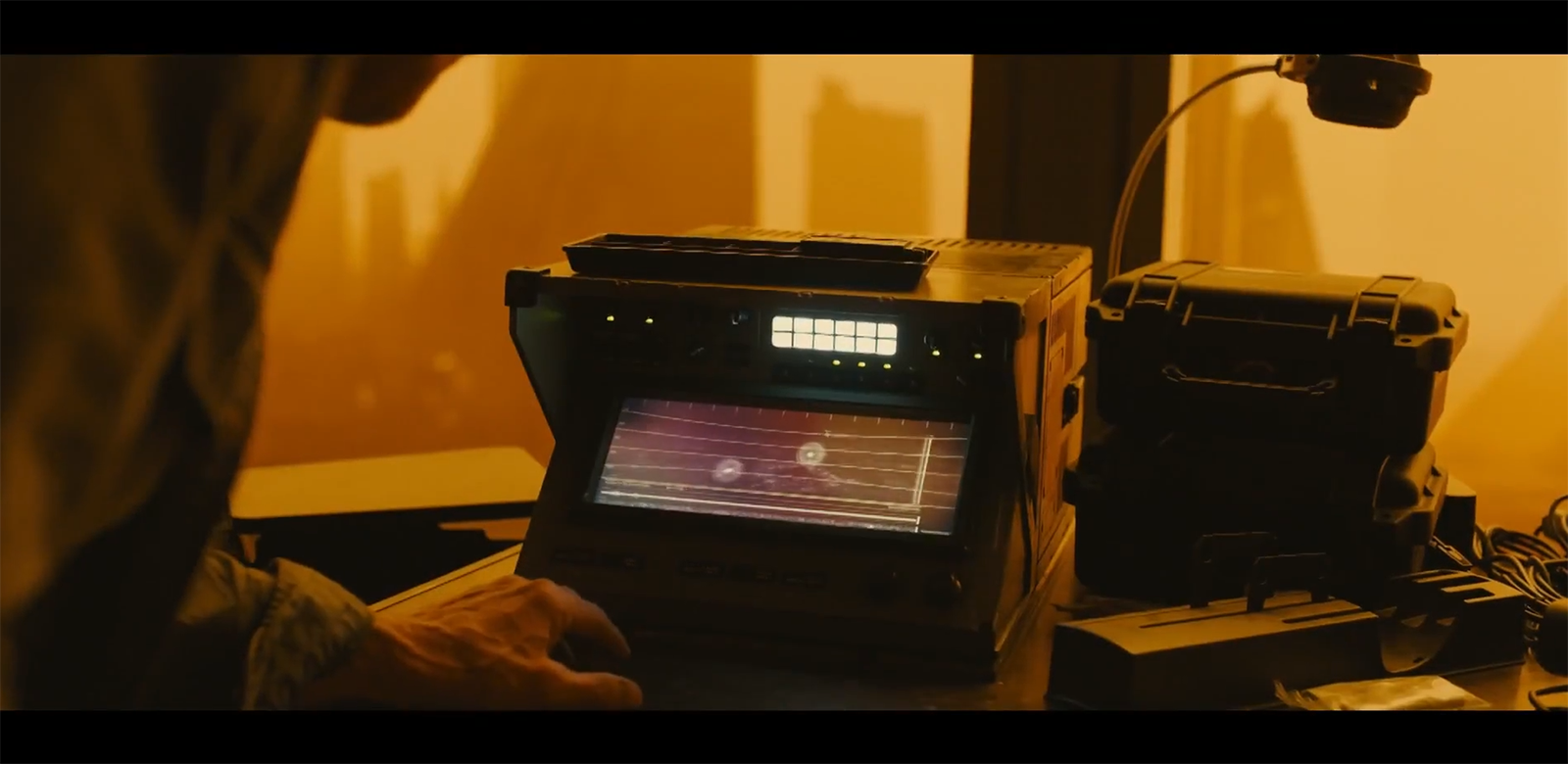
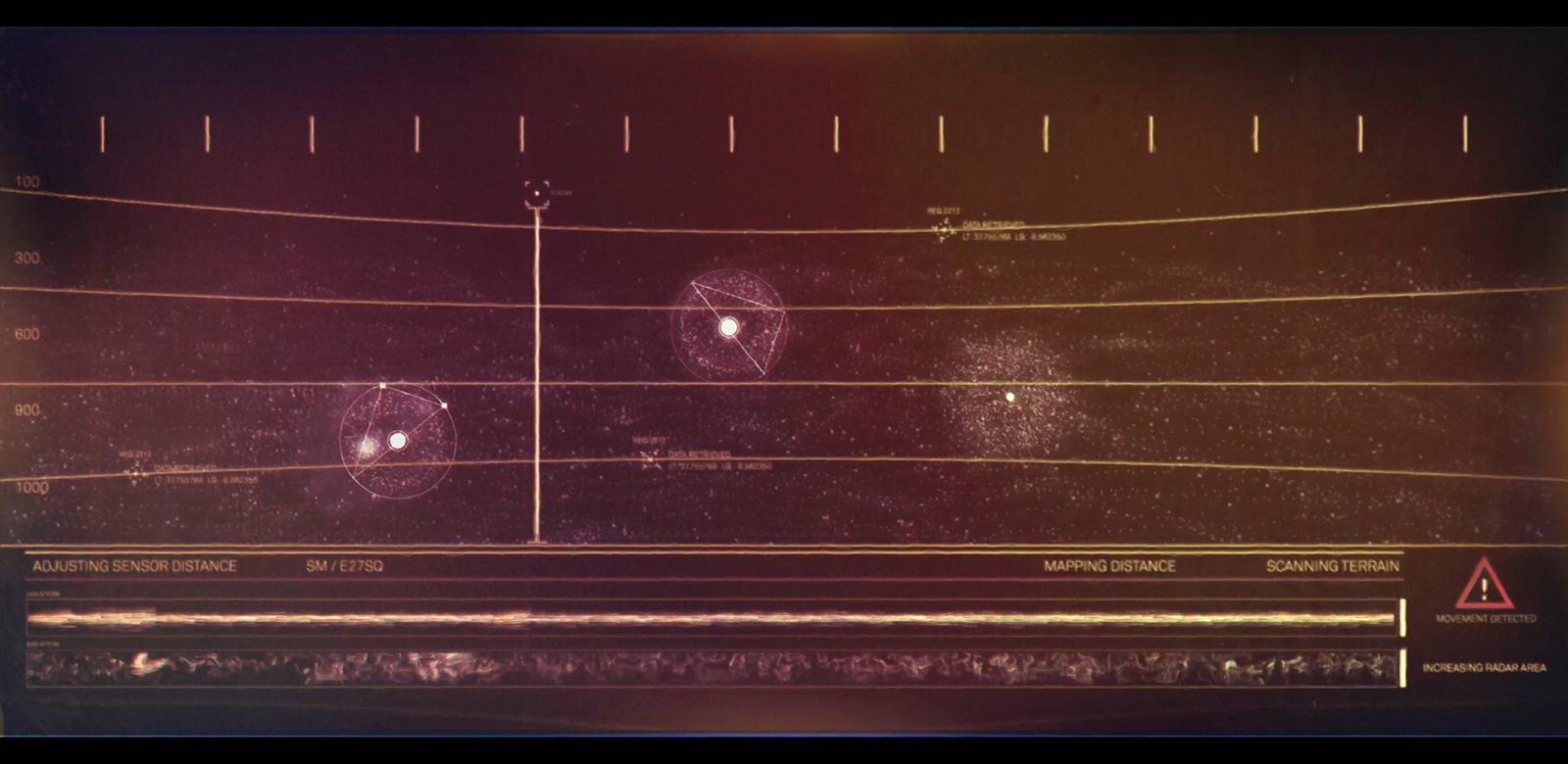
Project Credits
Production
| Director | Denis Villeneuve |
| Production Designer | Dennis Gassner |
| Supervising Art Director | Paul Inglis |
| Director of Photography | Roger Deakins |
| Lead Graphic Designer | Laura Dishington |
| Graphic Designer | Enikő Bognár |
| Assistant Graphic Designer | Agi Maza |
